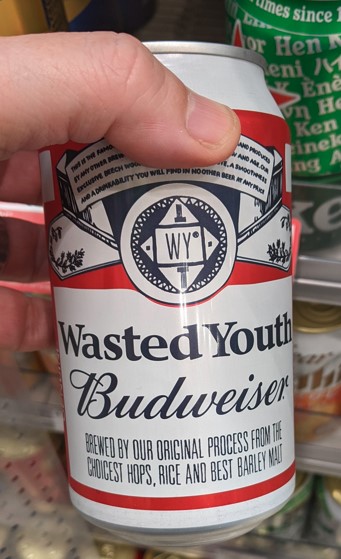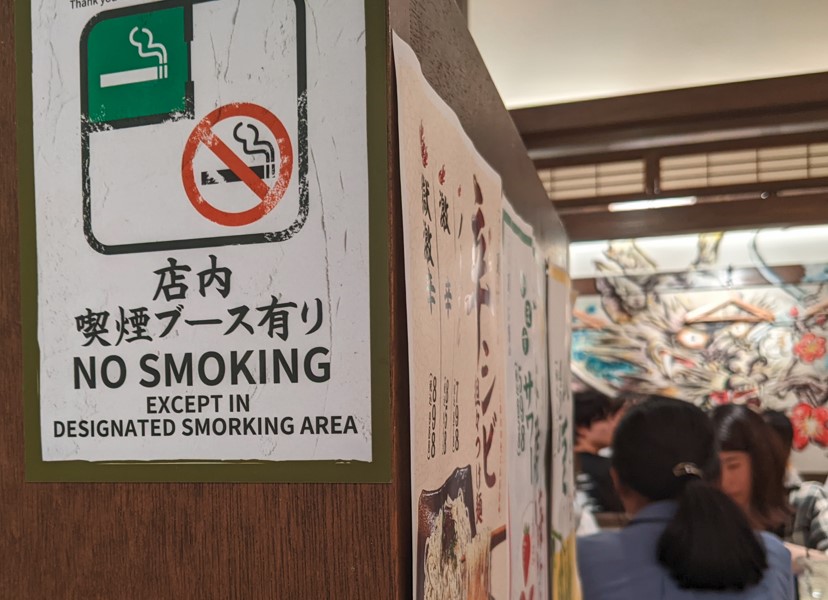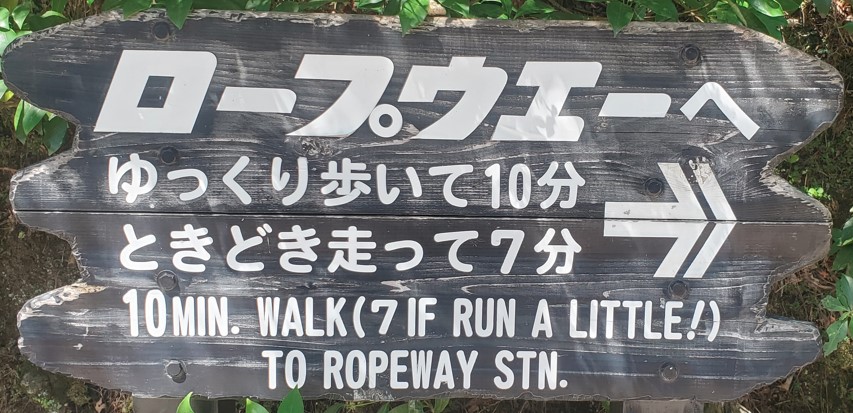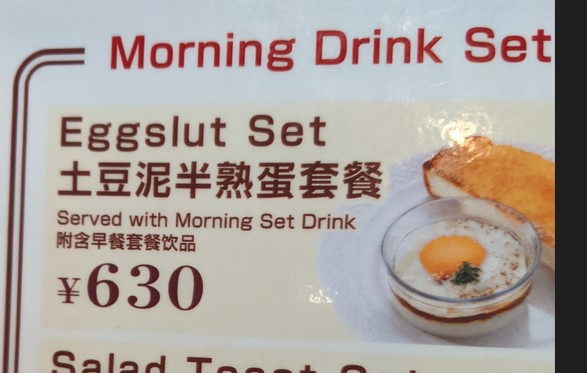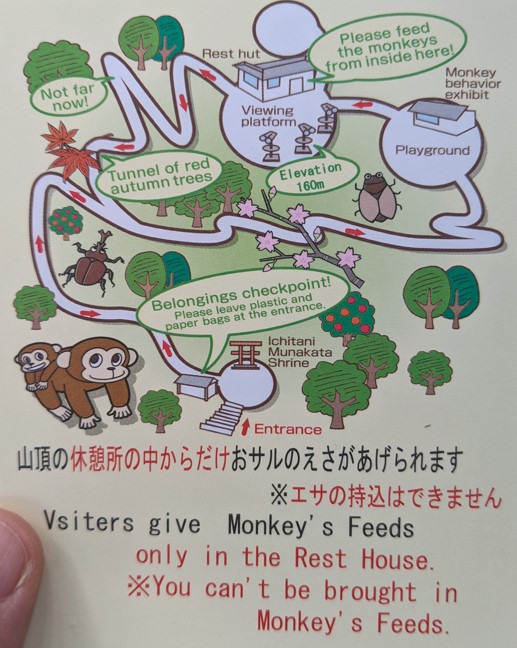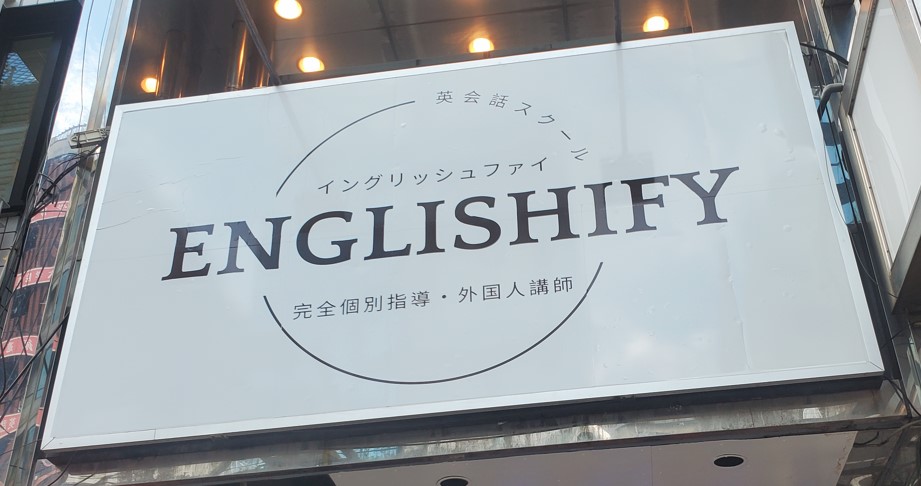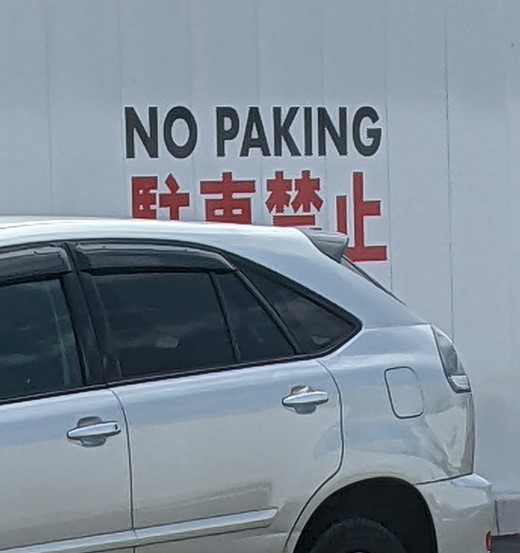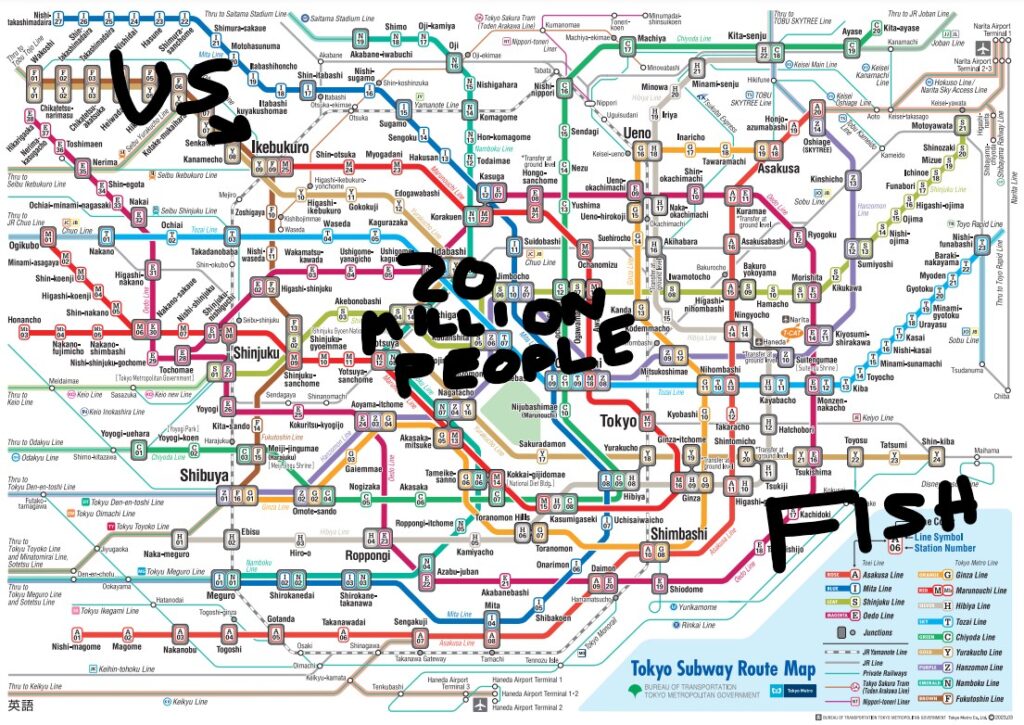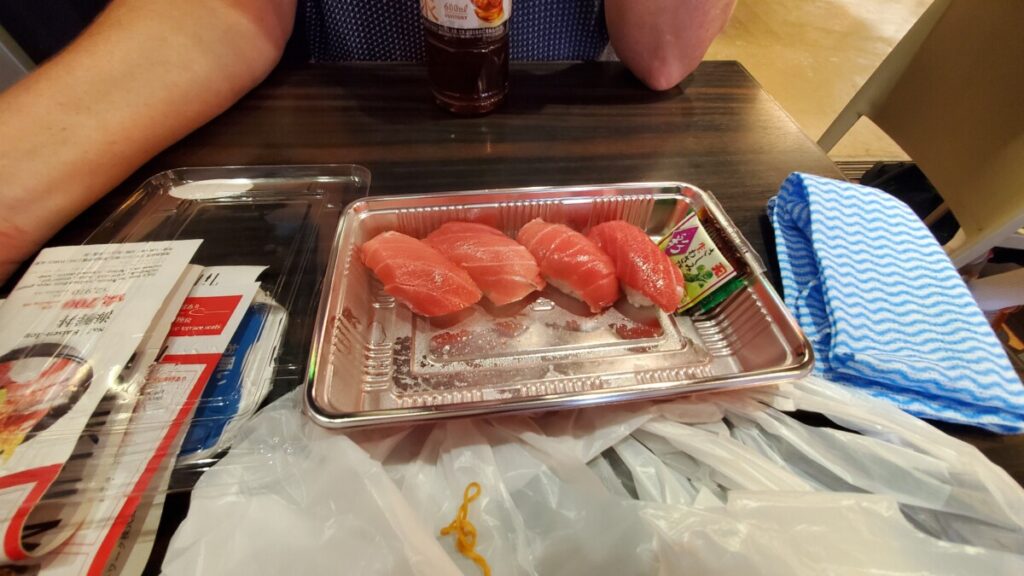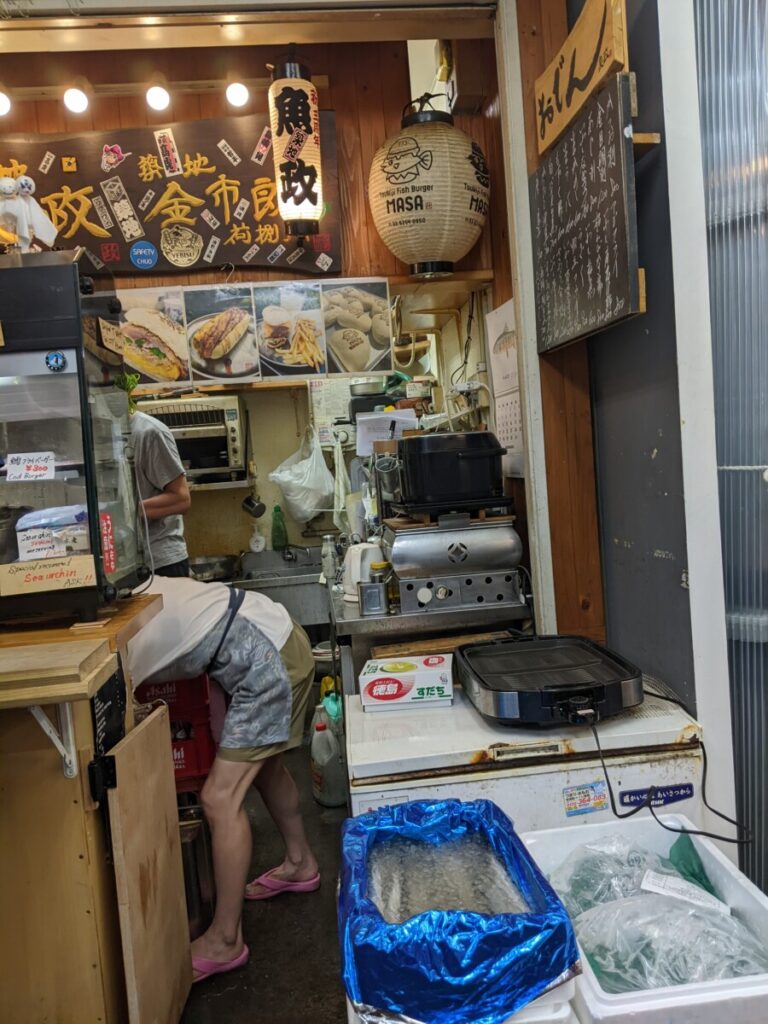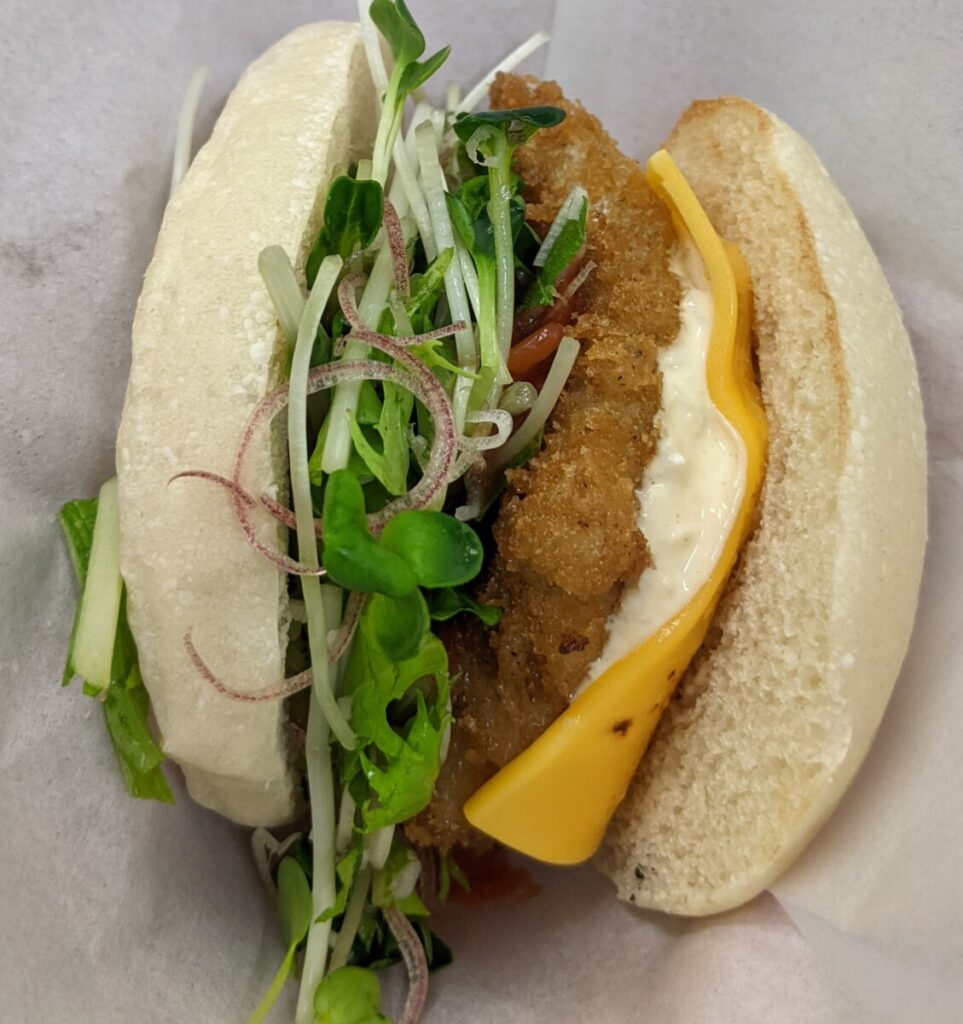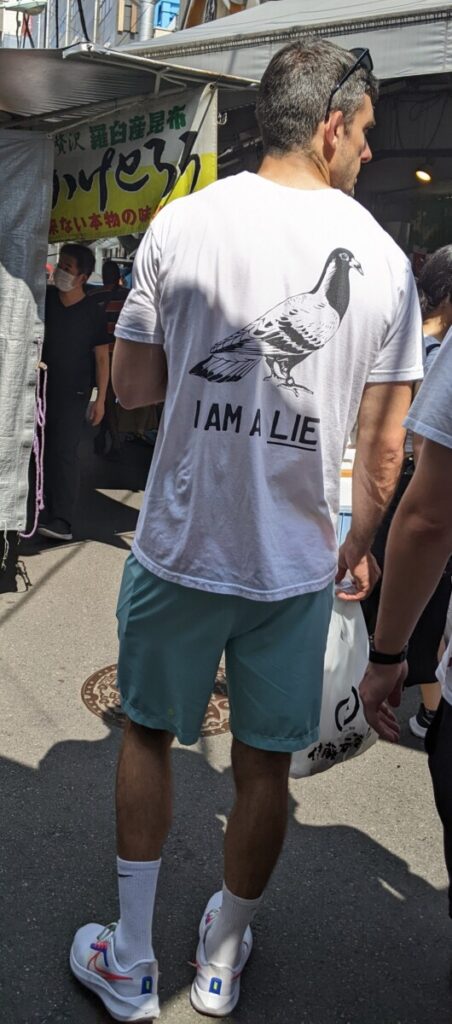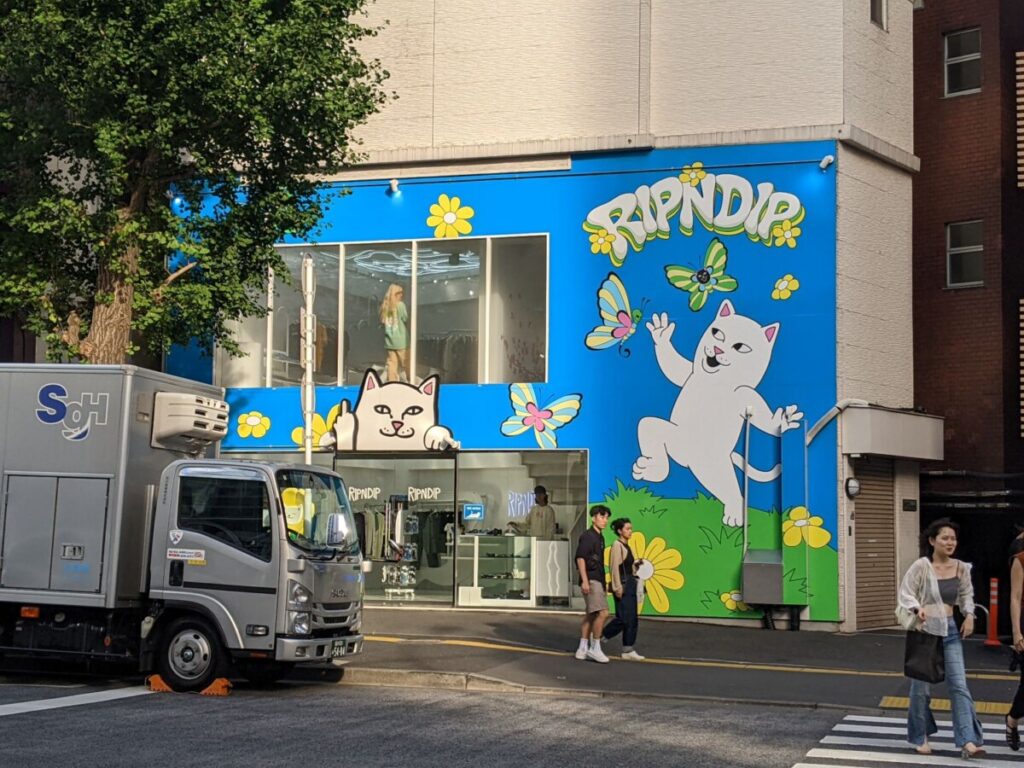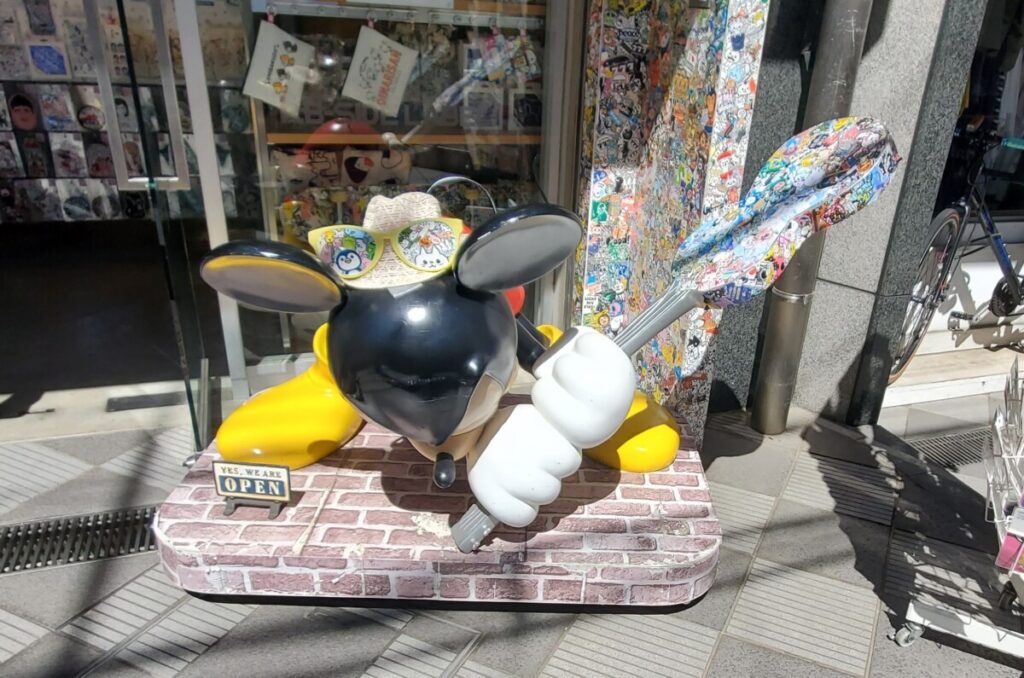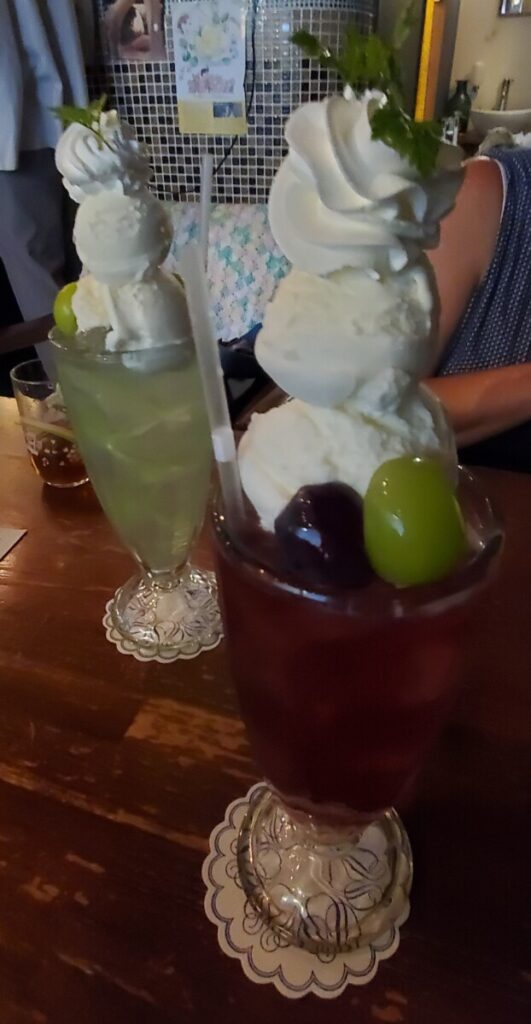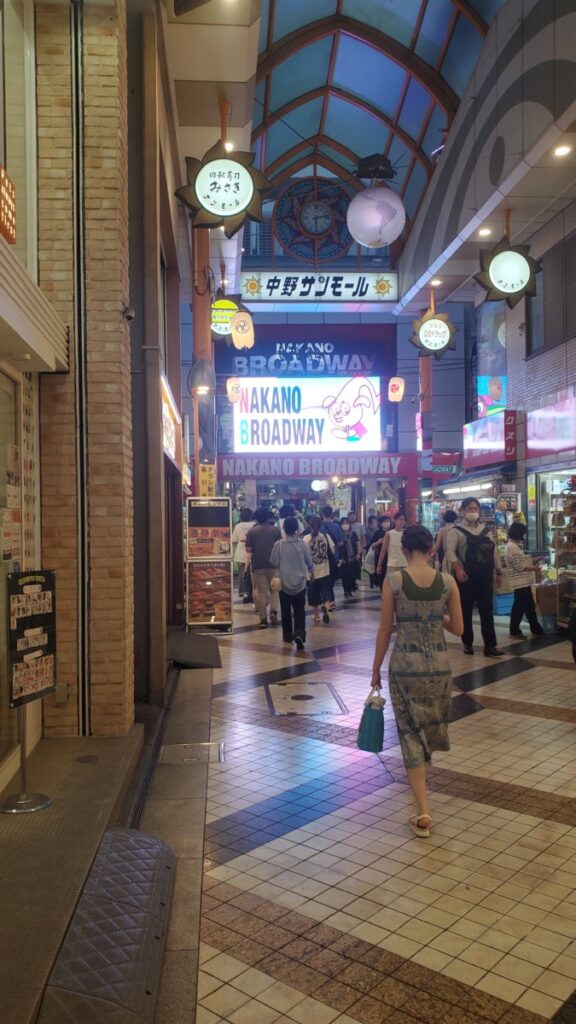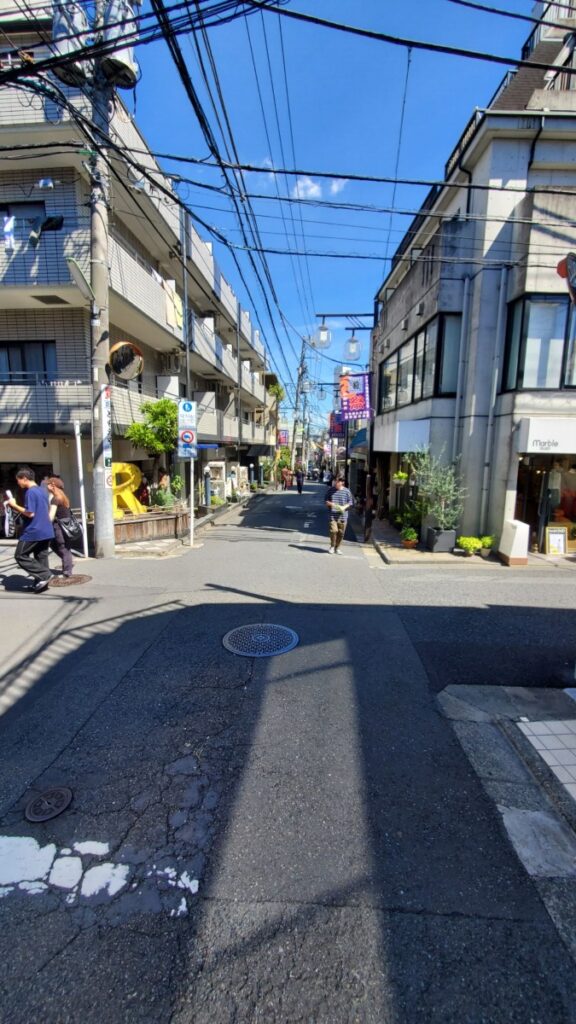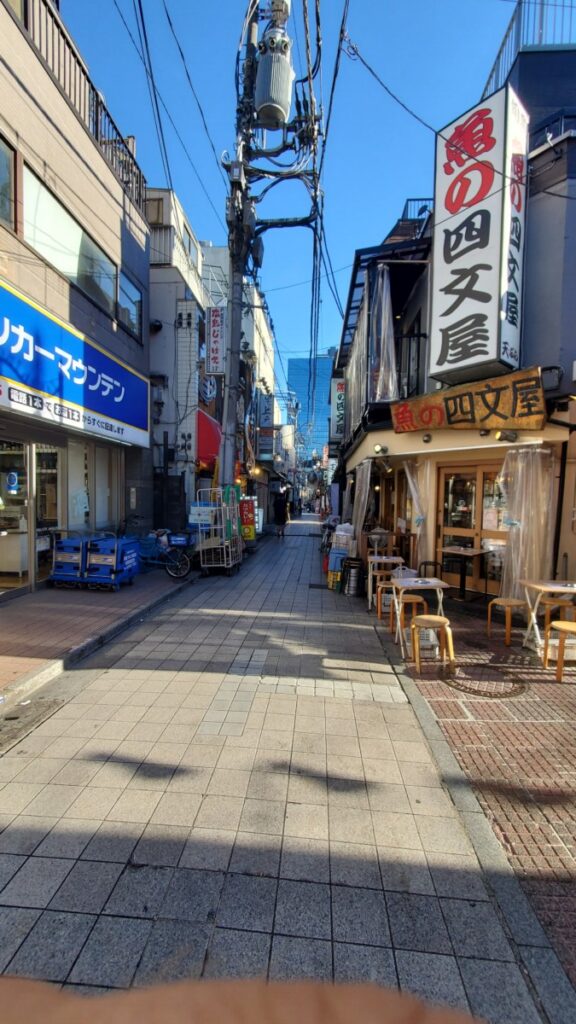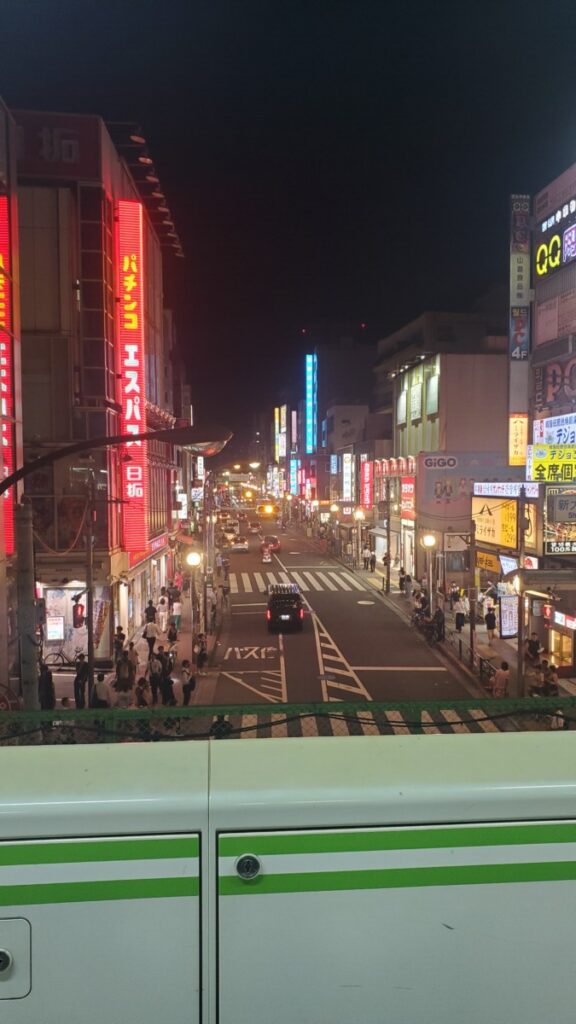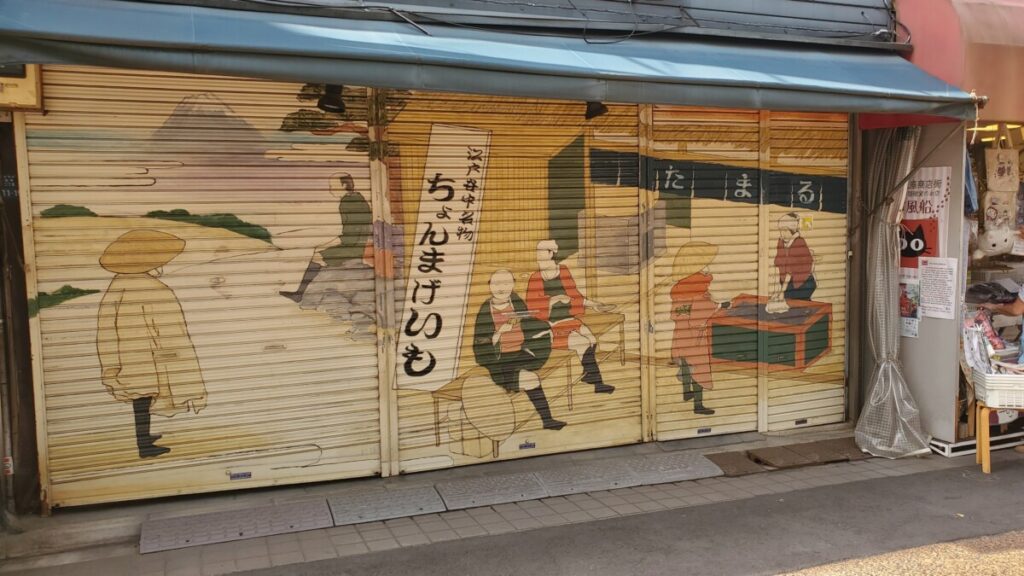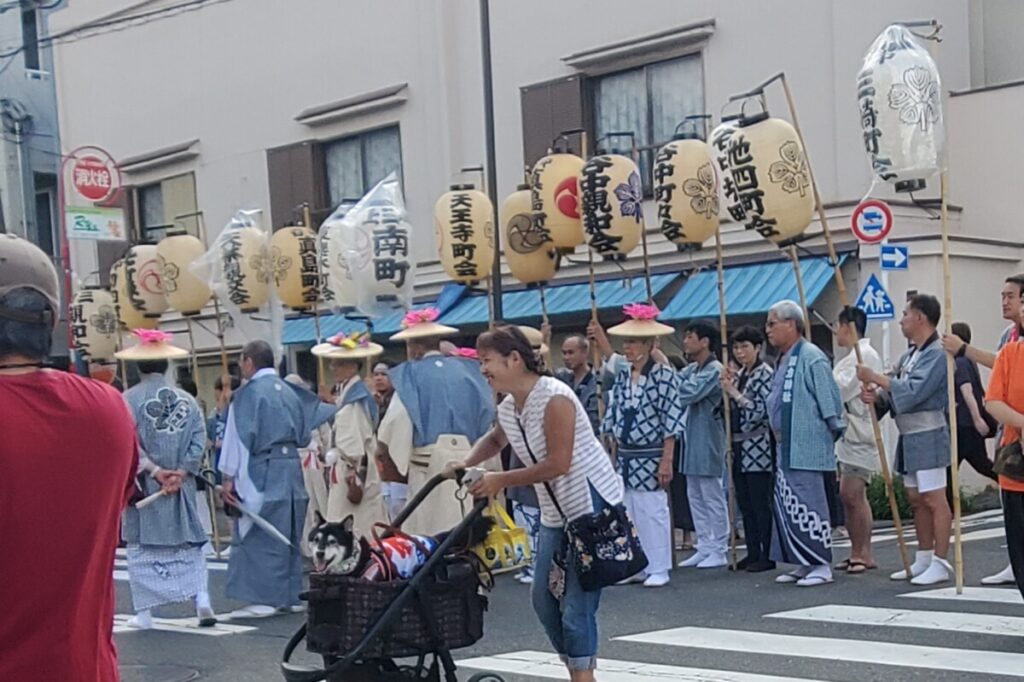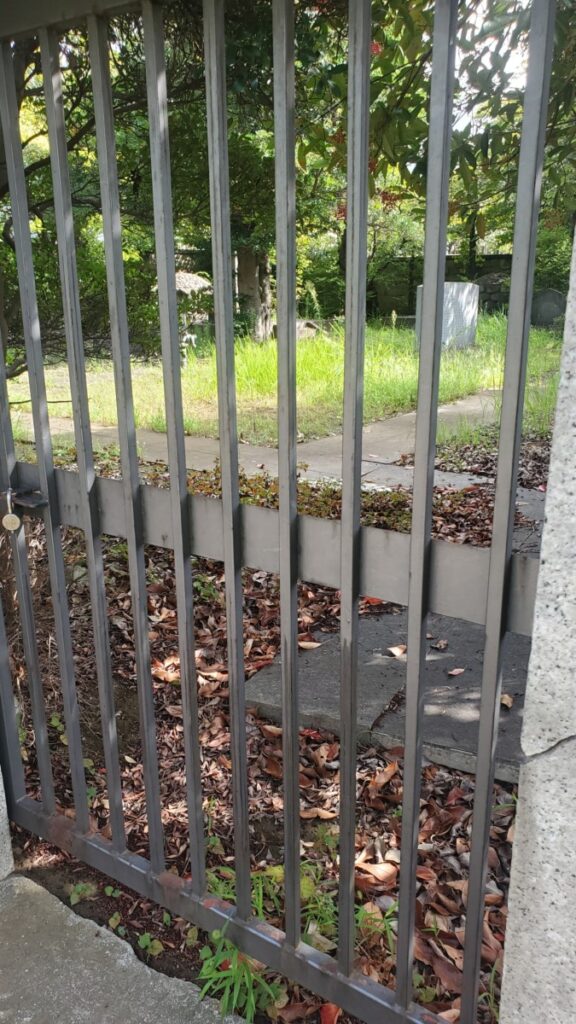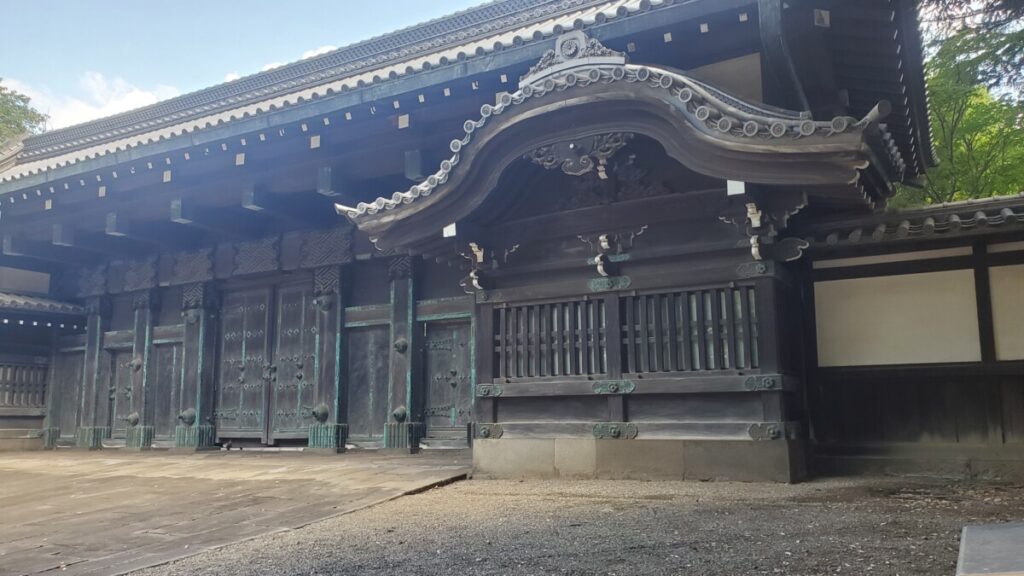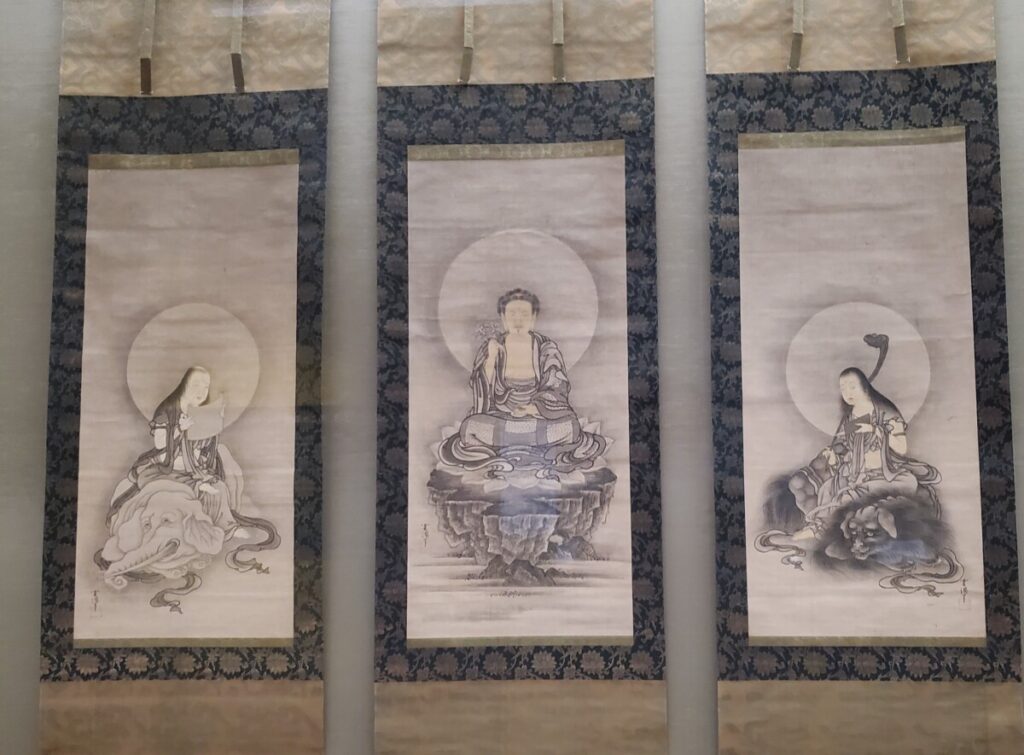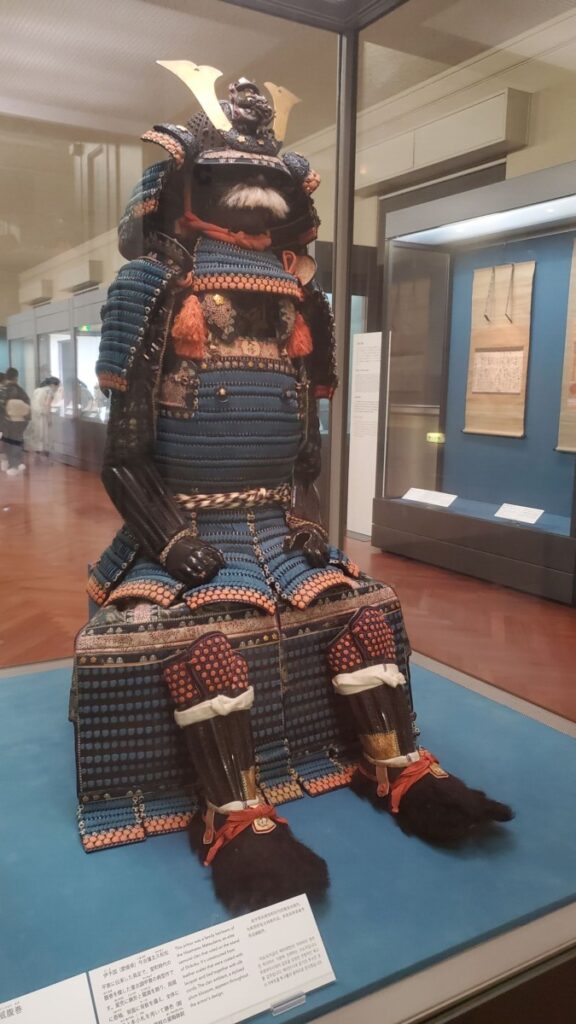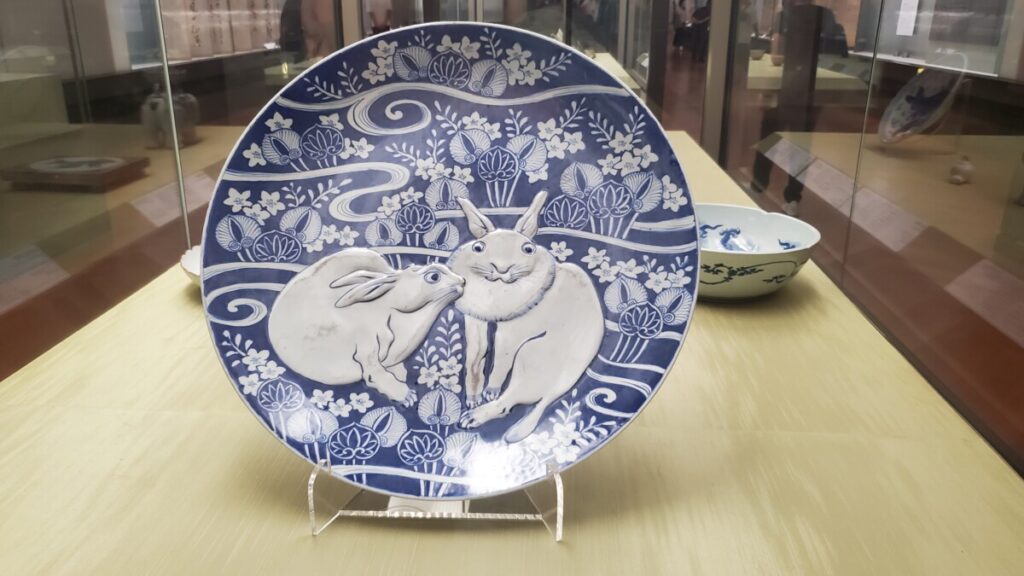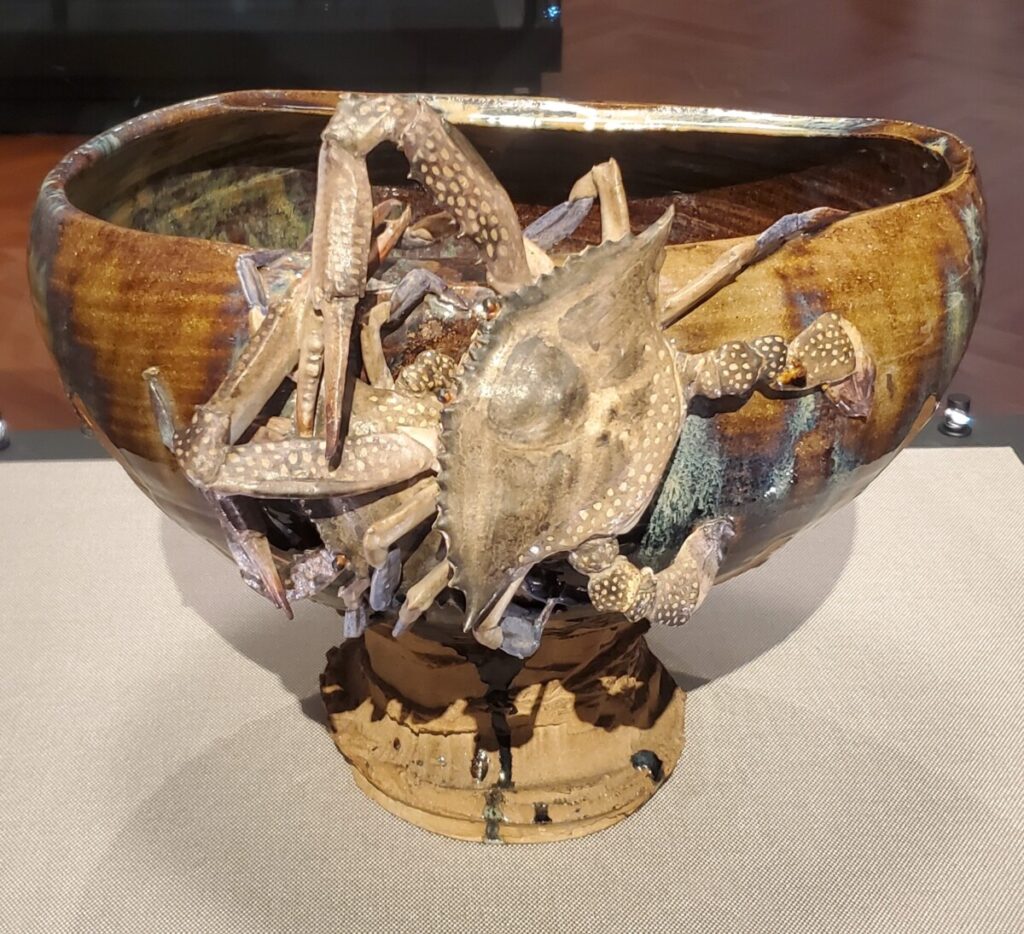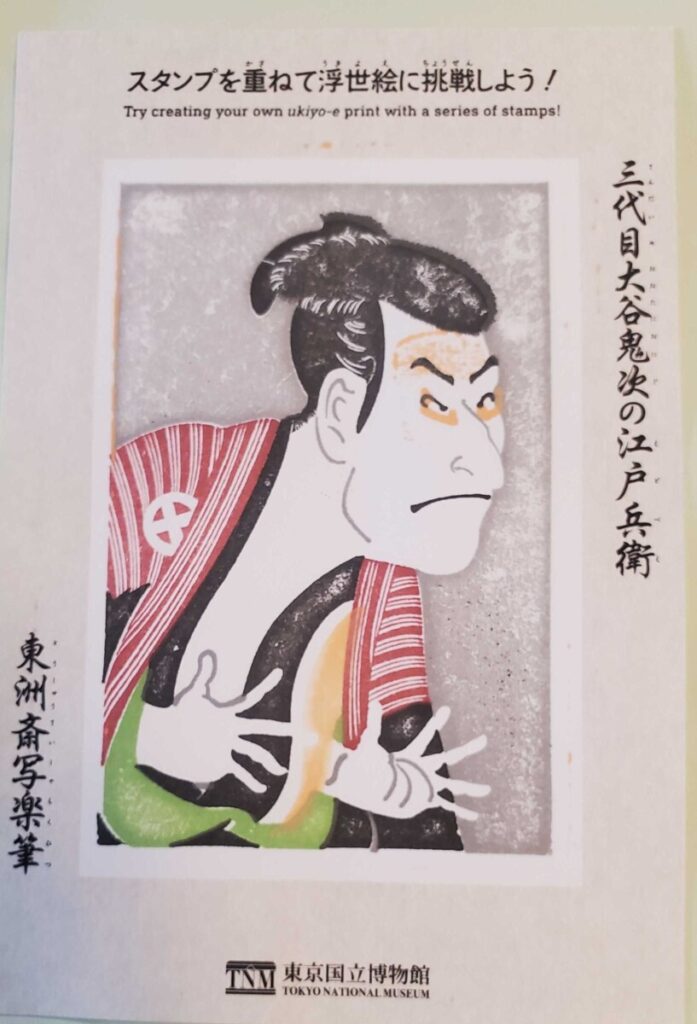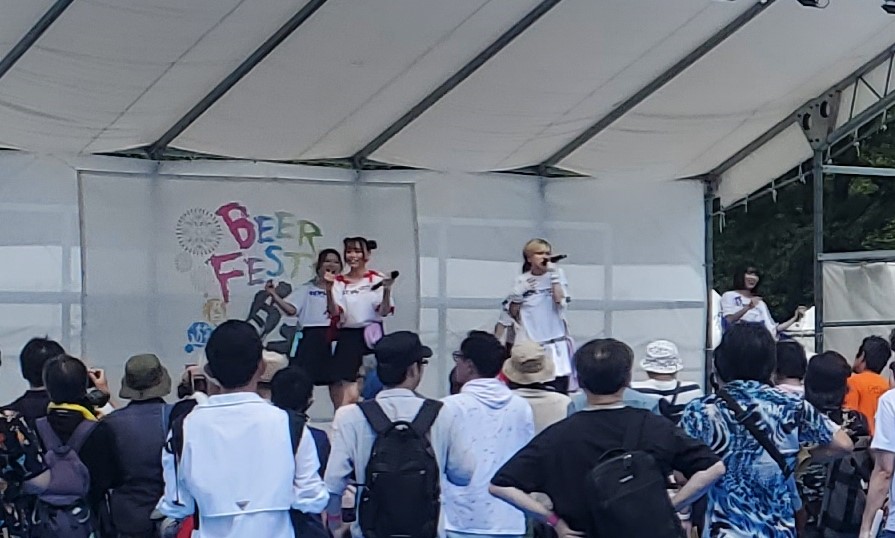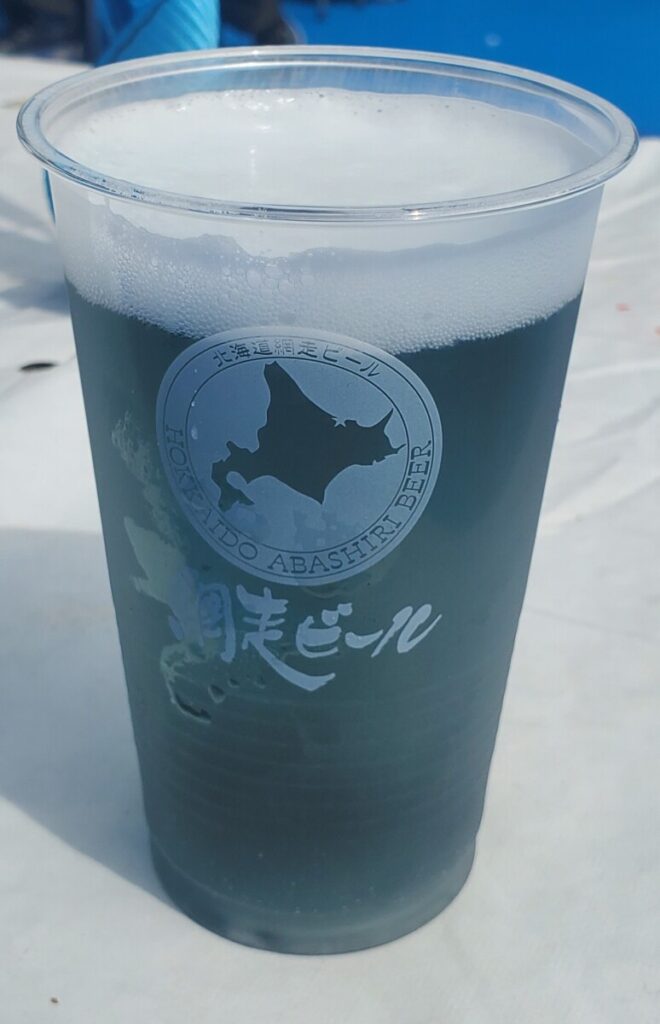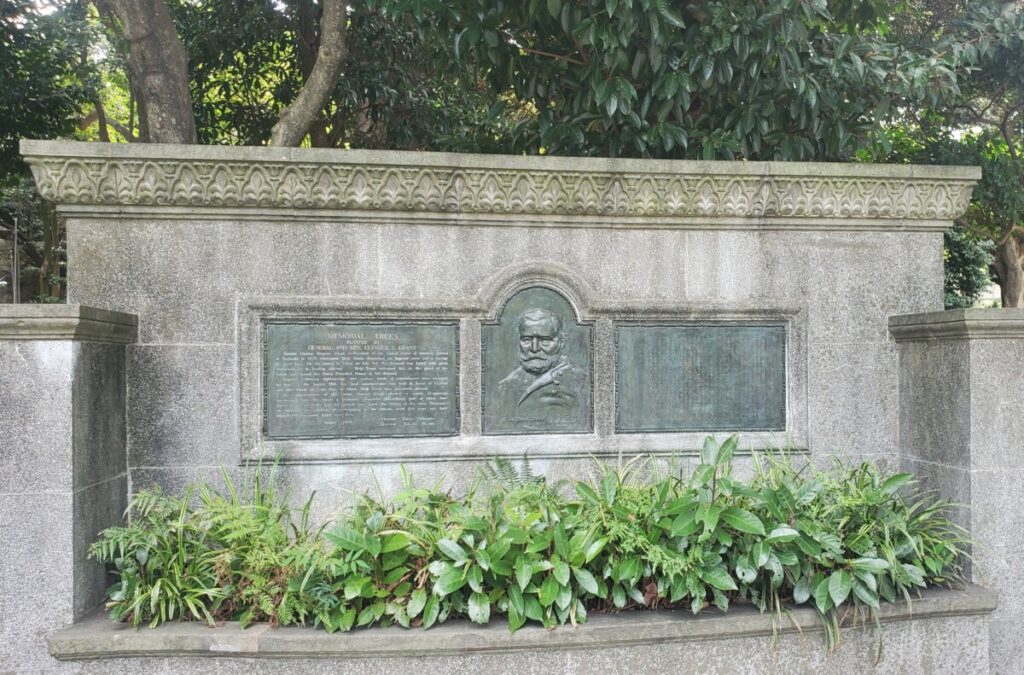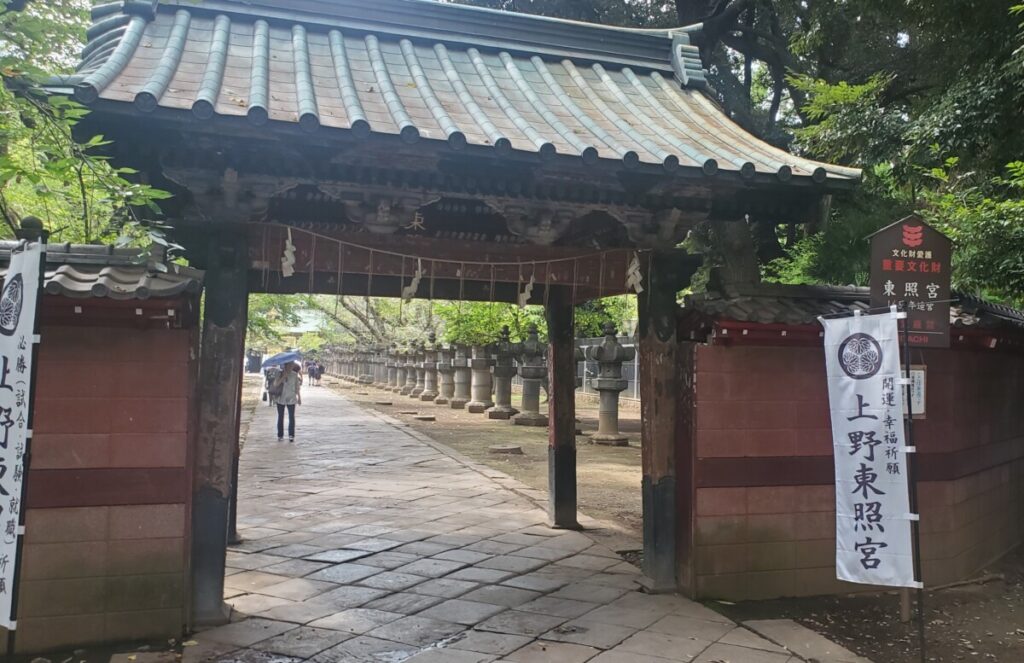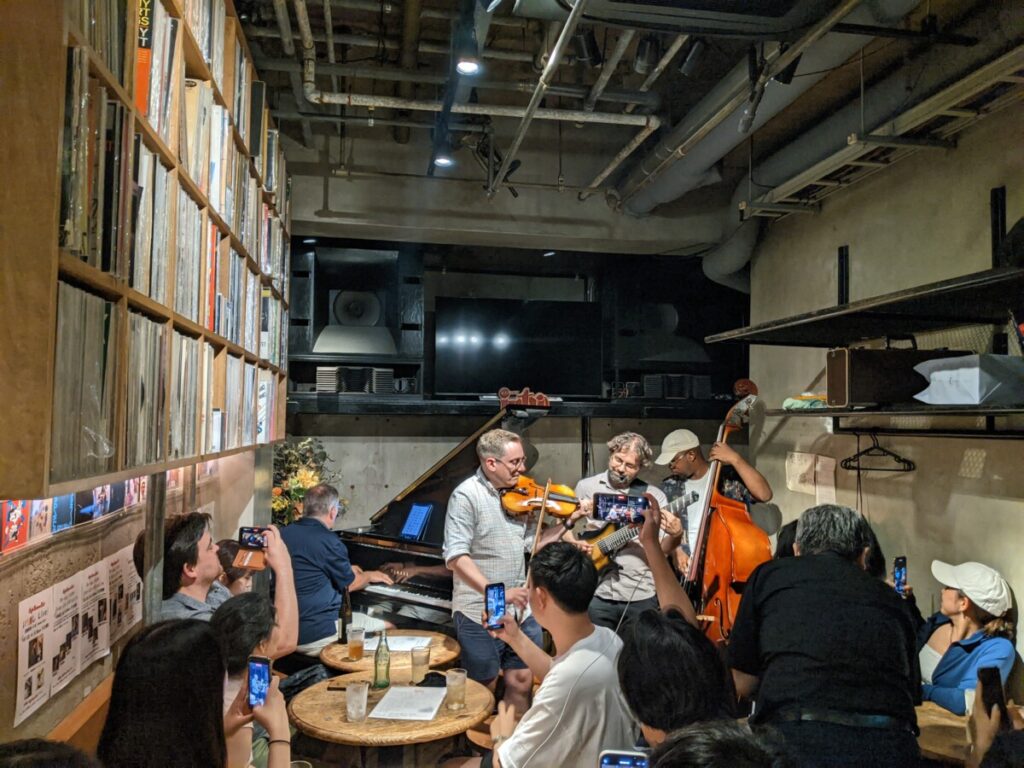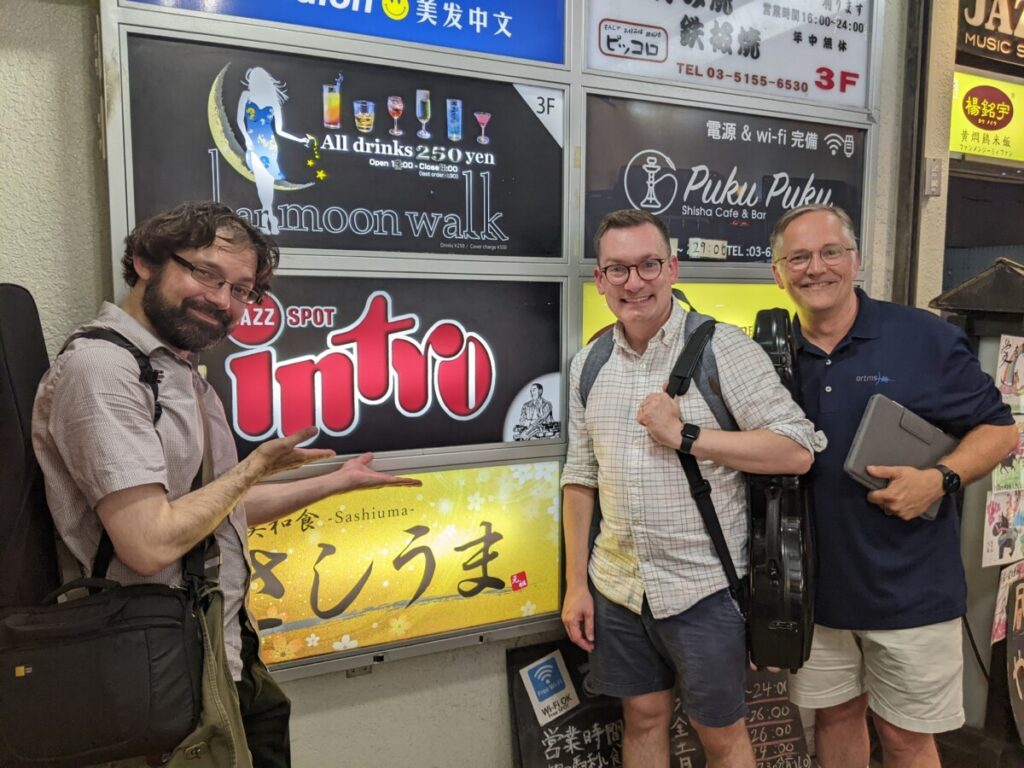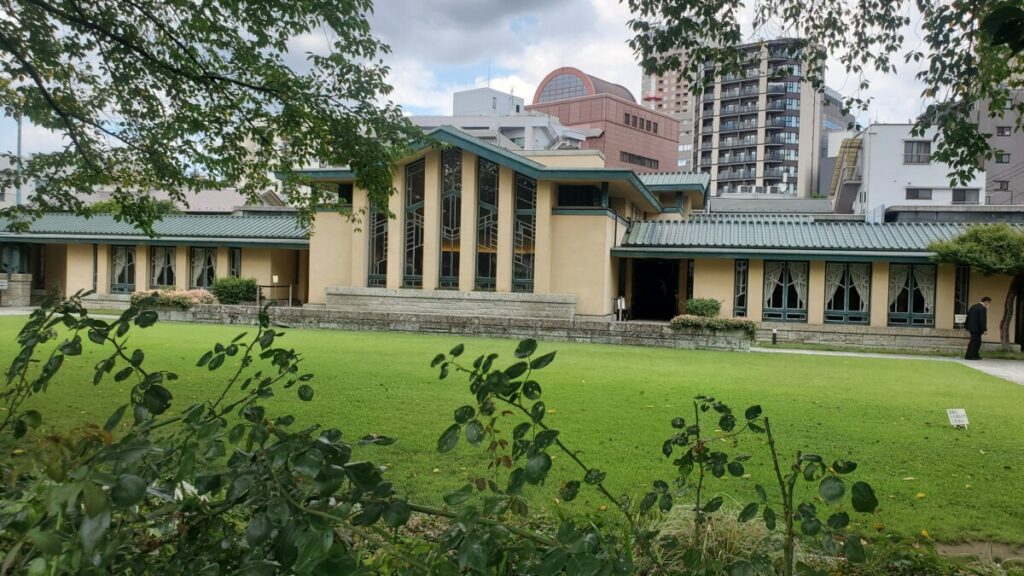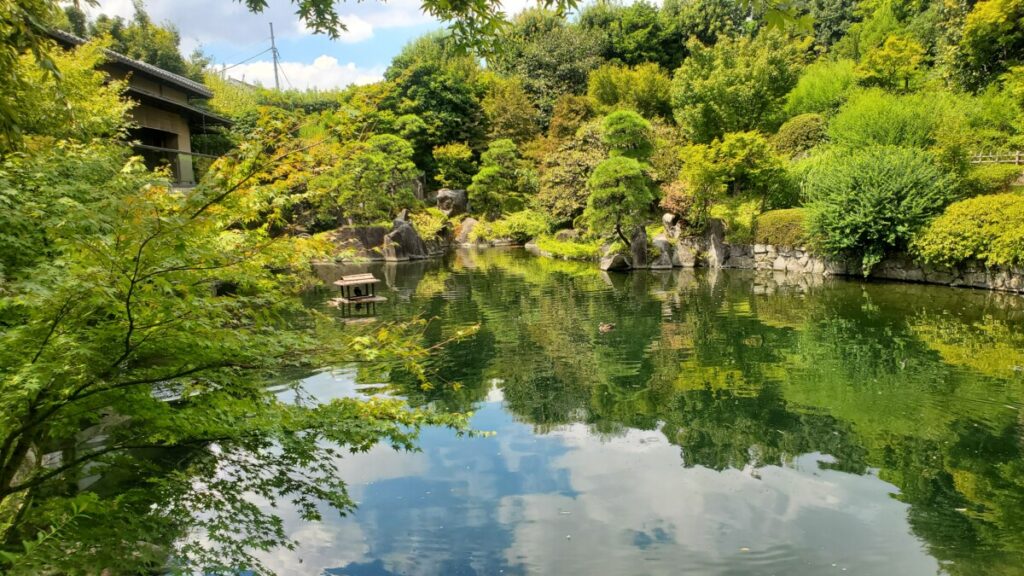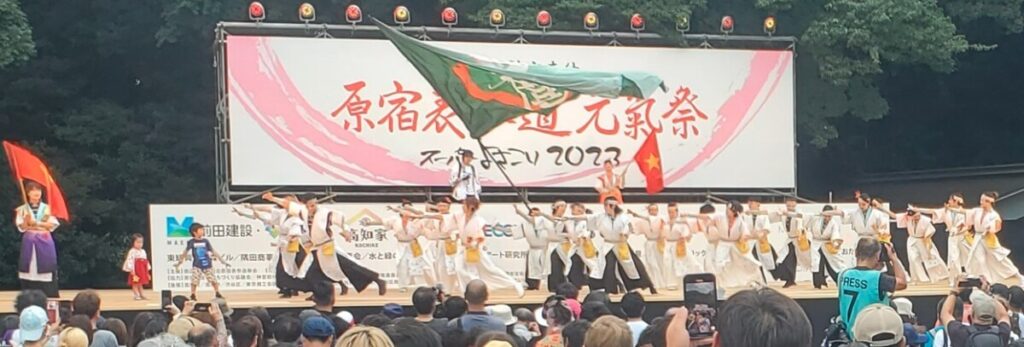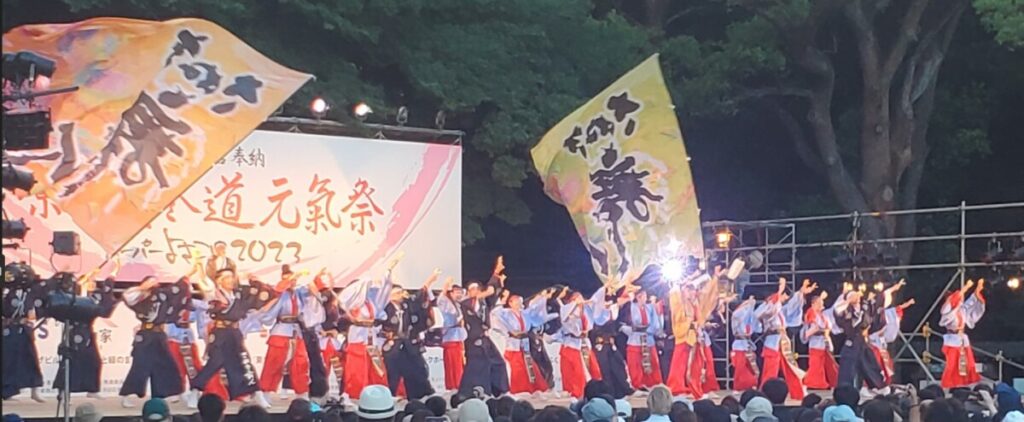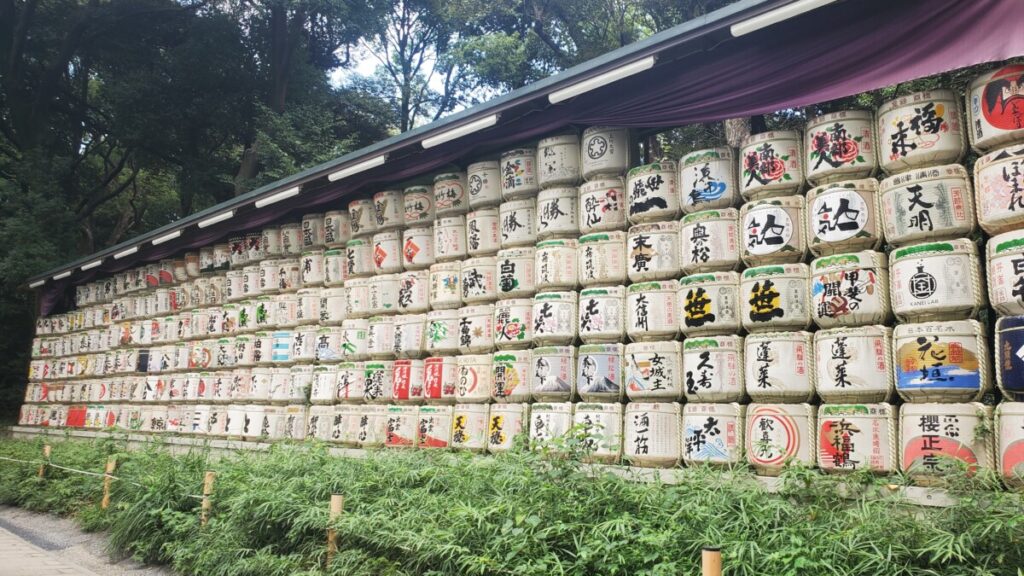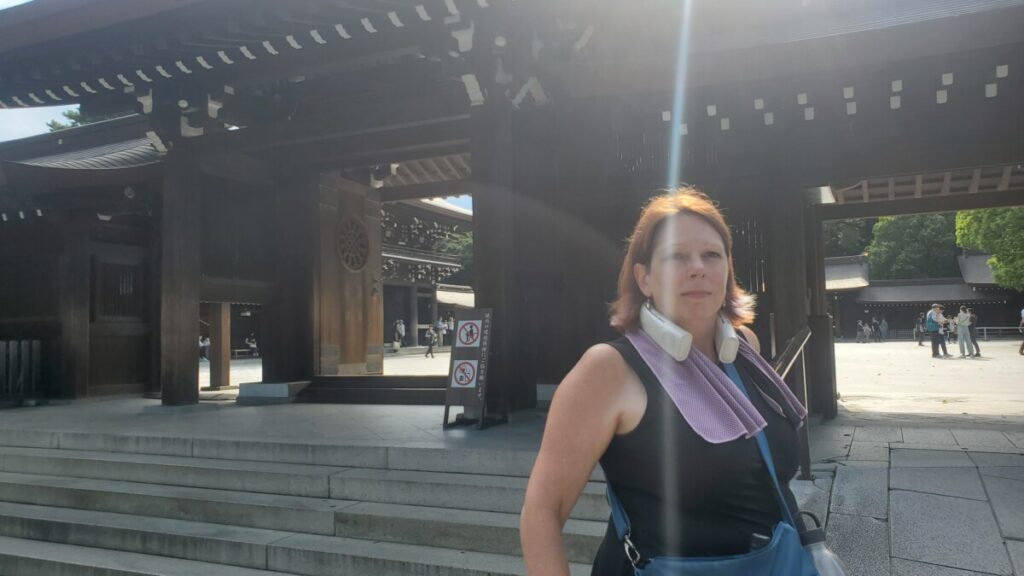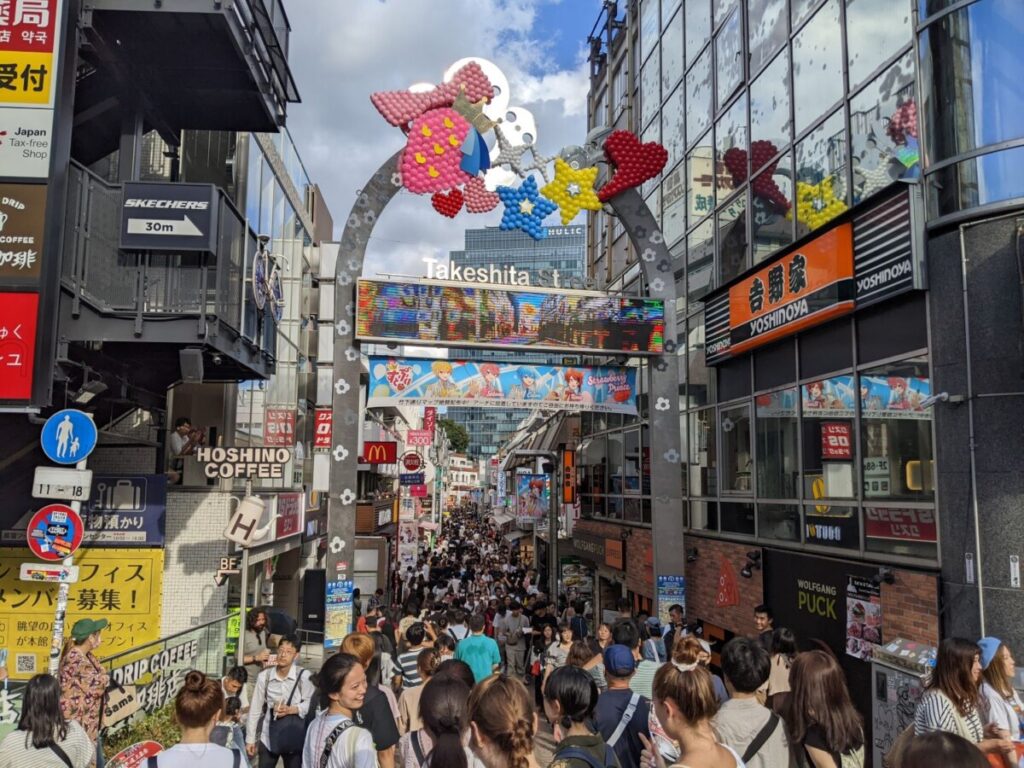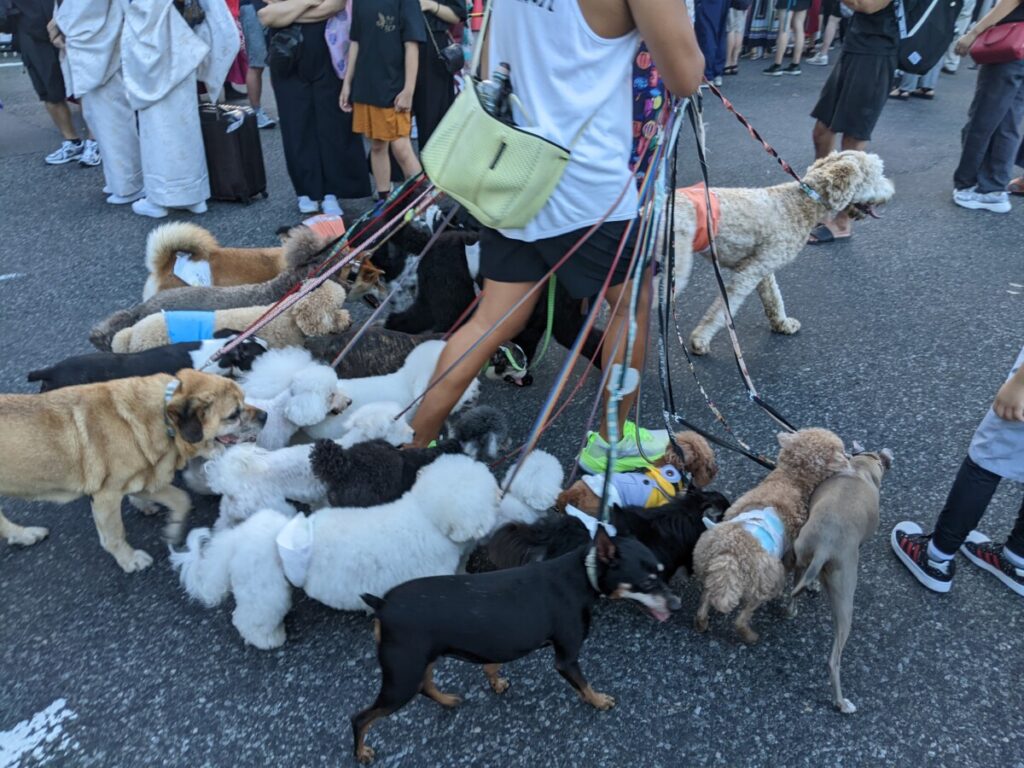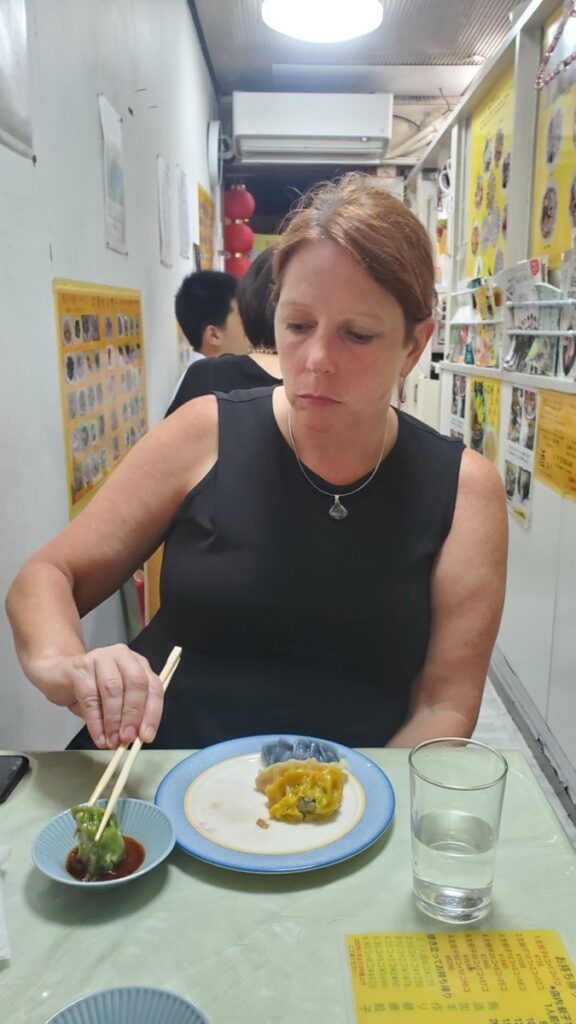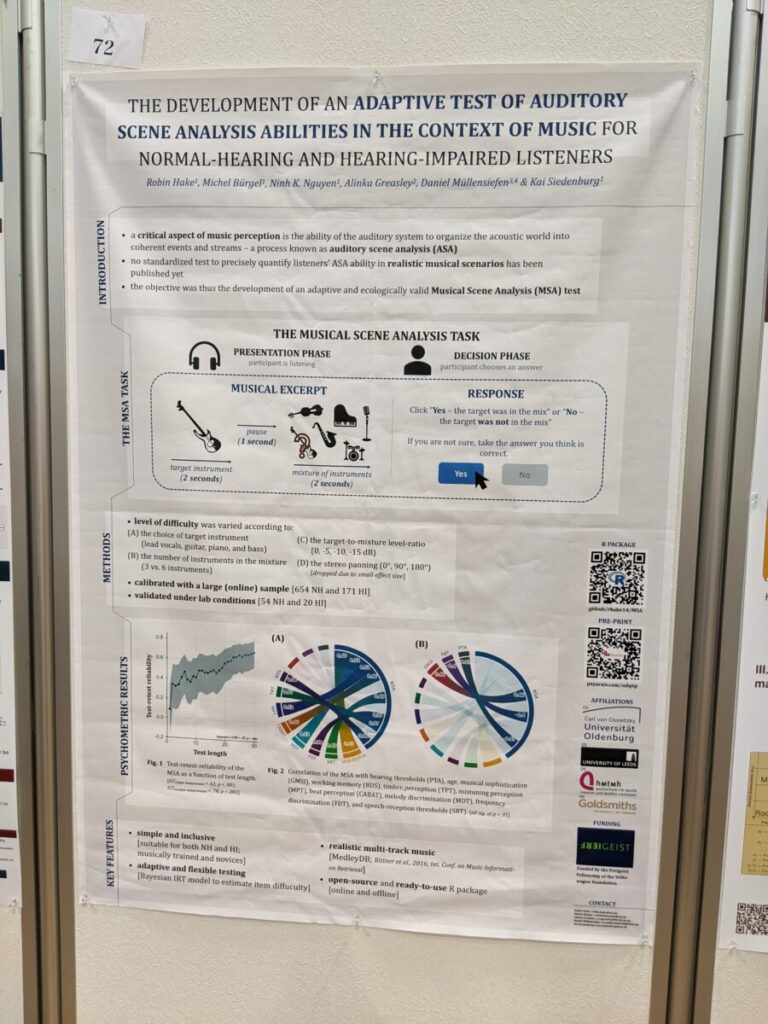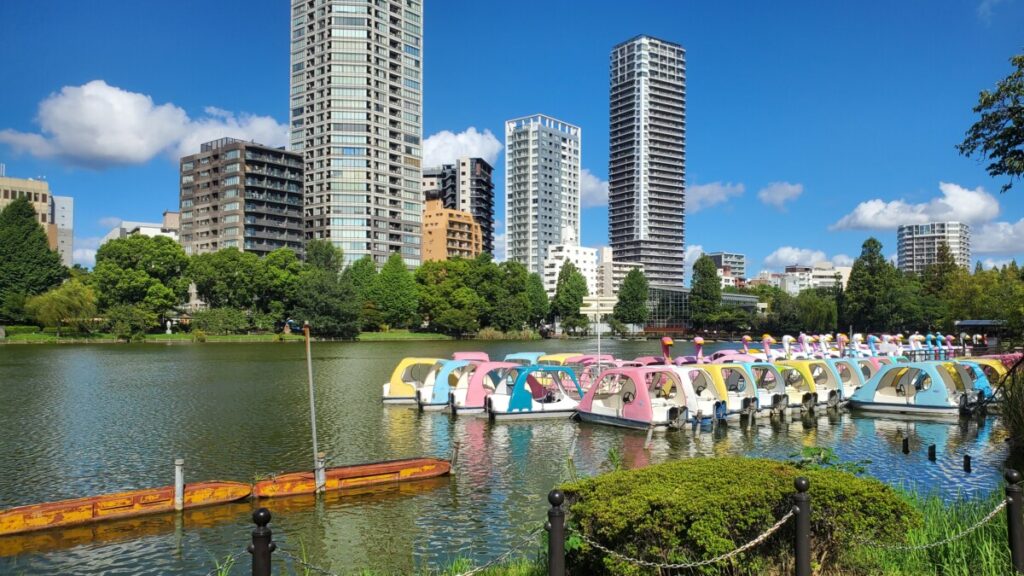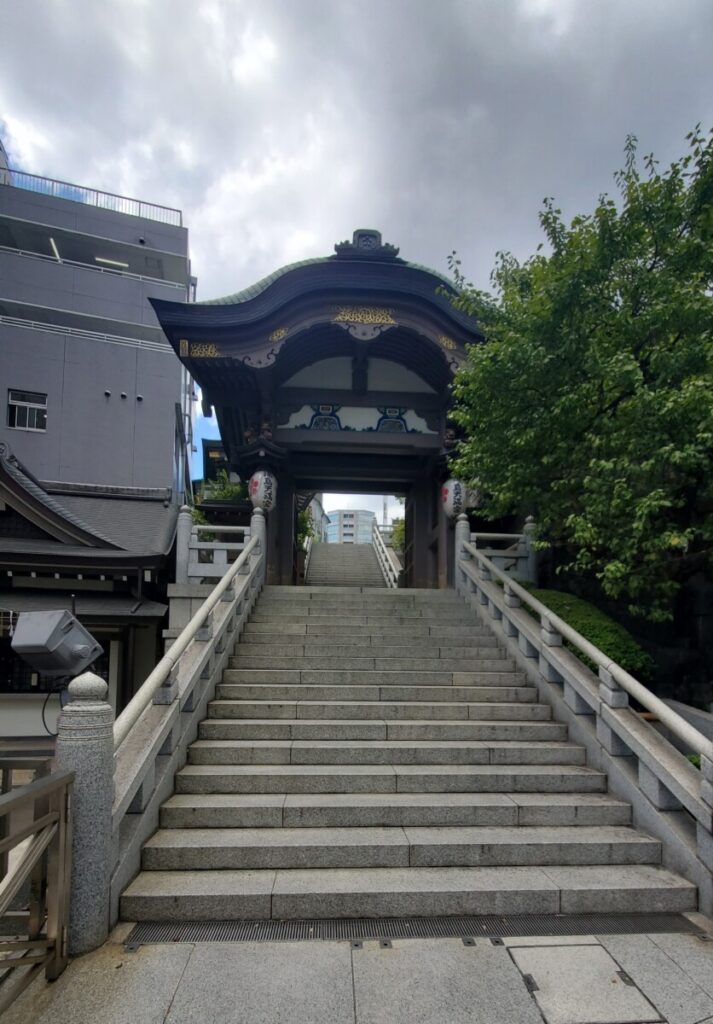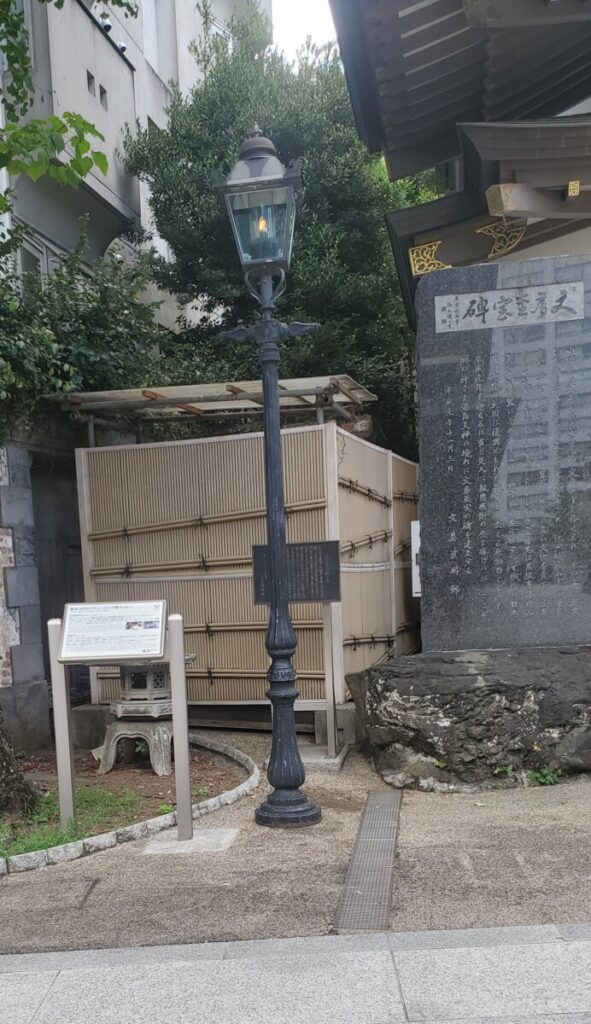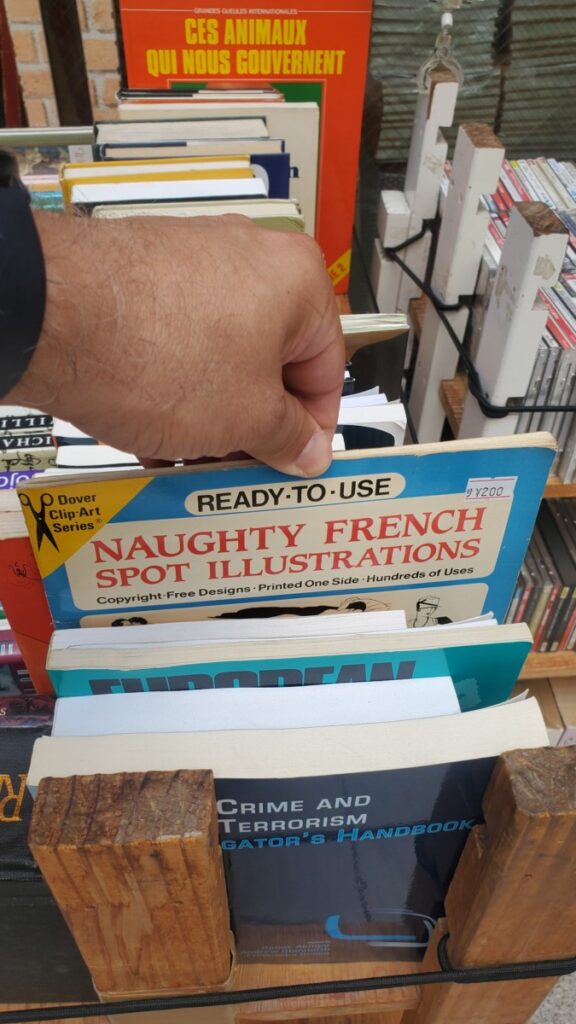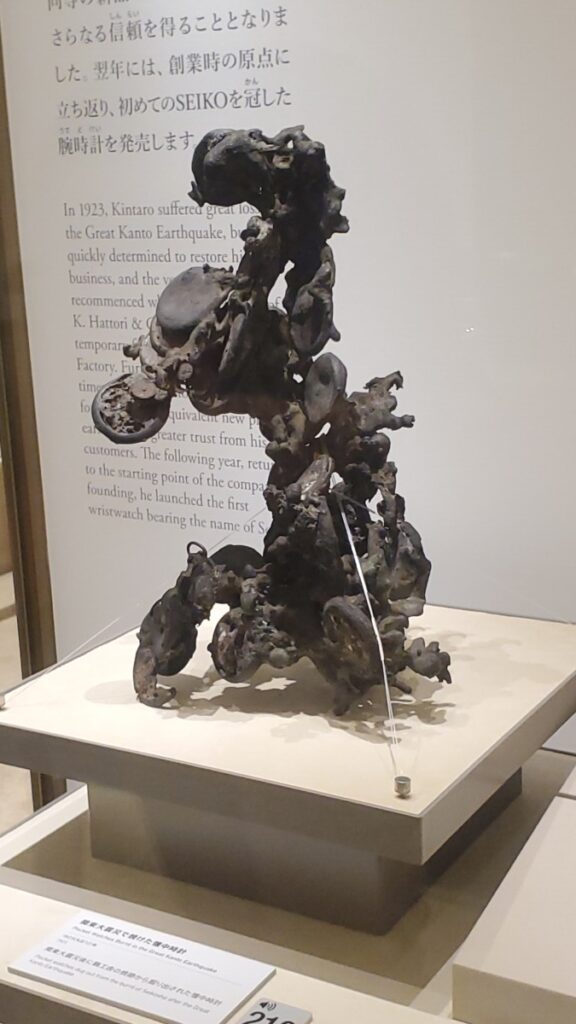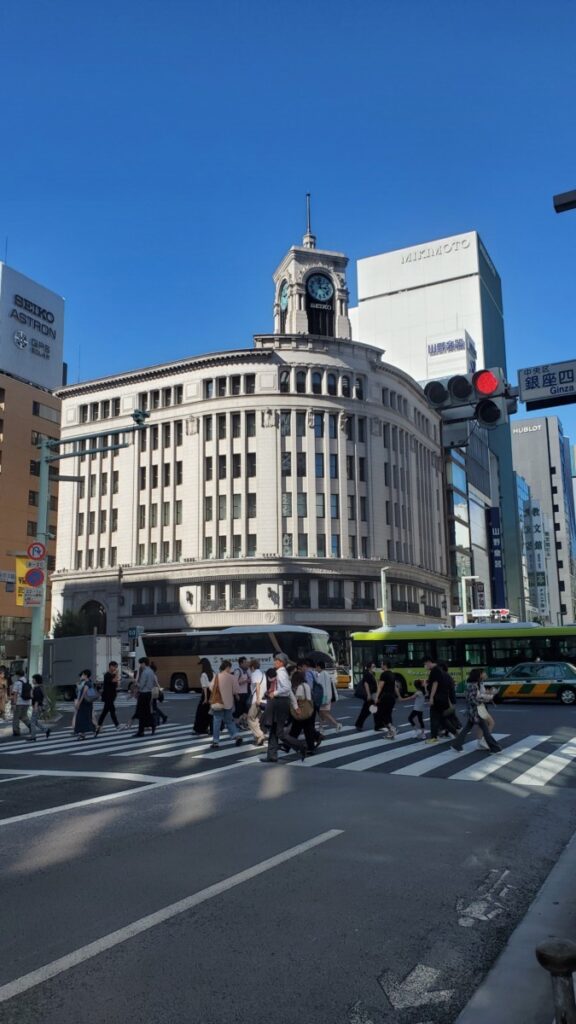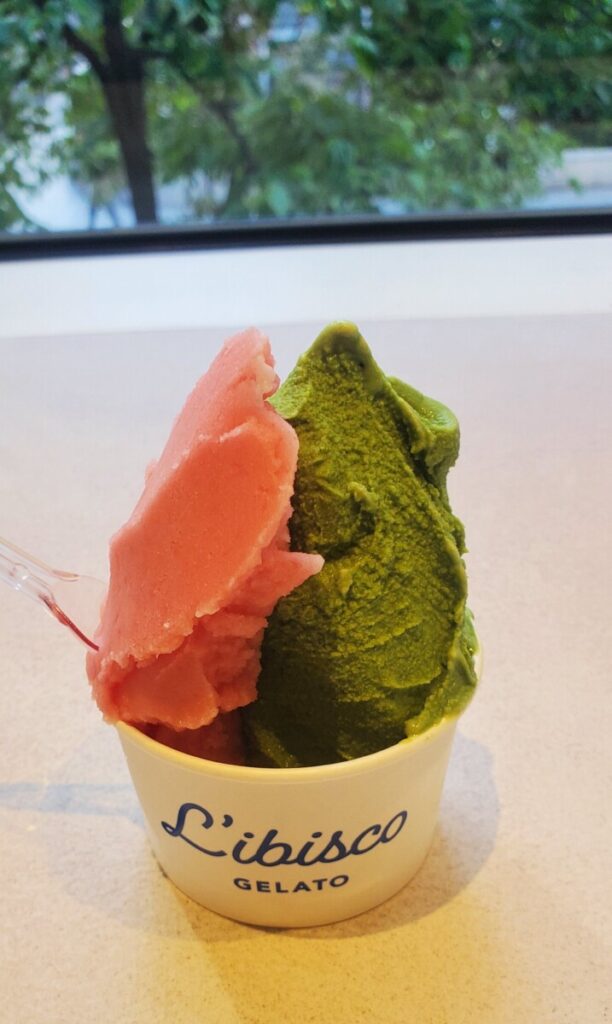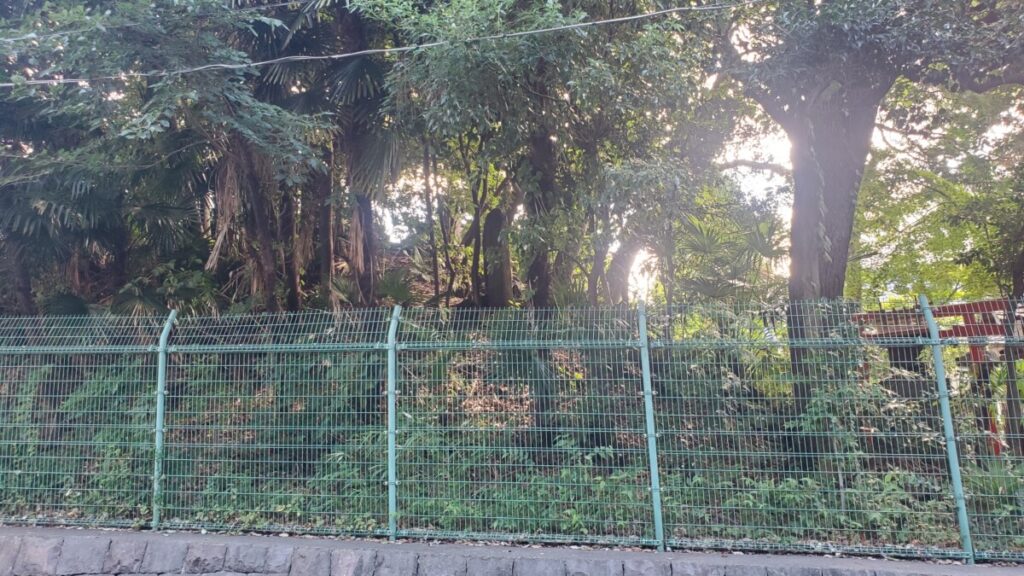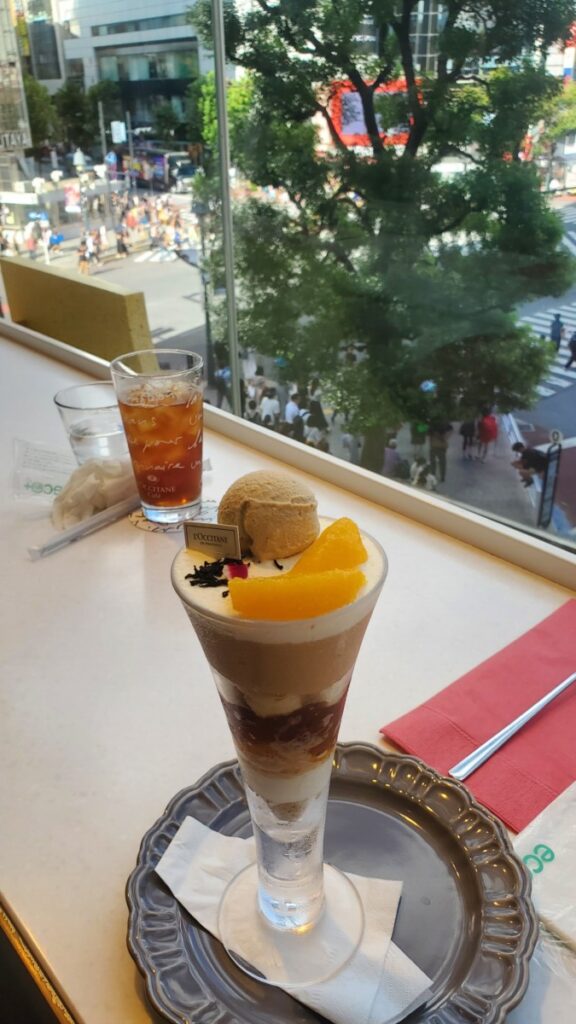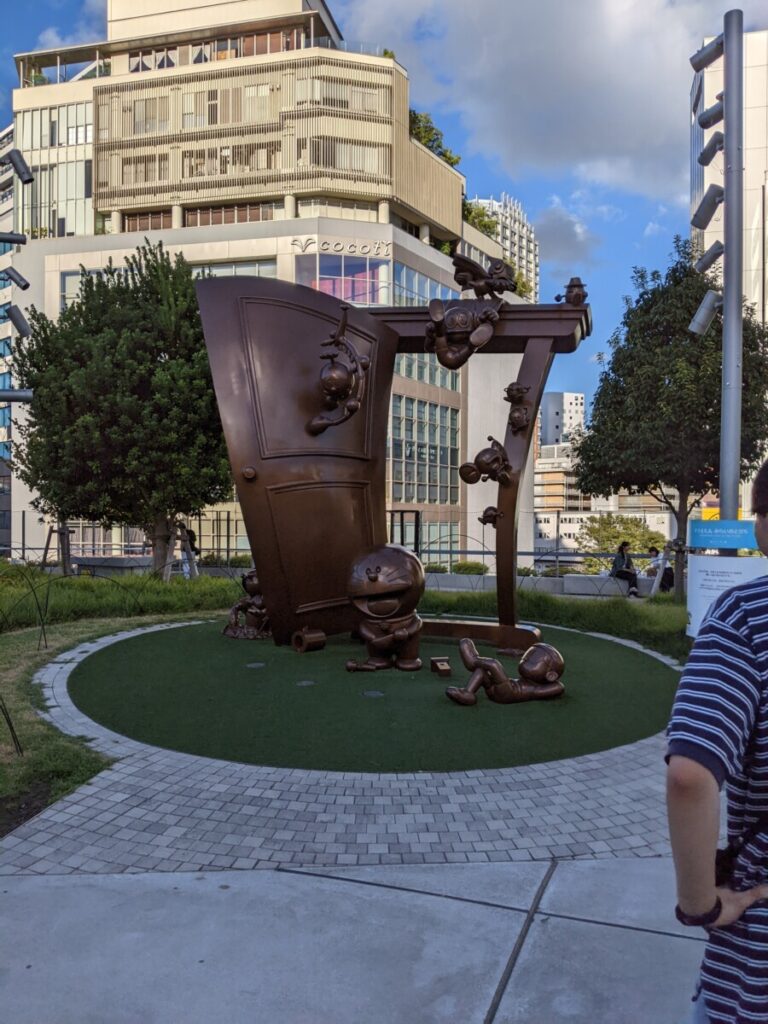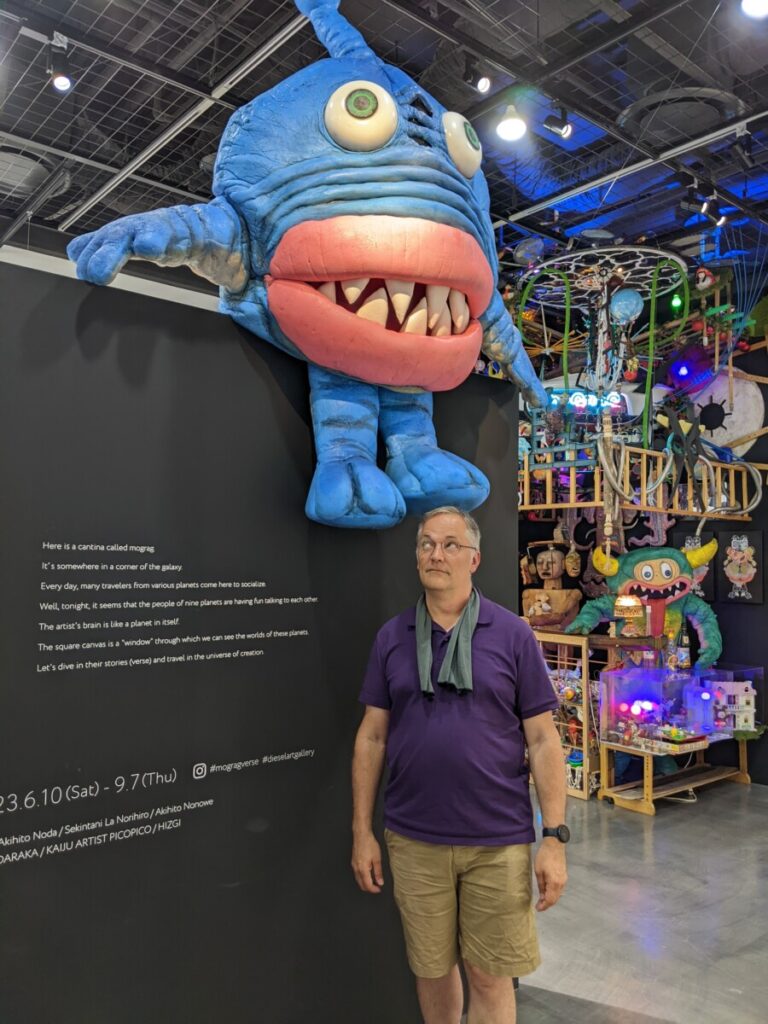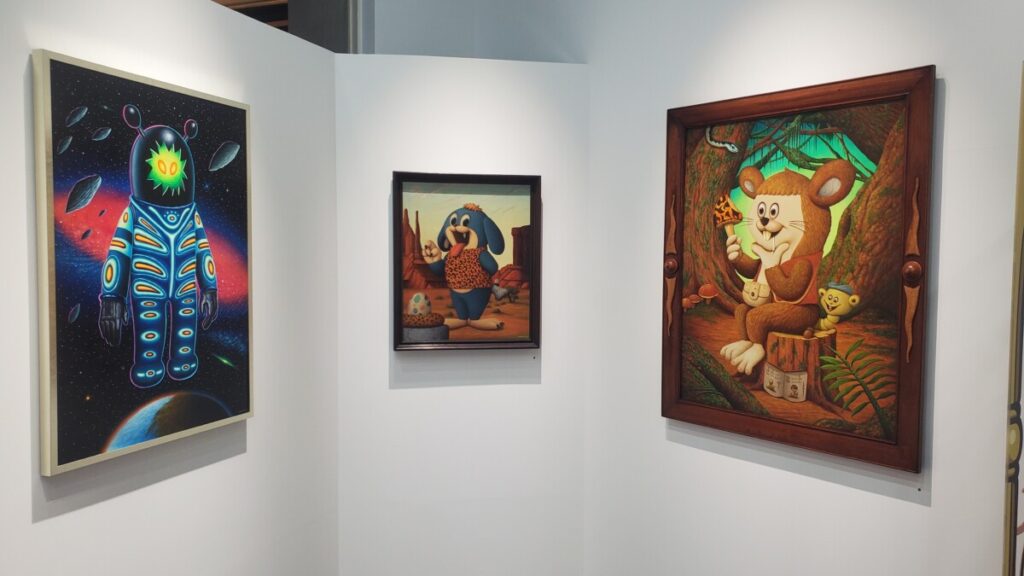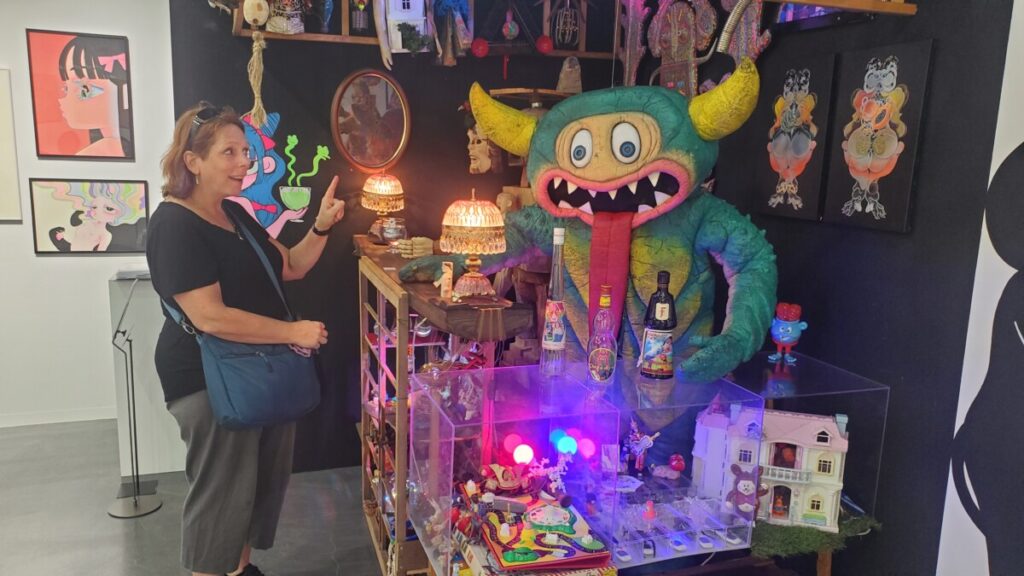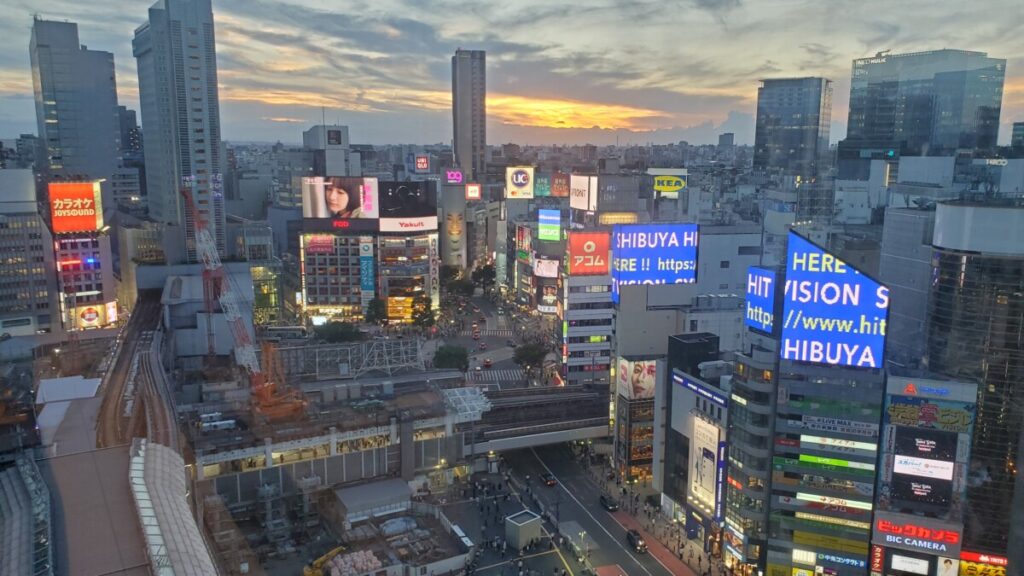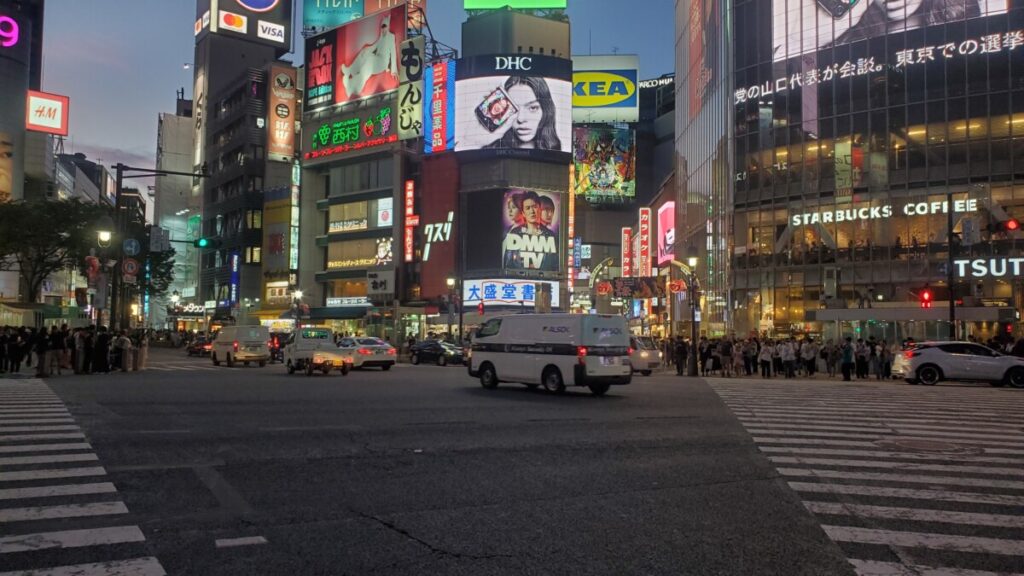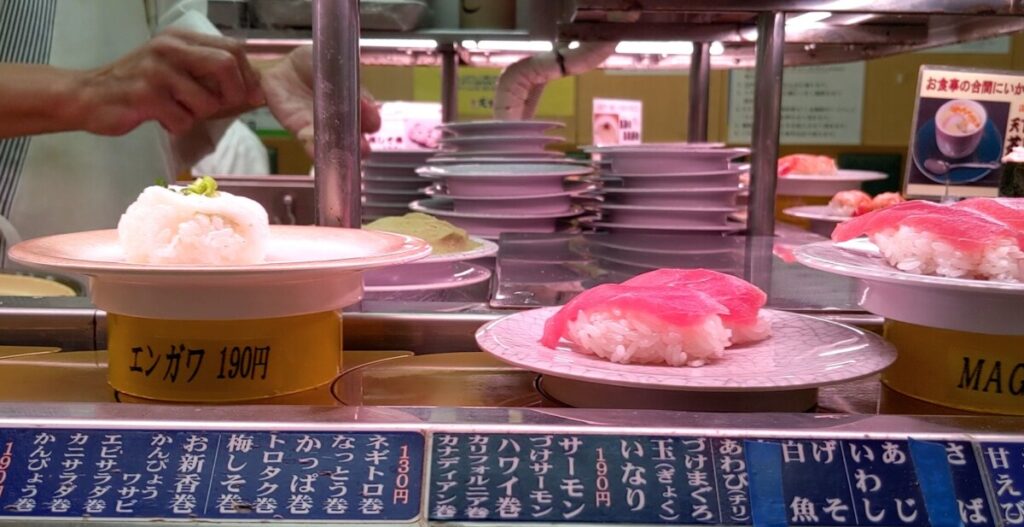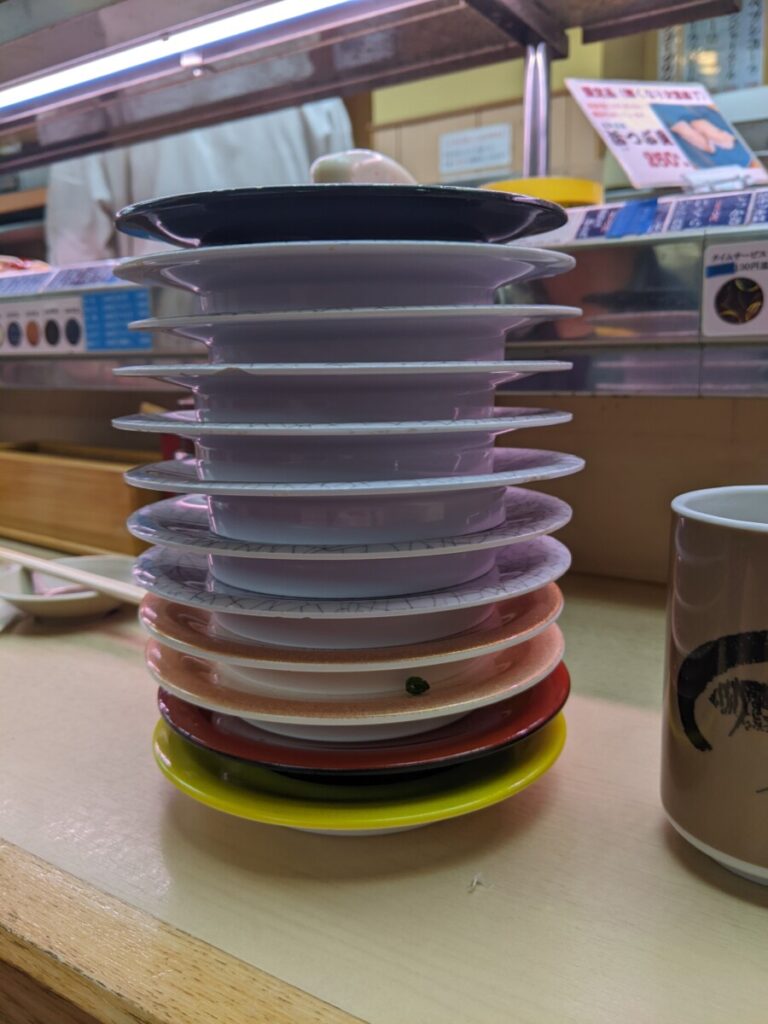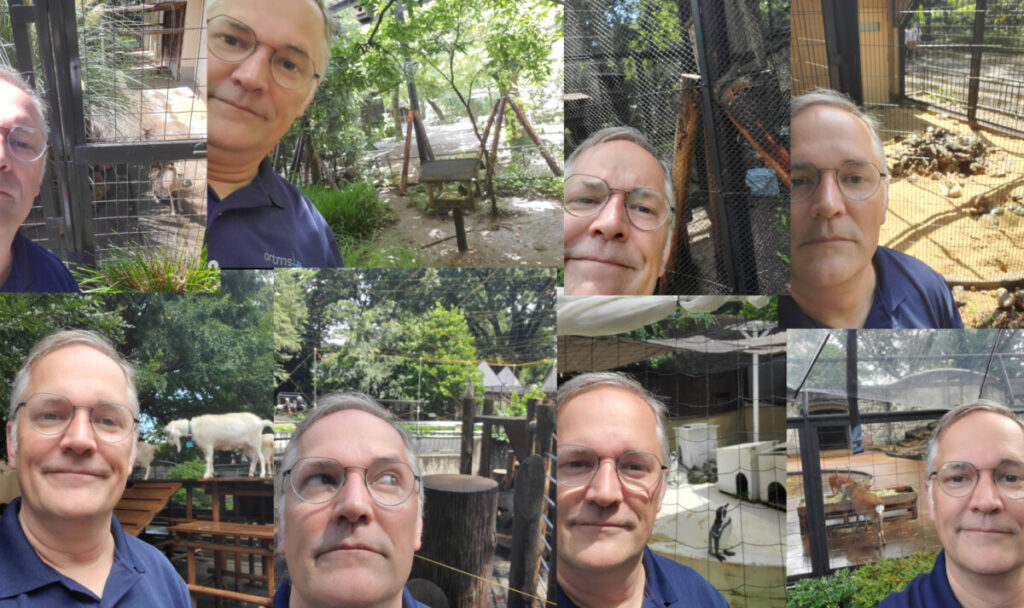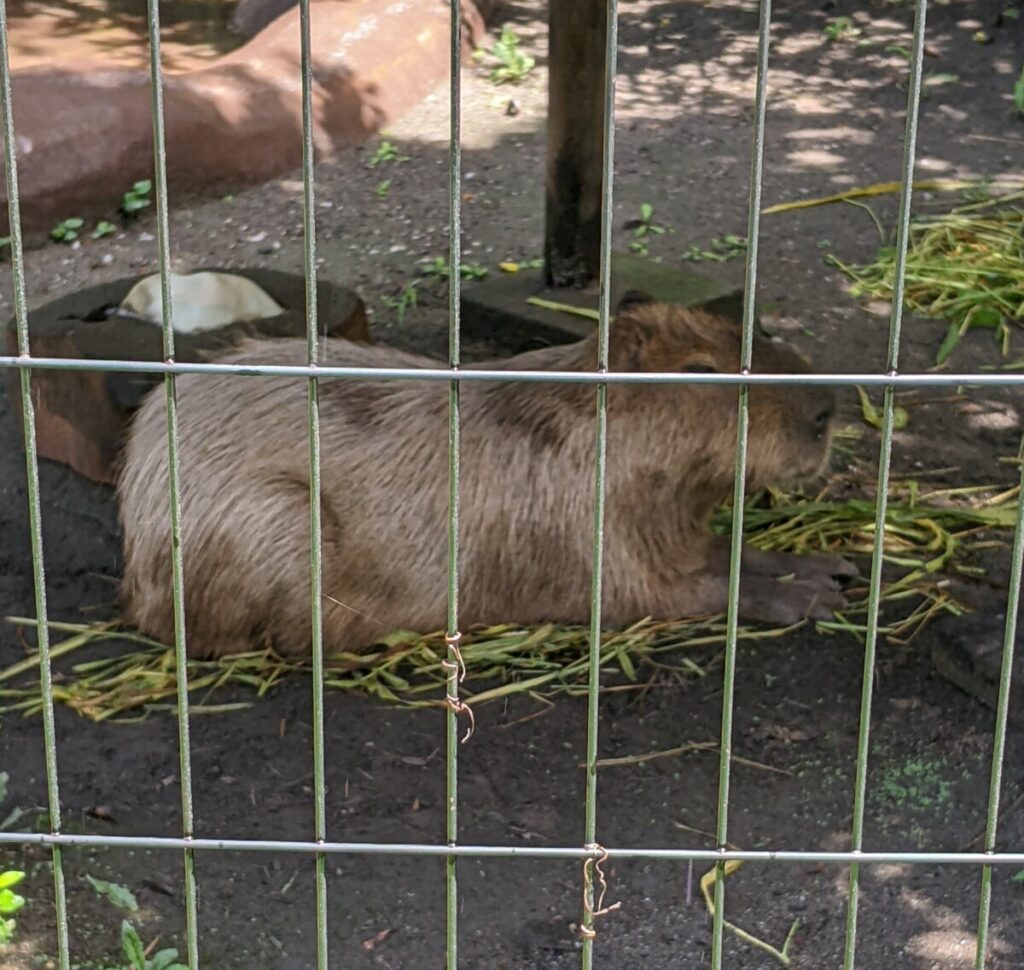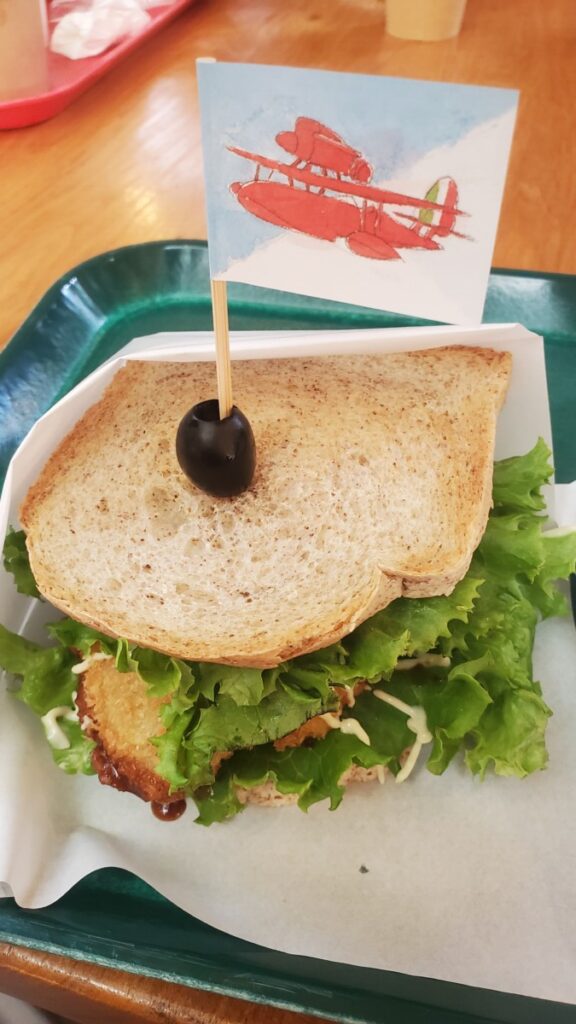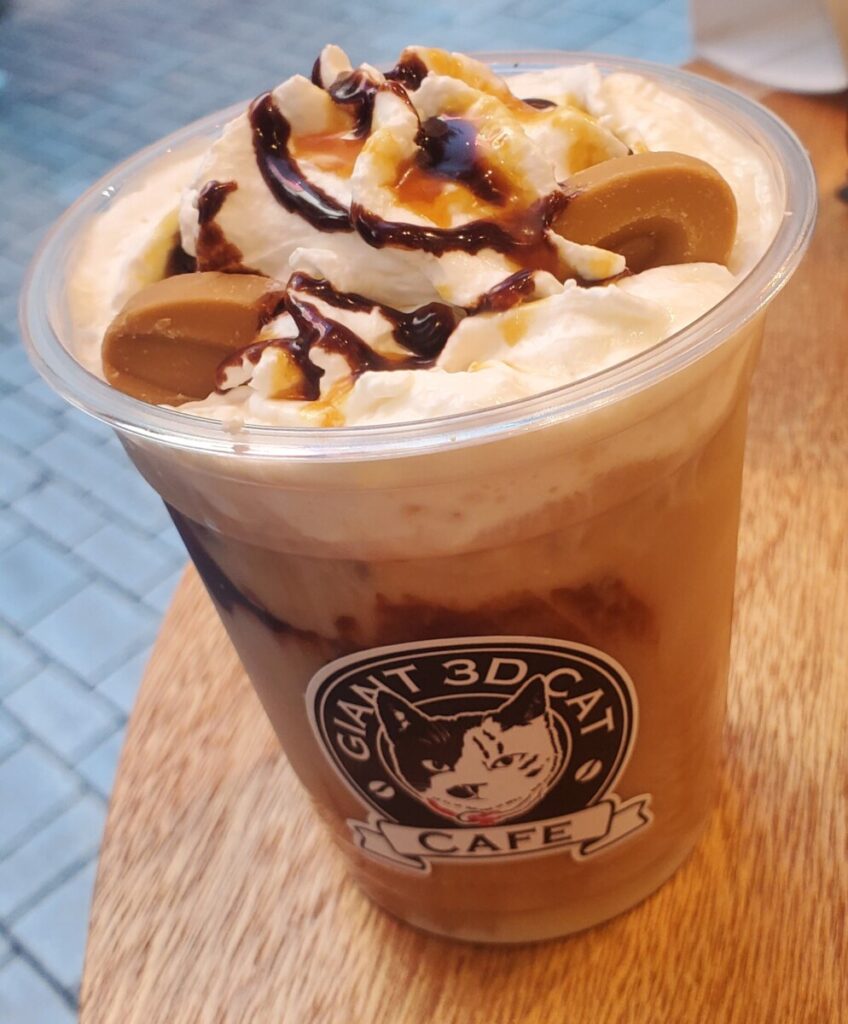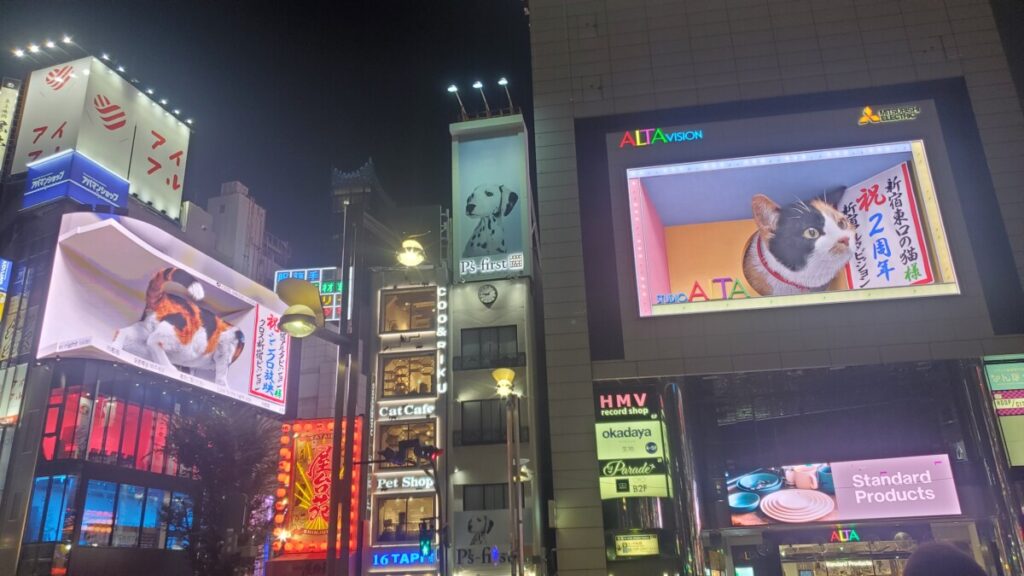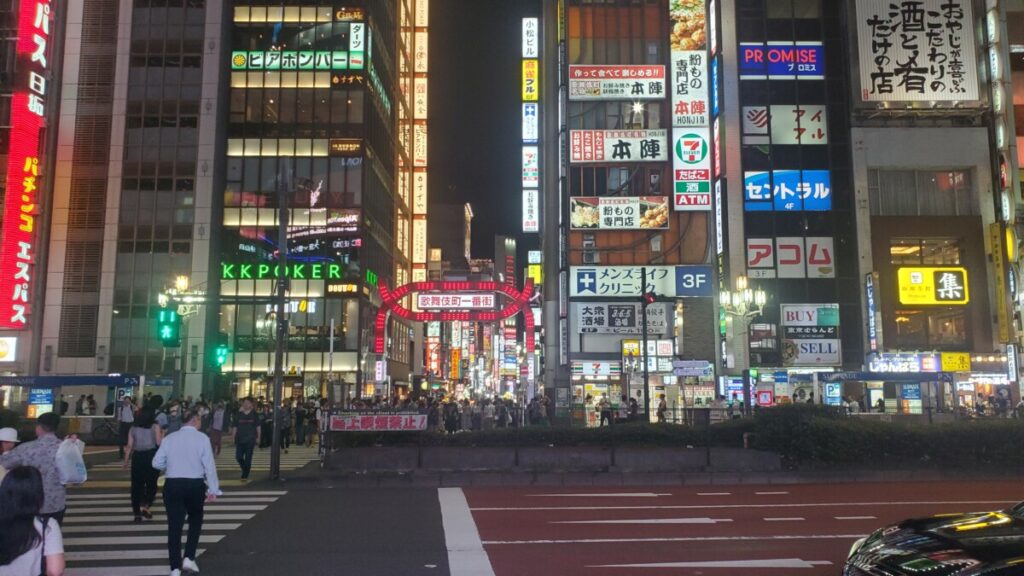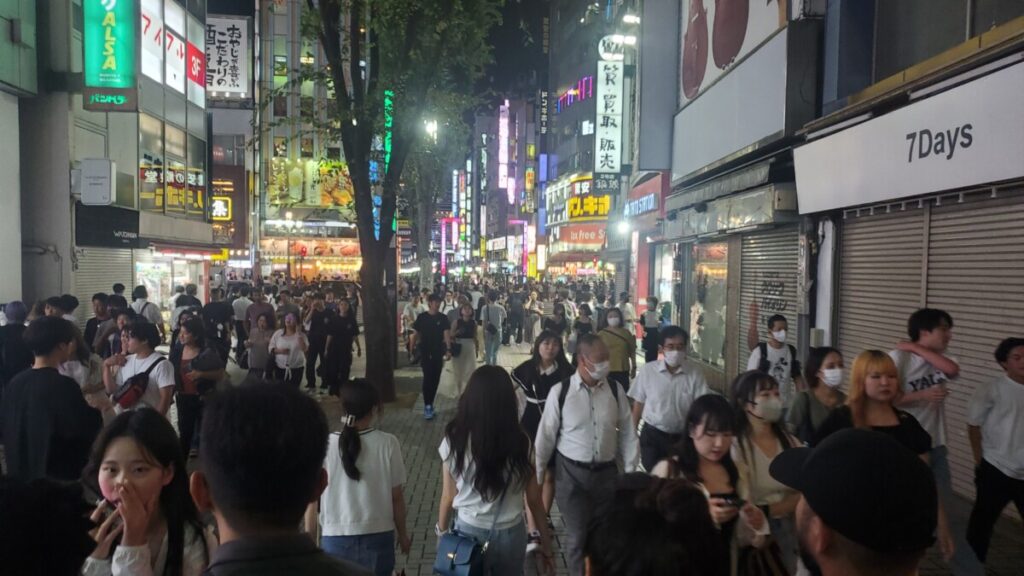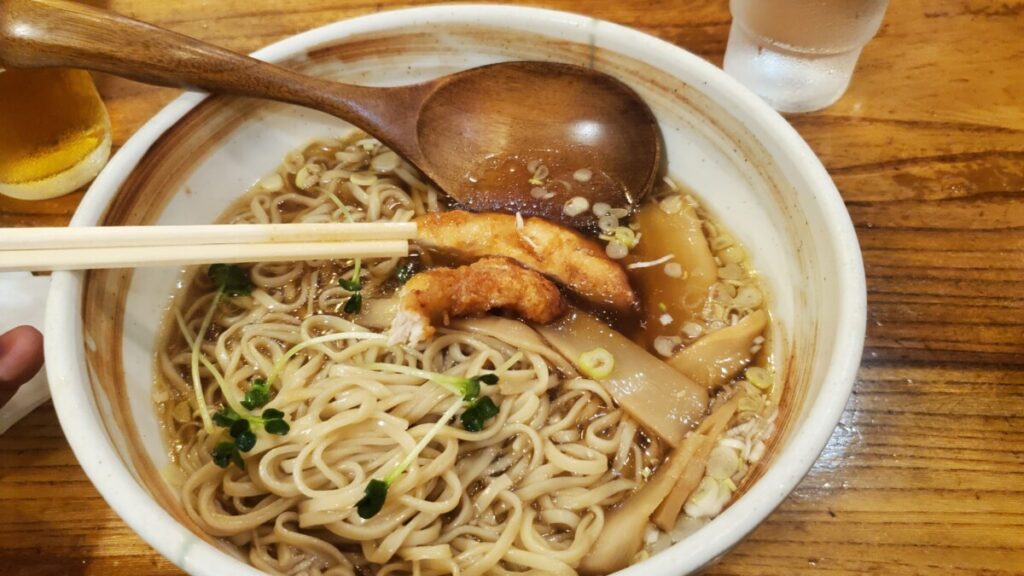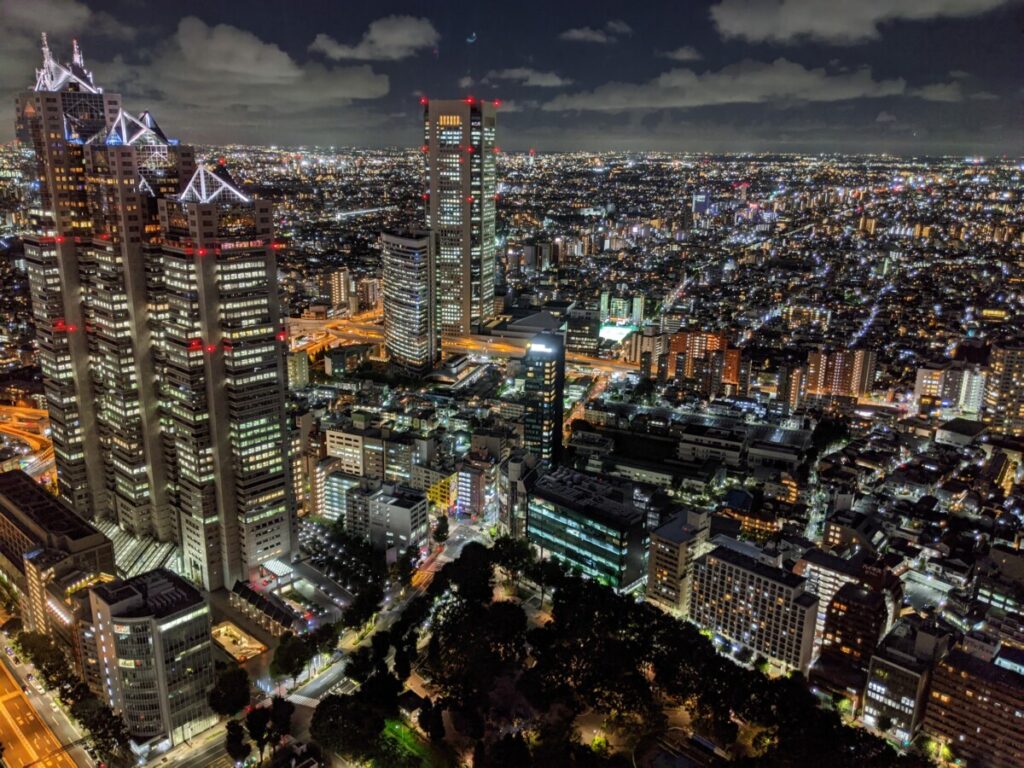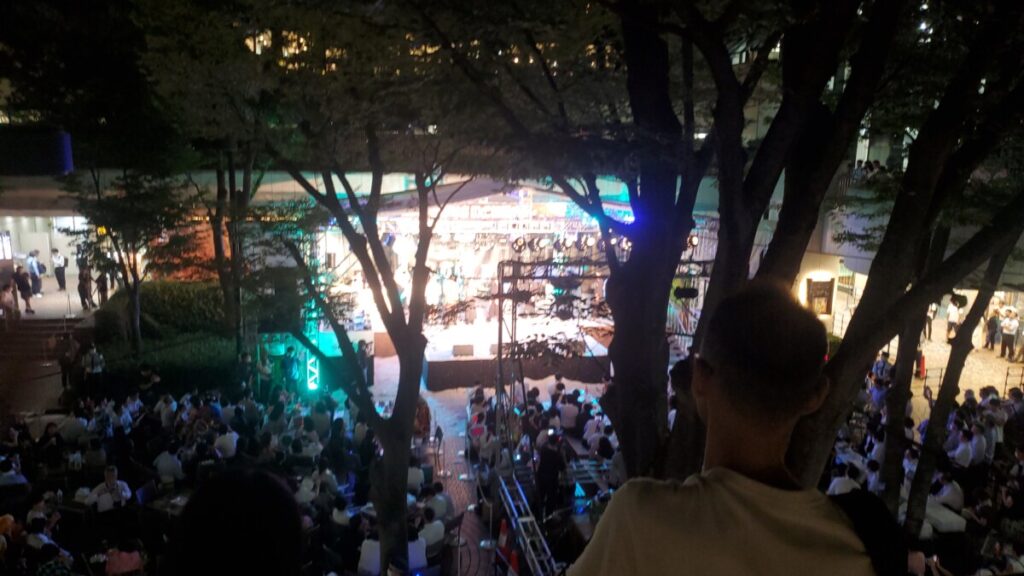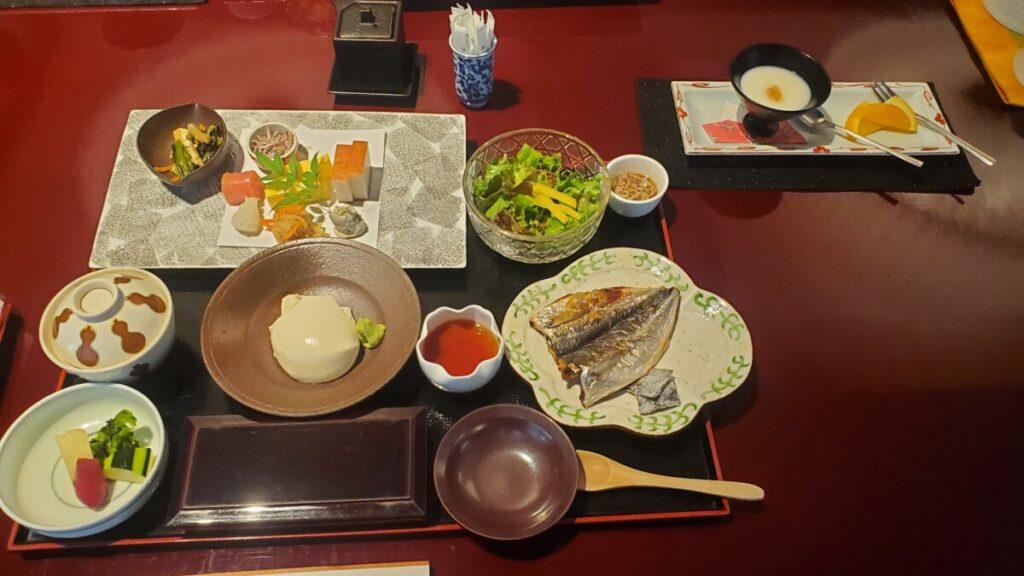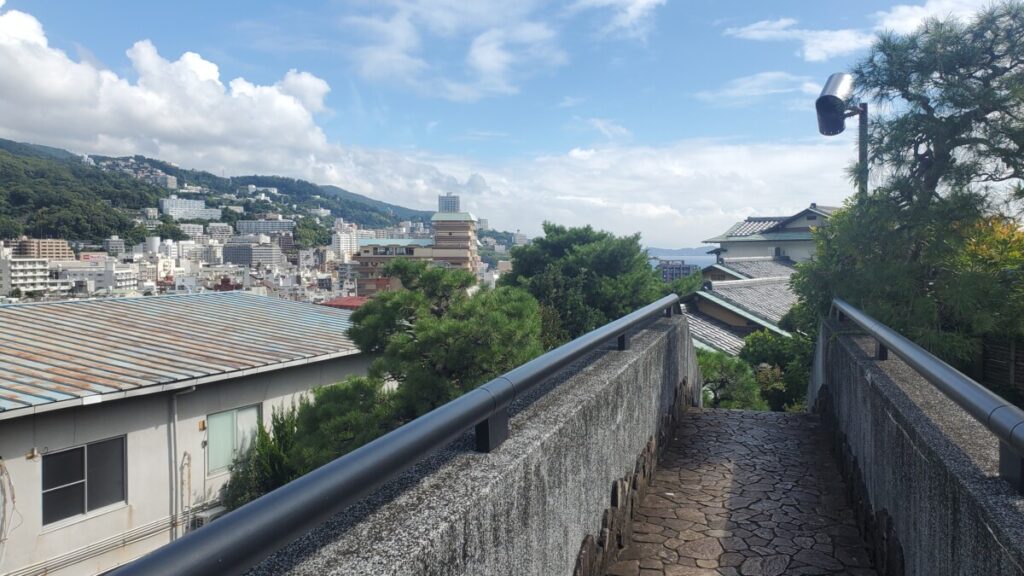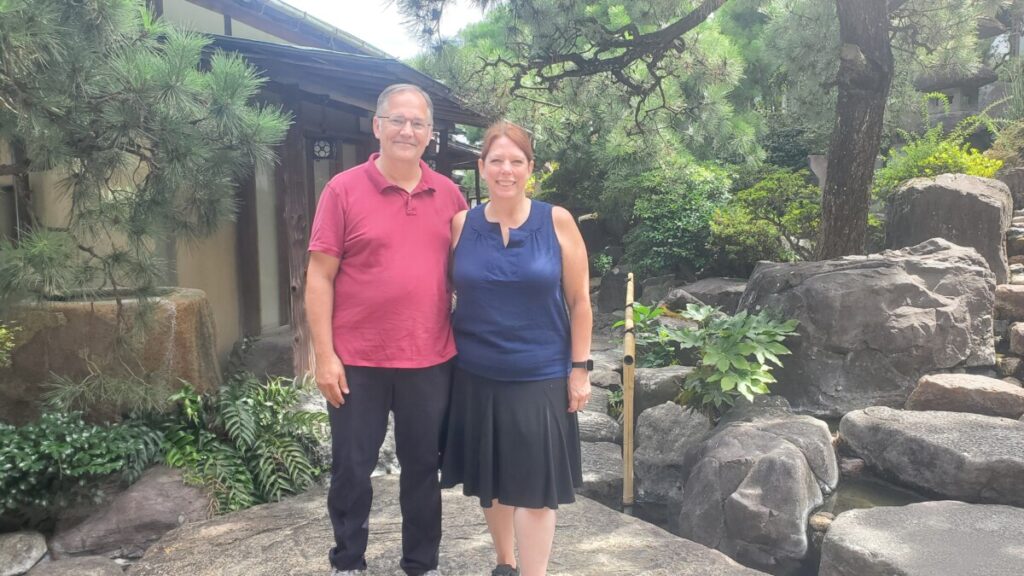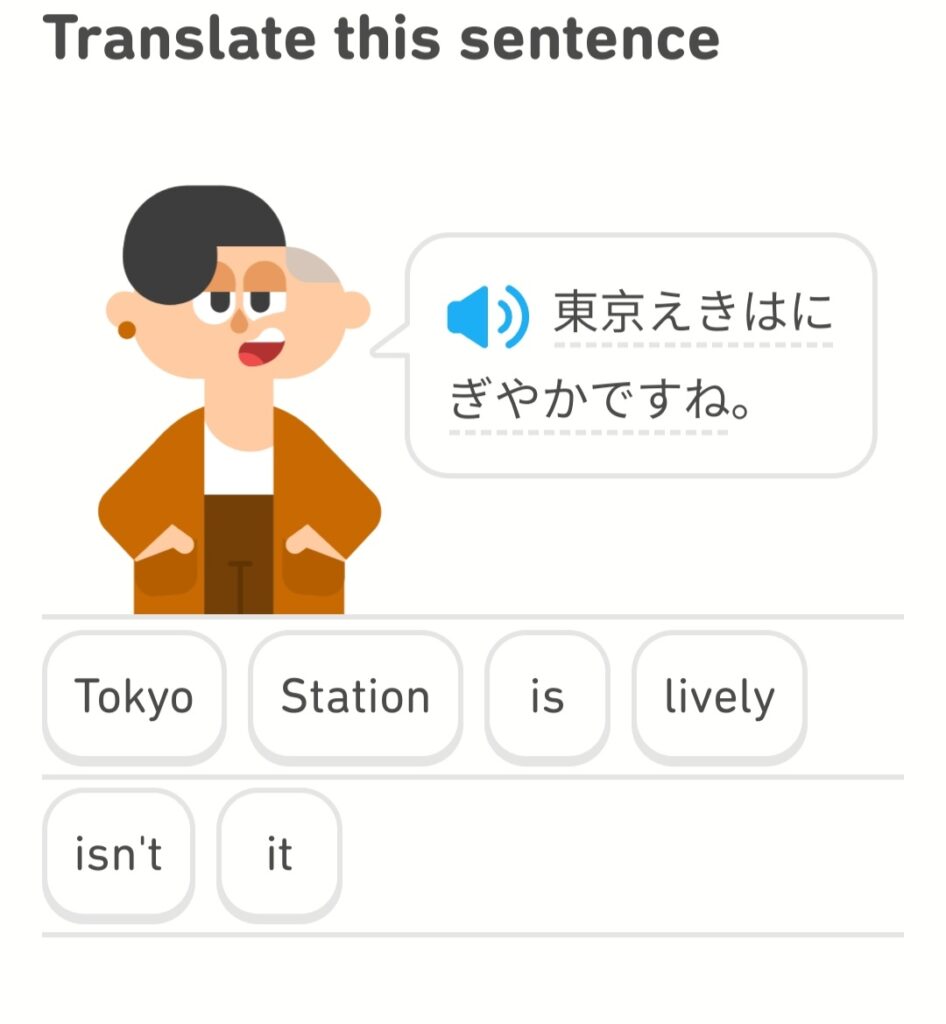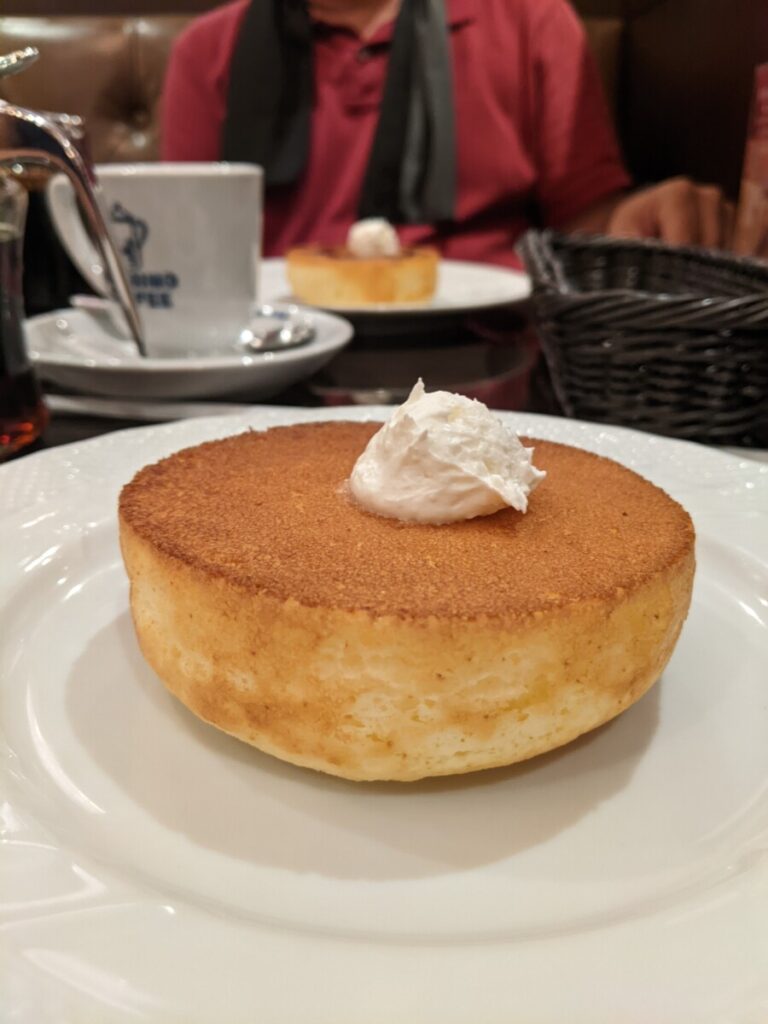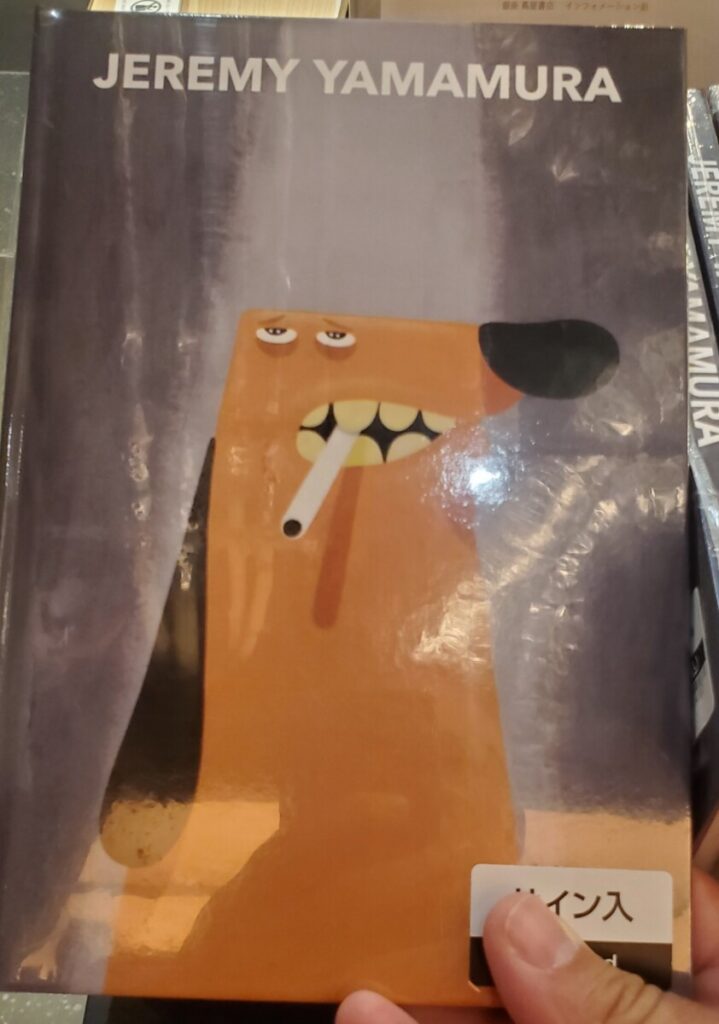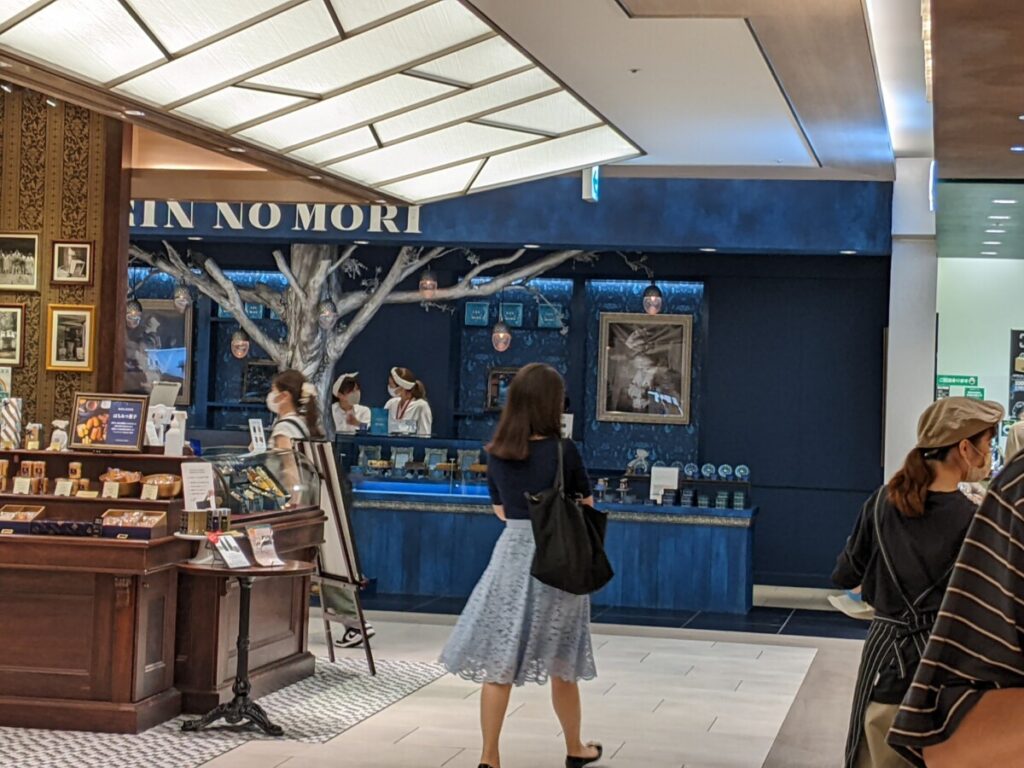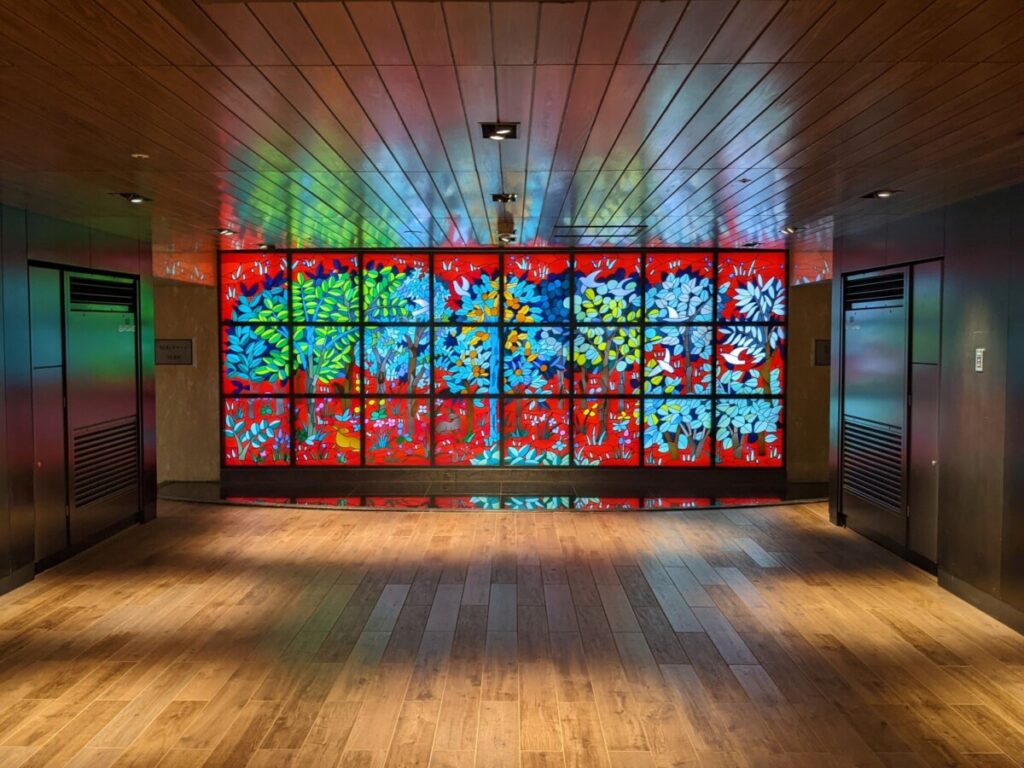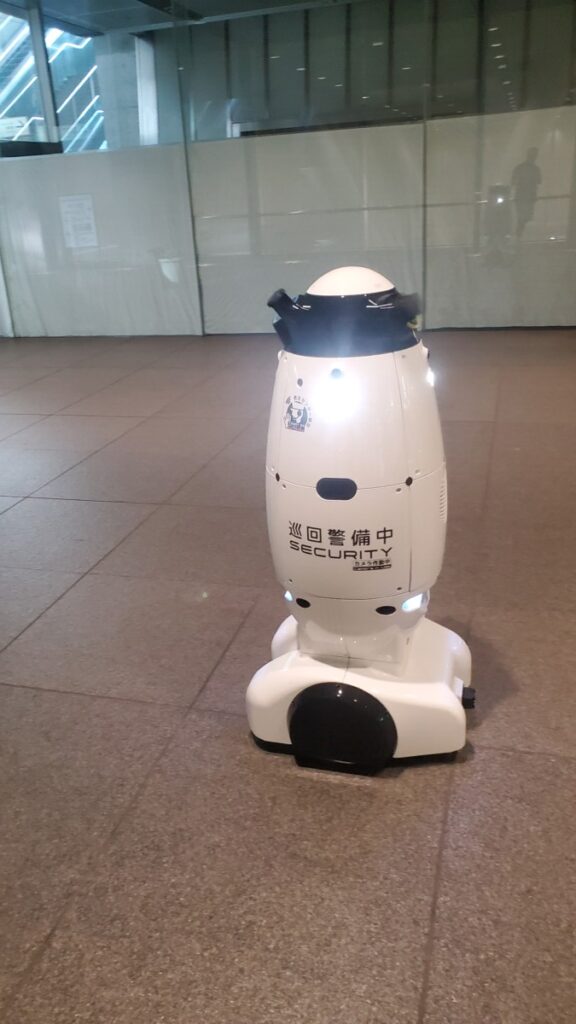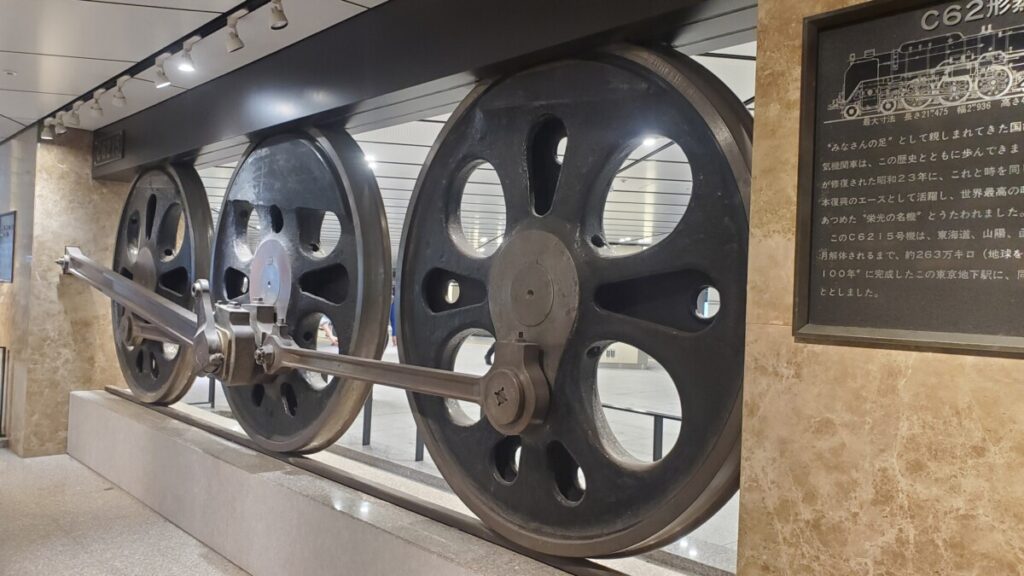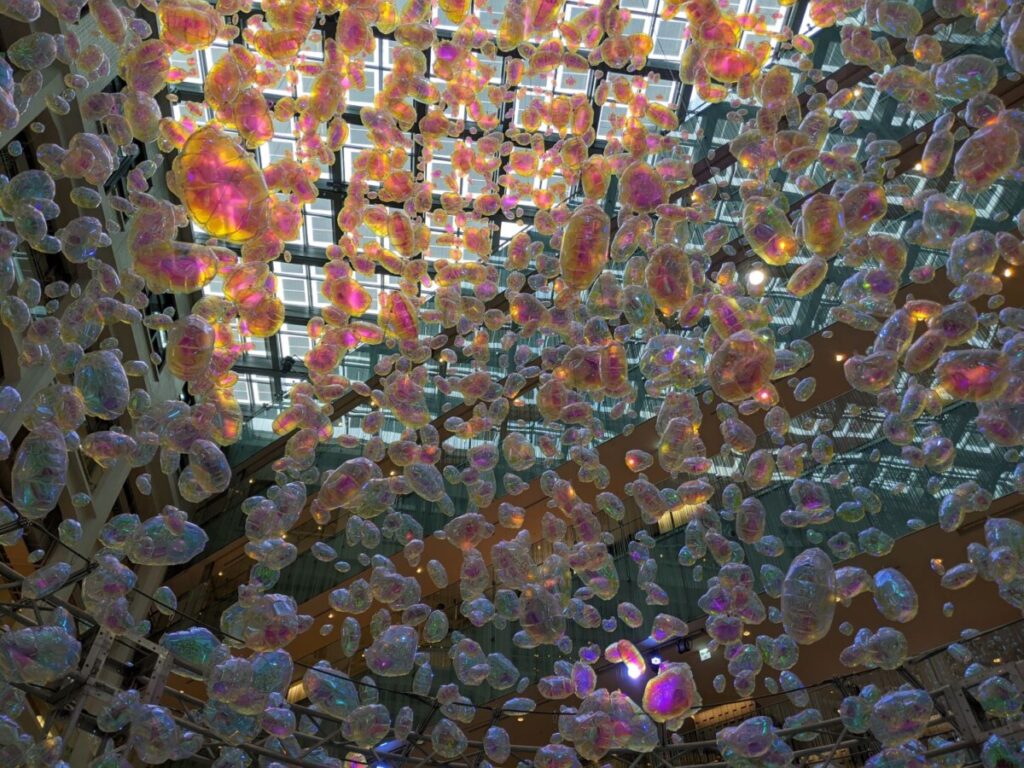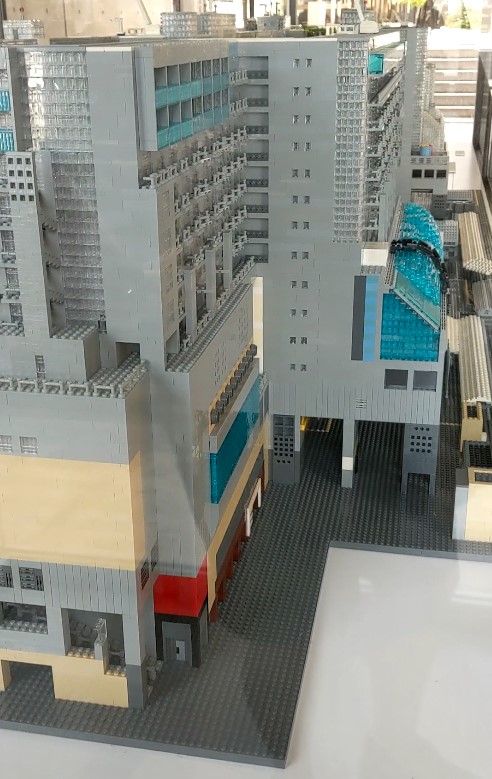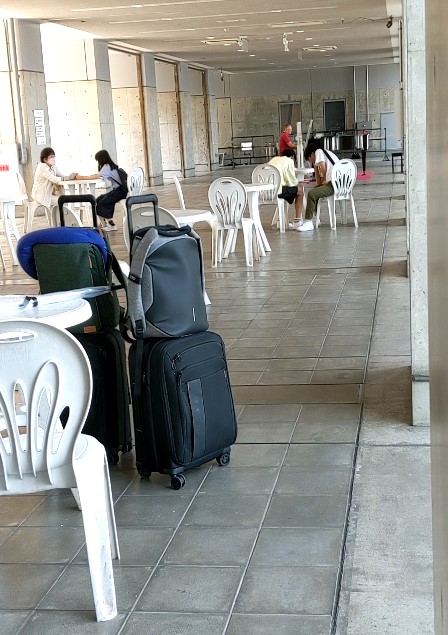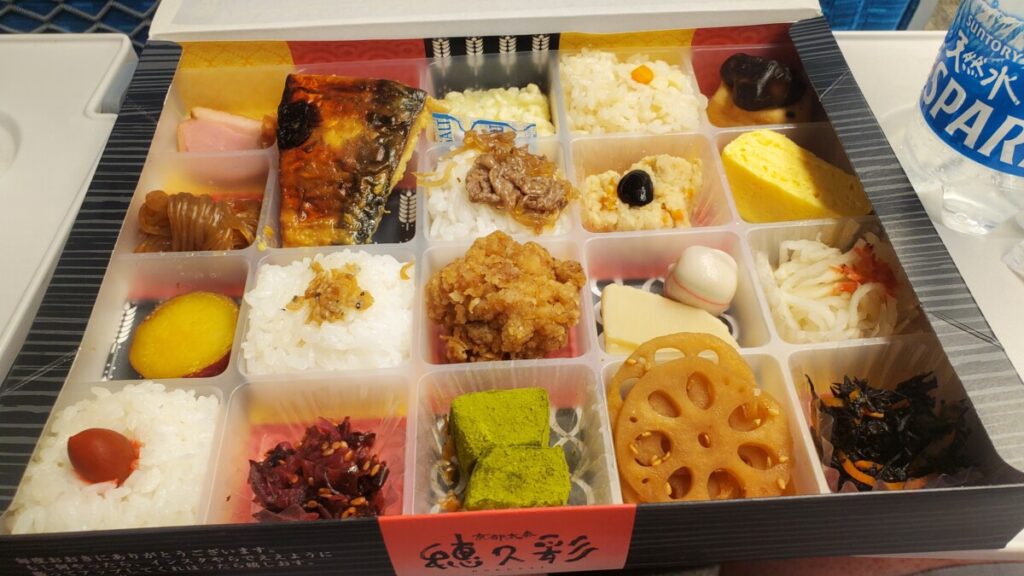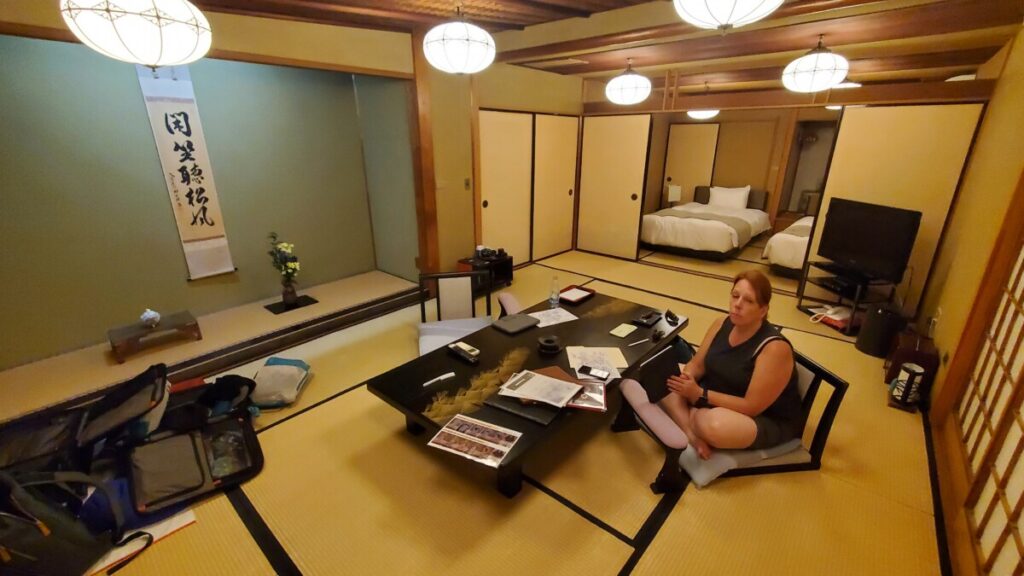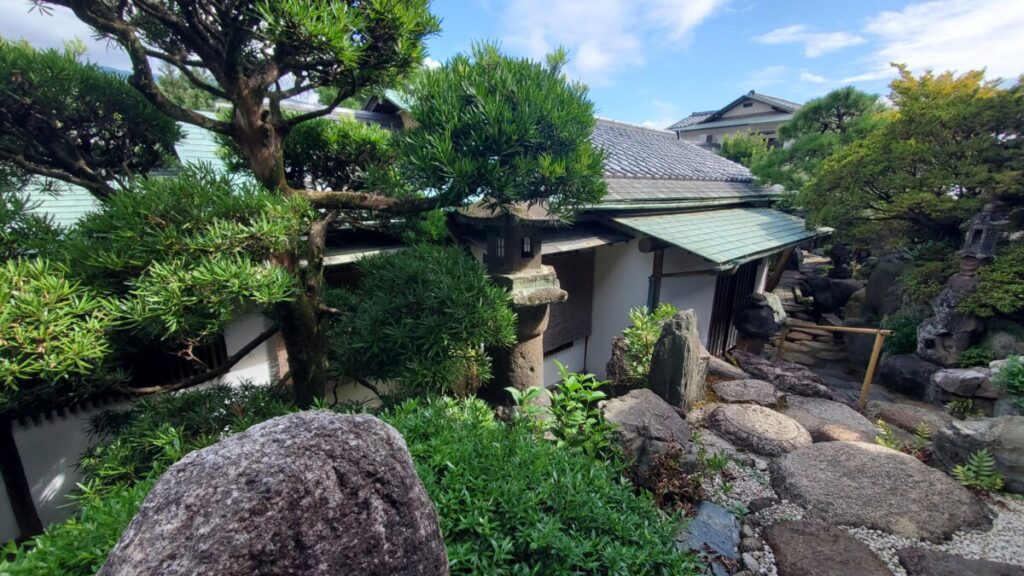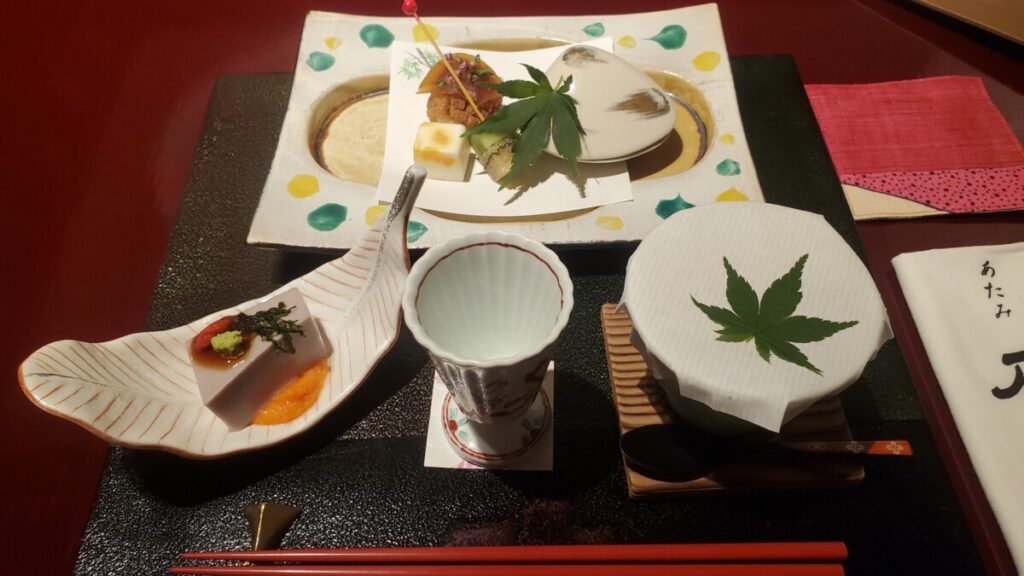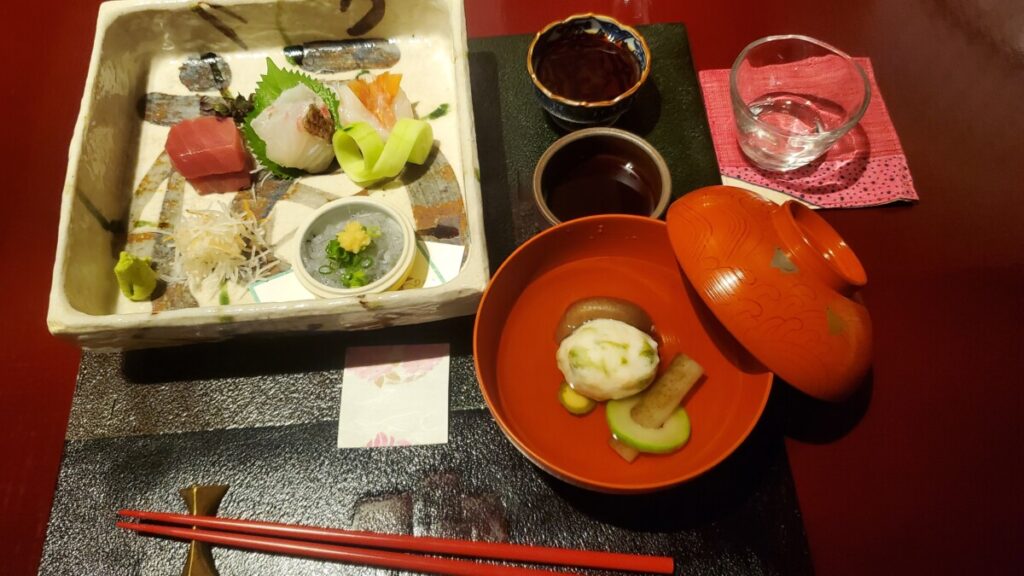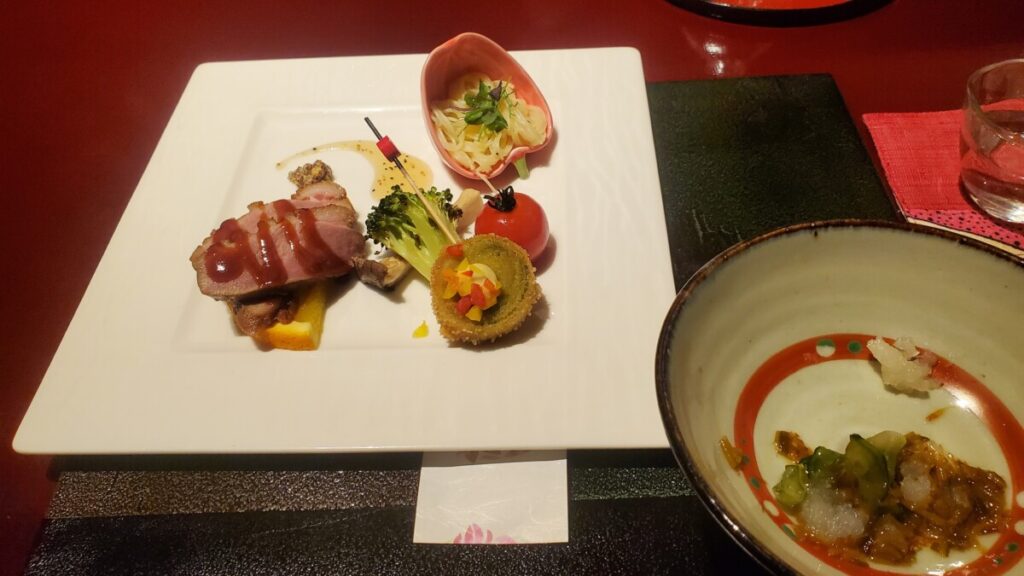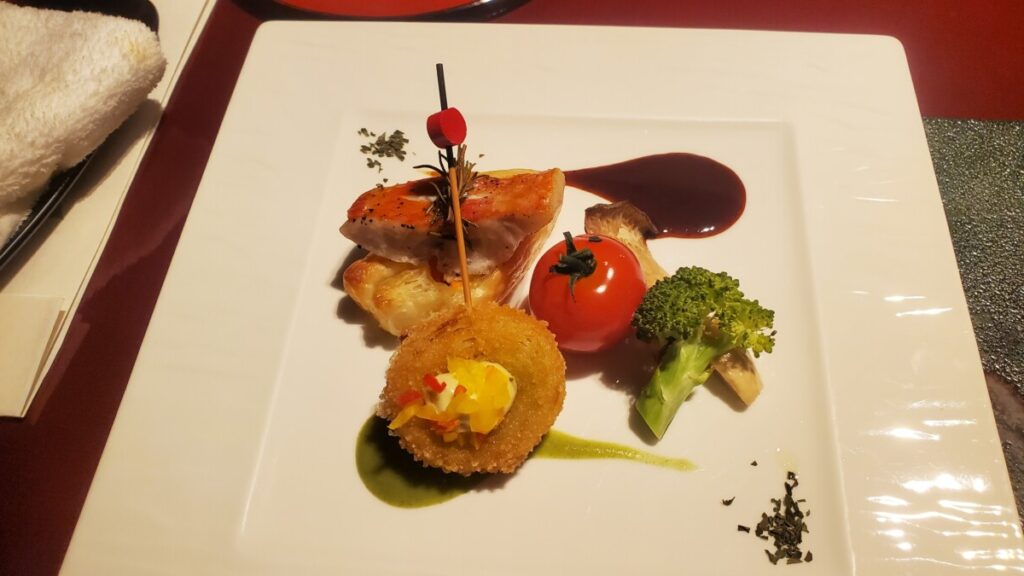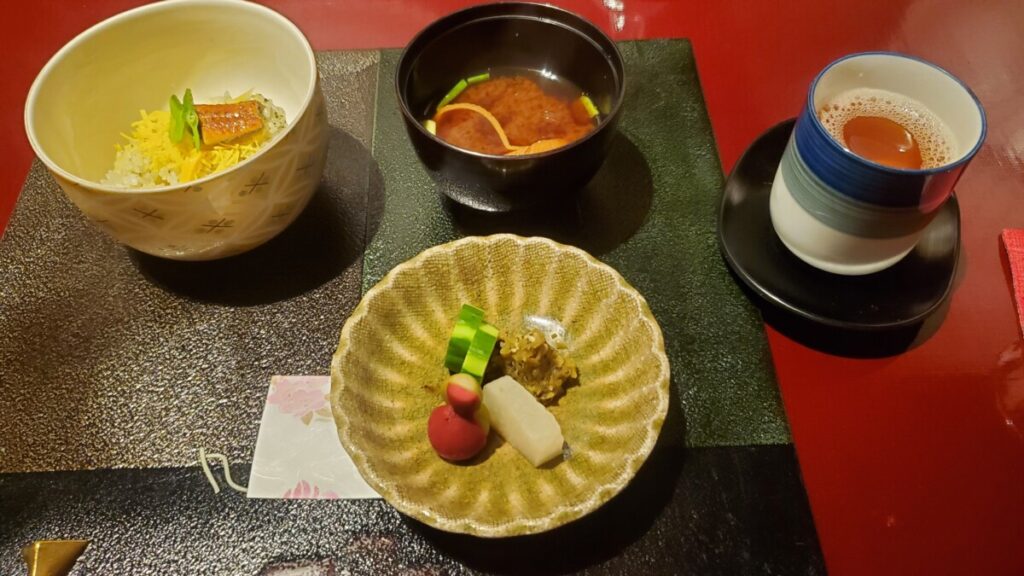Leigh’s conference theoretically had another half day to go, but she had basically conferenced all the conference she was capable of conferencing, so we decided to spend the whole day exploring the city. We started with another delicious train station pastry breakfast, but while we were eating, she spotted an extremely critical item…
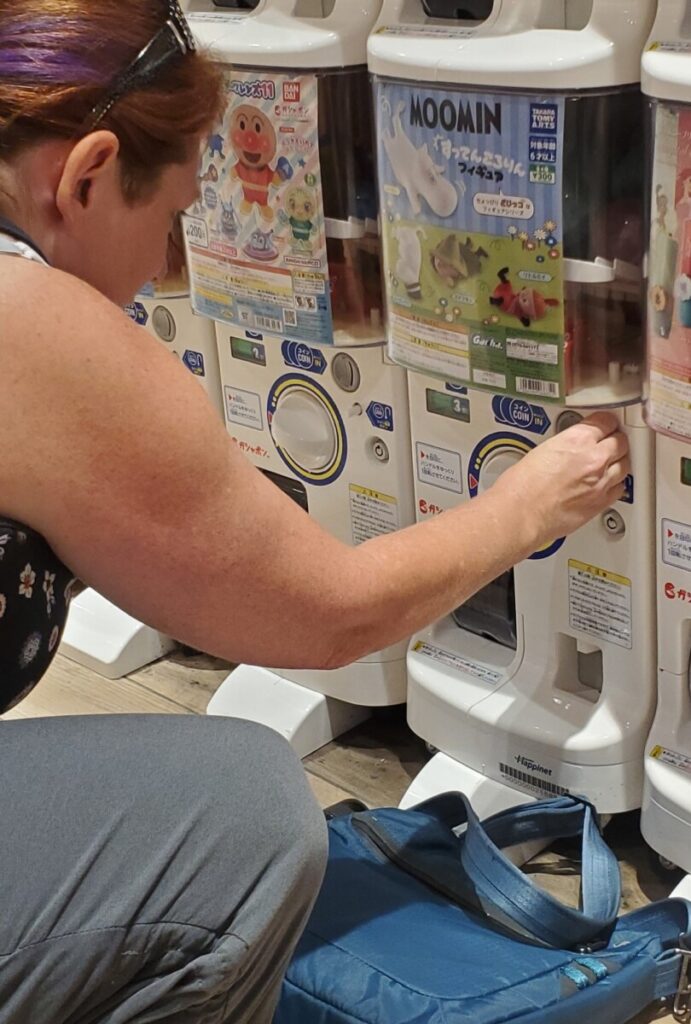
… a Moomin gachapon machine.
Moomin, for those as unfamiliar as I was before meeting Leigh, are a Finnish media property involving creatures that look like Hippopotami, but are apparently trolls. And for some reason, are also located in a gachapon machine in Japan.
She got Little My, in case you were wondering.
Something else I learned while writing this pots. Gachapon machines are named for the “gacha” noise the crank makes, followed by the “pon” noise of the capsule falling into the chute. The more you know…
From there, we headed to one of the major tourist sites in Tokyo, the Senso-Ji temple complex. It’s famous for a reason – the gates and the temples are imposing and beautiful.
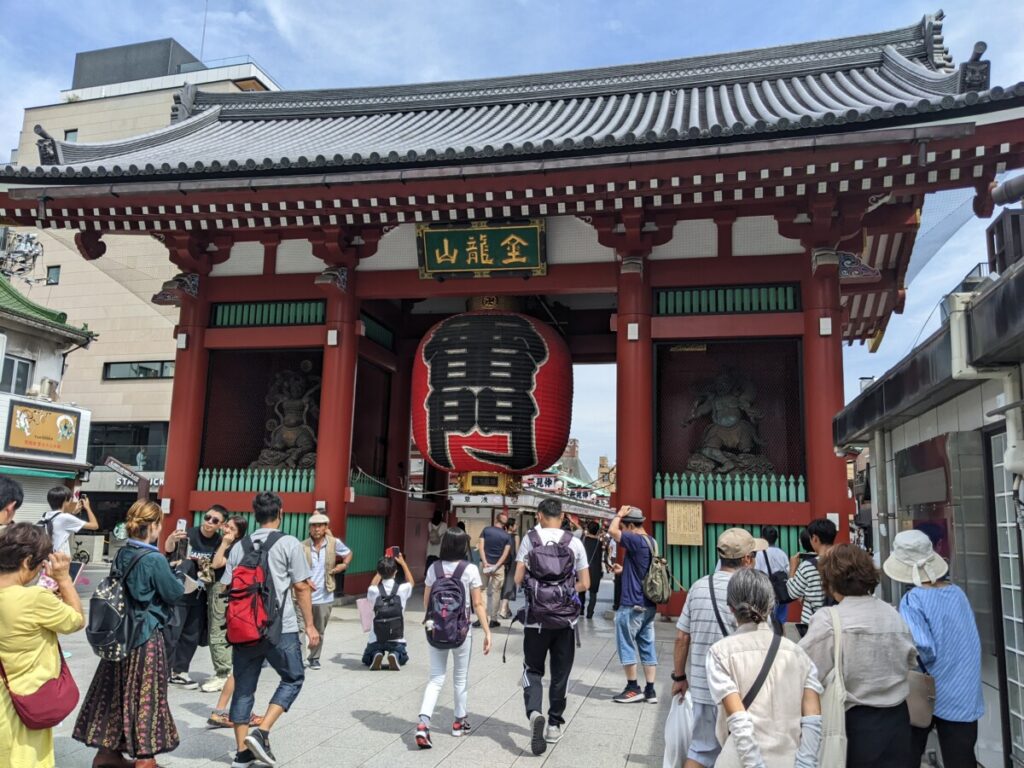
This is the Kunarimon gate, which was originally built in the 10th century. However, this one is from 1960.
The gate leads to a long shopping street, but much less cool than most of the others we visited, as it was more or less entirely geared towards tourists such as ourselves.
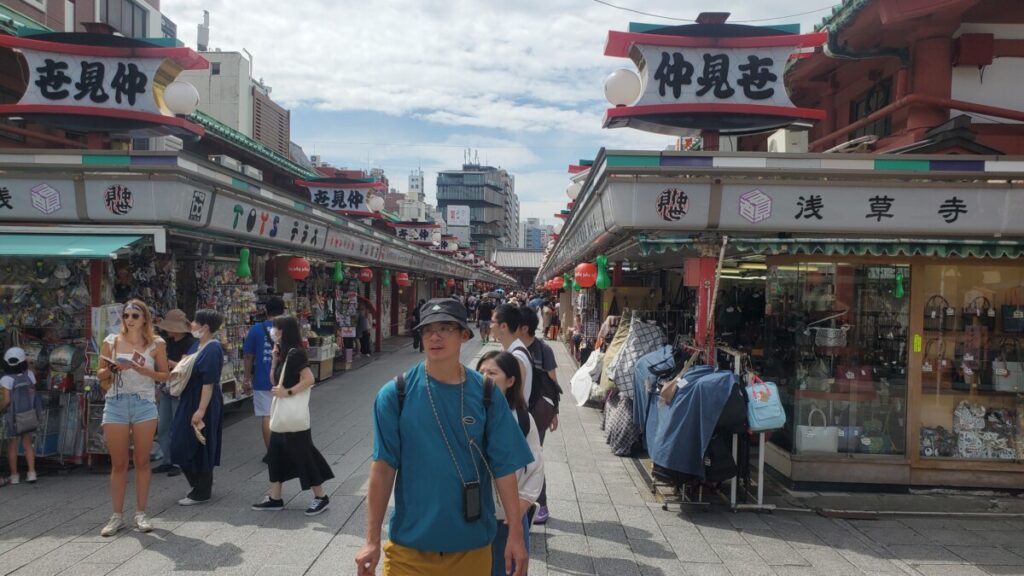
On the other hand, I’ll point out that this street has ALWAYS been geared to tourists visiting the shrine. The only difference in the modern incarnation is that there’s more T-shirts and fewer… not T-shirts? I don’t know what Edo period tourists would have considered a desirable 安ぴか. (What Google translate assures me is Japanese for “tchotchke”)
At the far end of the street is another massive, imposing gate.
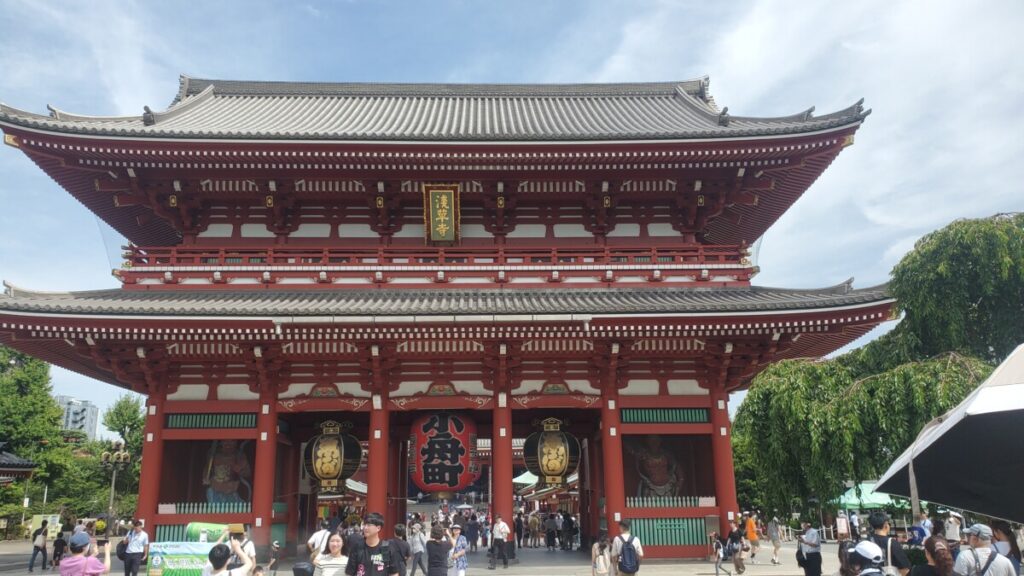
Again, while the original dates from the 900s, this steel-reinforced concrete structure was built in 1964.
I don’t mean to be glib. The REASON this structure had to be rebuilt was World War II, which obviously no joking matter. (Although the previous Edo structure, was also built to replace the one before THAT that was destroyed in a different fire.) It’s just a consistent pattern in Tokyo that you can appreciate the incredible architecture of these structures, while bearing in mind that they are copies, and also thinking about why these copies exist.
Inside the second gate was a number of shrine buildings, which were all quite packed, so we were startled to find a nice quiet little garden only steps away that we more or less had to ourselves.
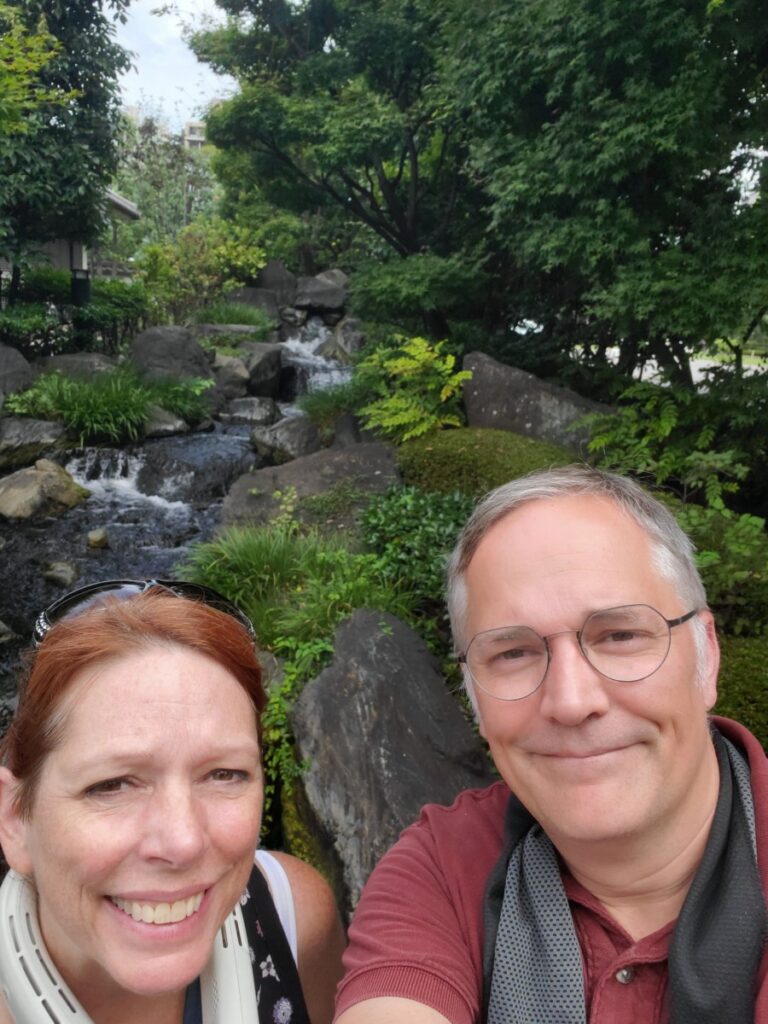
We also got a fortune from the fortune telling machine. You shake a stick out of a container of sticks, and them open the drawer corresponding to the number on the stick and take the fortune. Ours was a BAD fortune, so we left it behind, tied to the structure placed there for precisely that purpose.
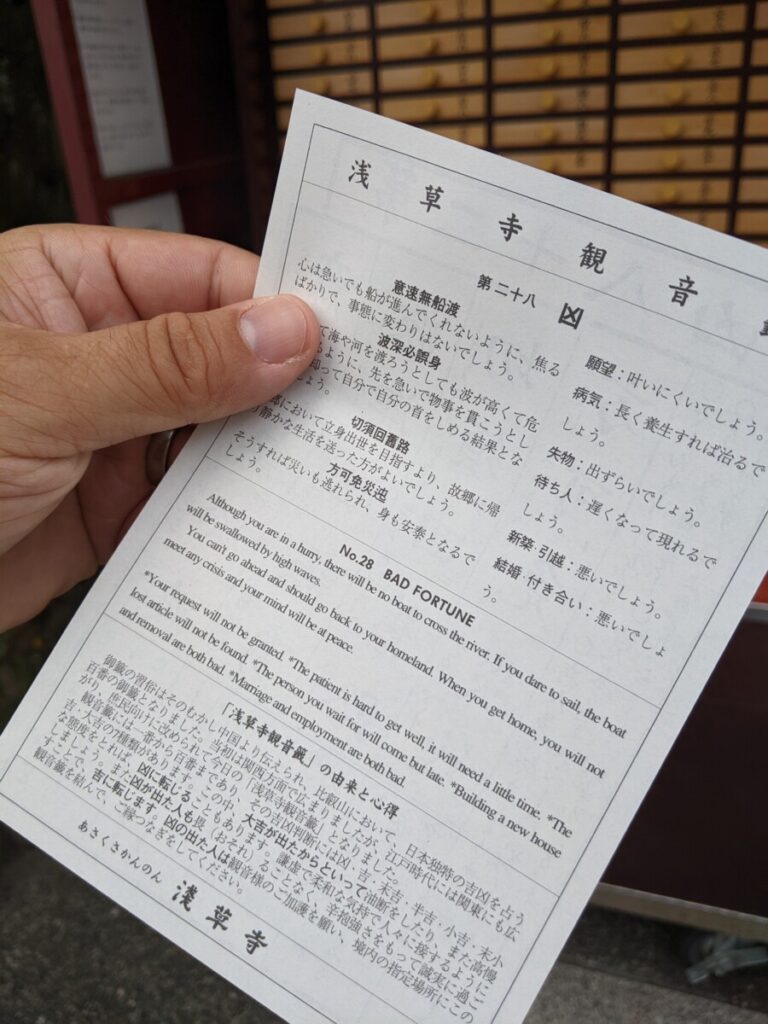

Also in the vicinity we found this interesting grave, which is apparently for a famous early 20th century actor and comedian named Soganoya Gokuro. (The birds aren’t real, but – are any?)
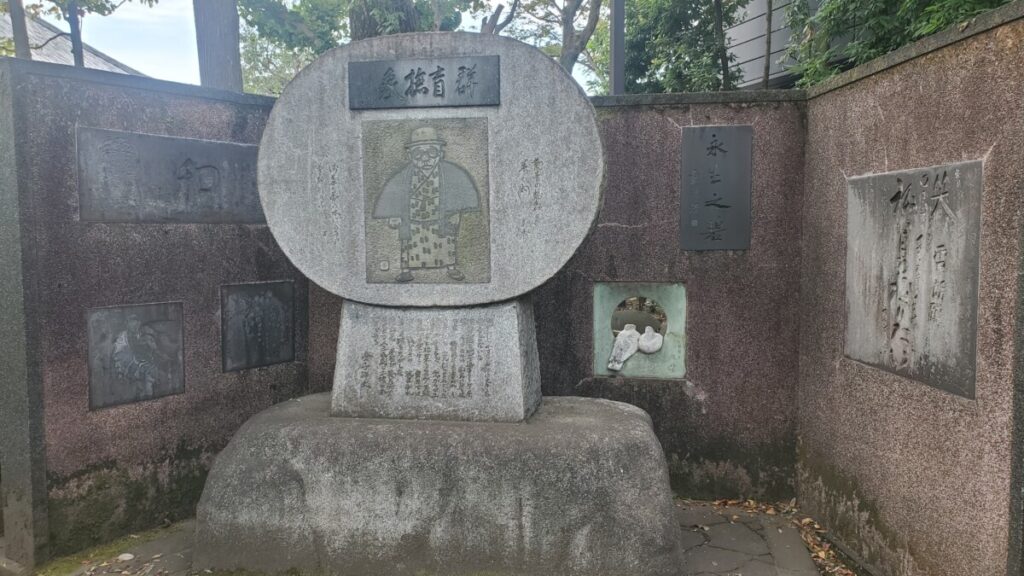
After wandering around a bit more looking at the other shrines and graves in the vicinity (including a sign for a ceremony for blessing pins and needles) we started moseying back towards the metro station, at which point I decided to follow the coordinates for a geocache. They led through this tunnel, which I GUARANTEE was only ever visited by tourists if they were looking for the same cache we were. Leigh can’t say I never take her any place unique.
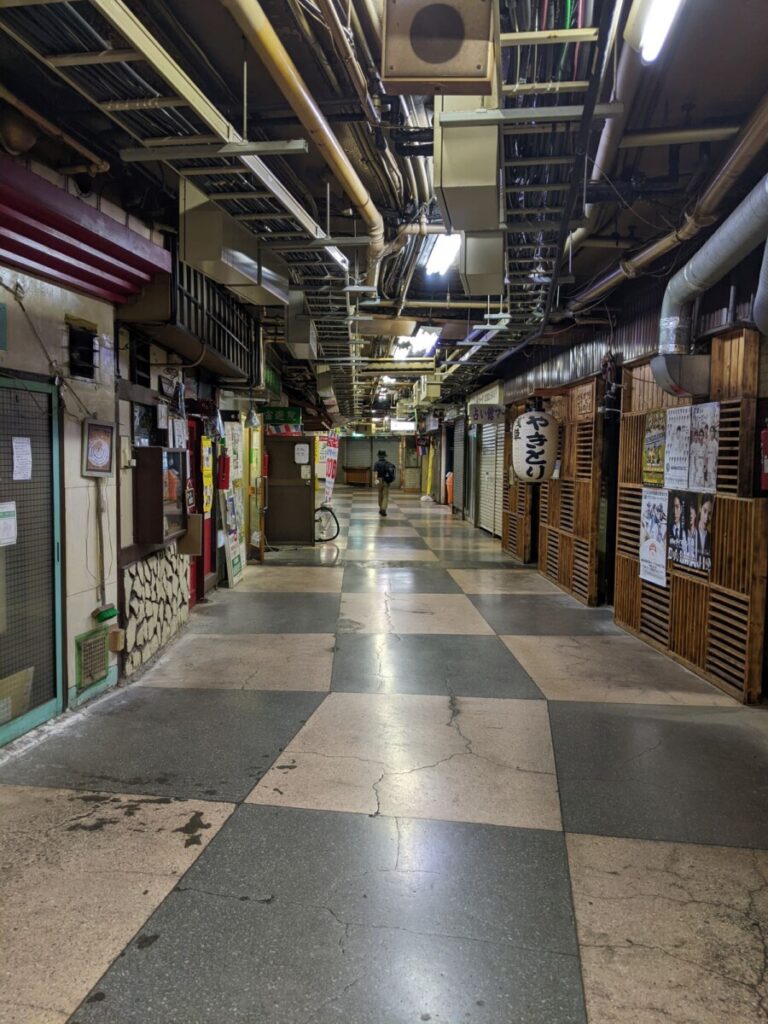
But we did find the cache, and ended up walking along the river a little bit. This is the Tokyo Skytree and the headquarters of the Asahi beer company. (Which is which is left as an exercise to the reader.)
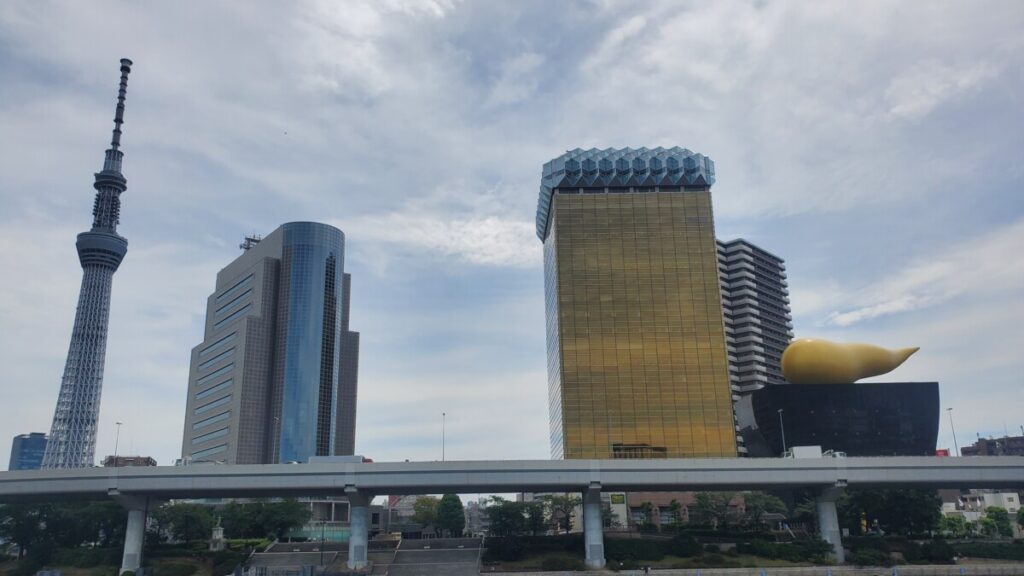
And after that, we were off to our next stop – Akihabara! Known as “electronic town”, Akihabara is famous for arcades, electronics stores, and anime and manga merchandise. It’s also back in the penumbra of the curry district, so after perusing a little arts and crafts arcade for a bit, we did that for lunch.
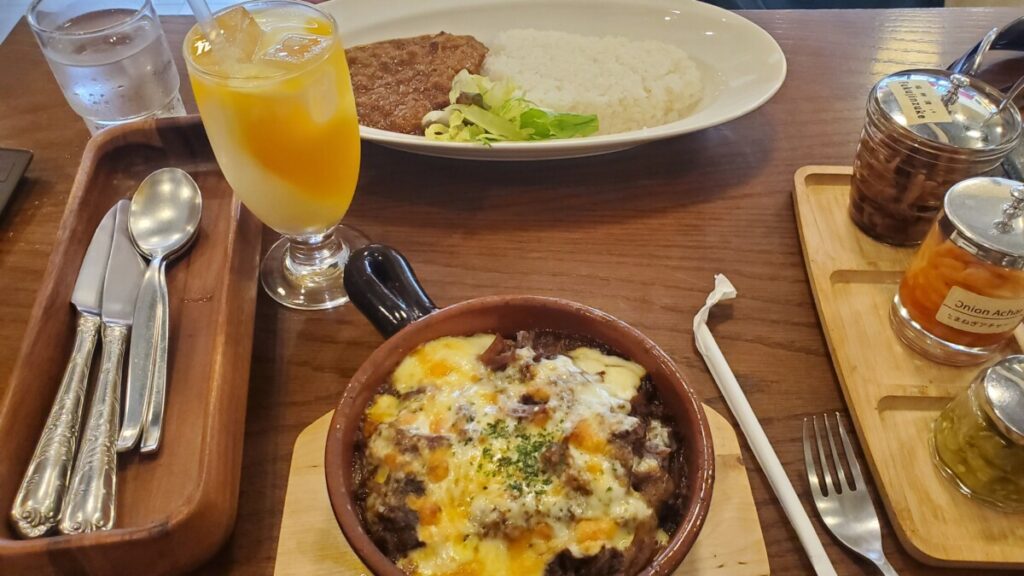
I’ve not had cheese on a curry before, but I regret NOTHING.
There’s a large shrine in Akihabara called Kanda shrine, which is in many ways similar to the other ones we’ve visited. However, there was one really neat feature that we learned about once again from the “History of Japan” podcast.
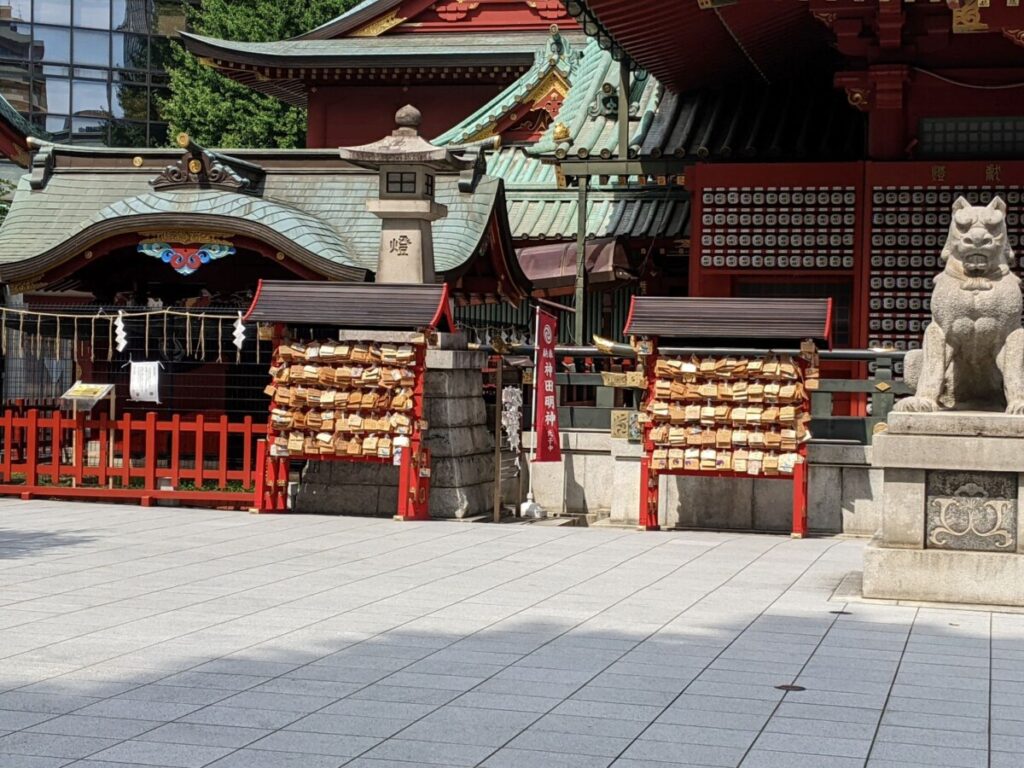
The tablets you see in this picture are a standard feature at shrines and temples around Japan. Visitors will write wishes on them for benefits from the resident deity. Some of them are simple things like “I want to do well at school this semester,” while others are quite poignant requests from folks with a lot of terrible stuff going on. Because of the latter category, we opted not to photograph these from any closer in, but what makes Kanda unique is that a LOT of the tablets here have art on them!
Akihabara is not only the district where a lot of anime merchandise is sold, it’s also home to some of the animation studios where it is made, and there’s really impressive artwork on a number of these tablets.
We did visit one other shrine in Akihabara, at the absolute other end of the imposing spectrum.
You know “Up?” The Pixar movie that you can never, ever, watch a second time because of the first ten minutes? The one where they build an entire skyscraper around Ed Asner’s house, because they can’t get rid of it?
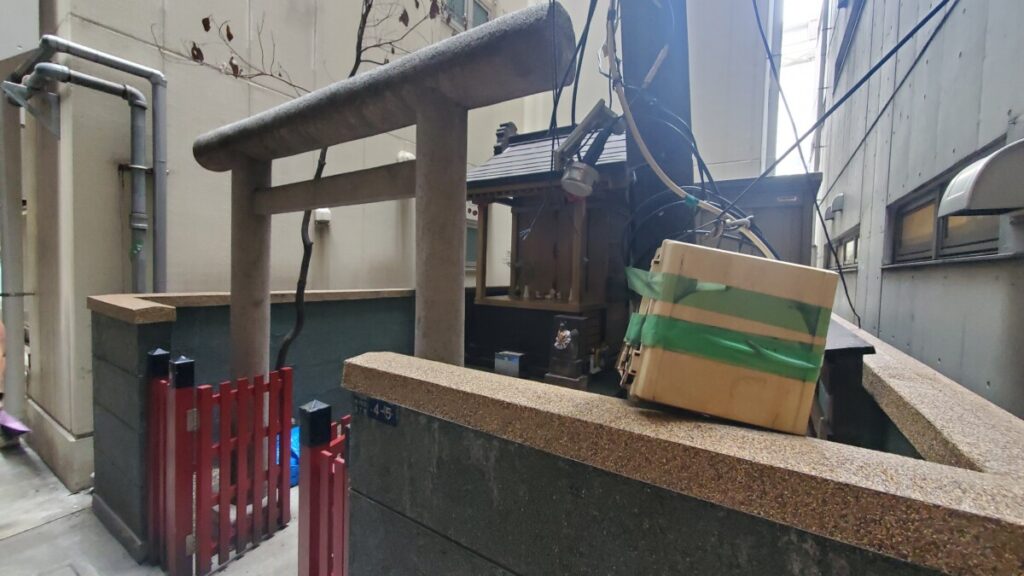
This is the Hanabusa Inari shrine. It has been here significantly longer than any of the surrounding buildings. It’s in a tiny space between two buildings, located off a narrow alley located off an only slightly less narrow alley. It’s pretty damn cool, isn’t it? It’s apparently dedicated to a spirt of food.
I suppose we should post a picture of Akihabara itself, too.
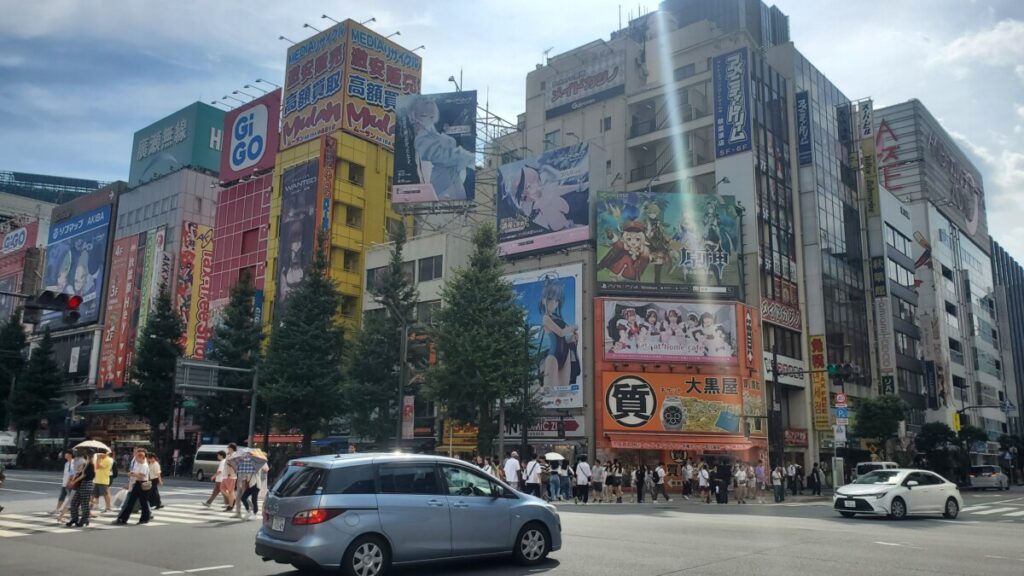
Yep. Pretty much exactly as advertised. We did go into some game, electronics, and anime stores, and they were fun to poke around in, but mostly didn’t allow pictures. We played a … what’s the opposite of virtual? Actual Reality? Virtual Virtual Reality?
Anyway, we played Pong with real pieces.

You spun the knob, and the physical paddle physically moved and utterly failed to prevent the physical ball from scoring.
We also went to an arcade with a lot of rhythm games, and had fun trying to figure out how they worked while local teenagers next to us were playing so fast I’m surprised they weren’t giving off Cherenkov radiation.
We needed a break at this point, so we went and had some NON blue beer at a local brewery located under a train bridge. After this it was time for dinner, and we spent a while trying to locate a restaurant recommended by a friend of ours on the Discord for the Youtube channel “Chinese Cooking Demystified.” (Great channel, you should watch it. Start with “Old Buddy Noodles.”)
Tokyo is absurdly dense. We finally realized the restaurant we were looking for was in a four story building with a tiny restaurant on each floor surrounded by uncountable other buildings with restaurants on every floor. The one we wanted was on the third floor, had eight seats, and served one of the most amazing pork bowls I’ve ever had. Which, including the beer, came to less than ten bucks.
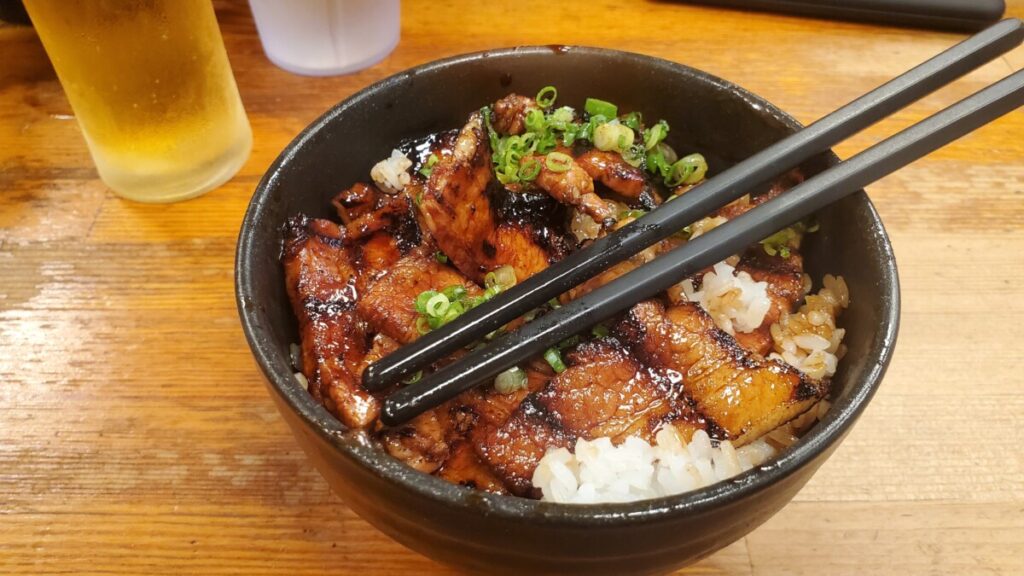
While at the pork bowl place, we started looking at tickets for an art exhibit we had been considering, and realized that we could get in that evening if we bought the tickets online and hustled. So we did.
This exhibit is called “TeamLab Planets.” Most stuff we did in Tokyo was actually pretty cheap – even the National Museum was only about ten bucks to get into. This was closer to forty per person. And VERY certain of its own profundity.
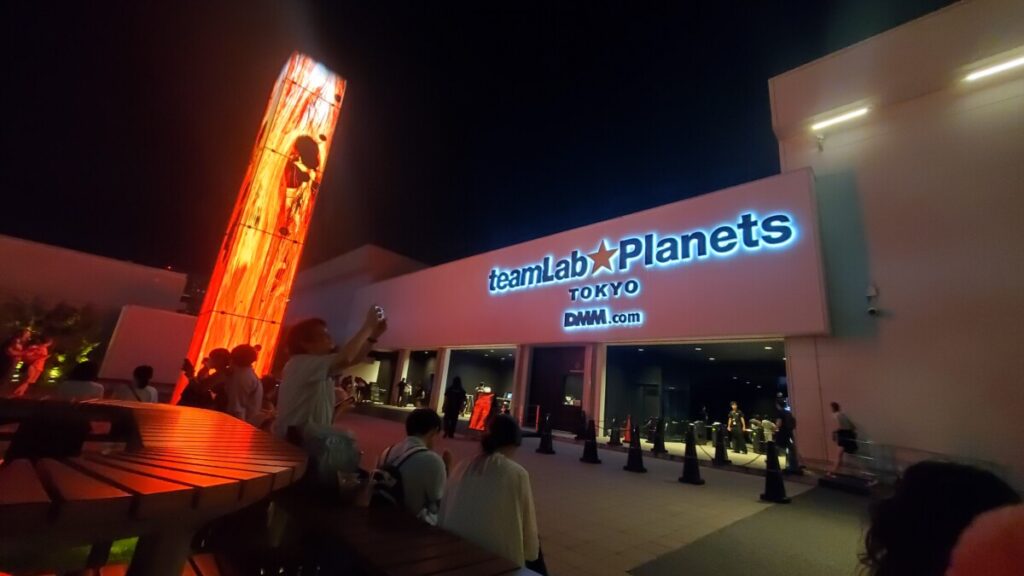
We were informed that we were going to be connected to the experience of the shared humanity of… whatever. Something. The verbiage was too pompous to take seriously, but the actual exhibits were pretty neat. Plus, it was fun trying to photobomb wannabe influencers’ selfies.
This one felt like you were in the middle of a 3D starfield.
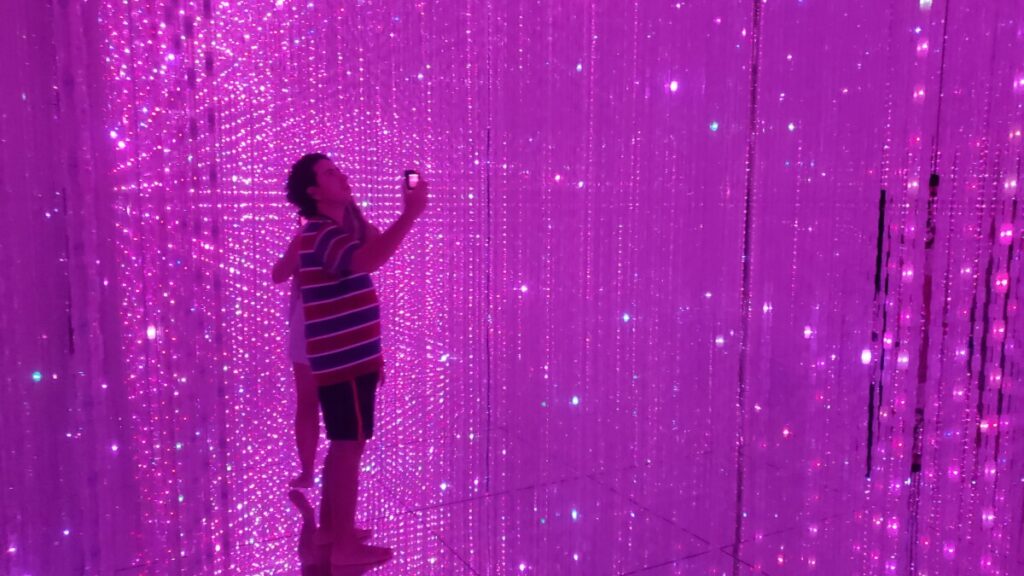
This one had you wading through water with fish projected on it.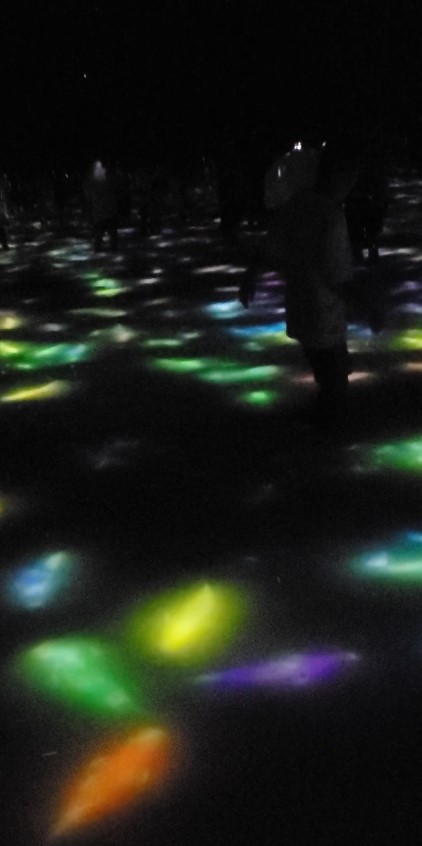
This one had giant balls.
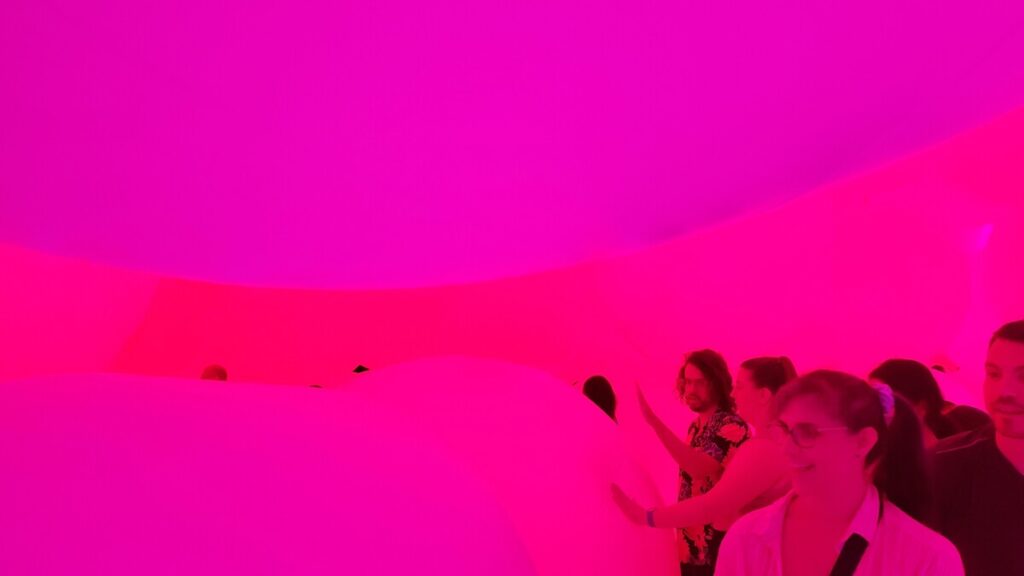
One of the most interesting, though, was a room full of orchids trained onto strings, which automatically lifted out of your way as you walked toward them, and lowered behind you, so you were always surrounded by orchids.
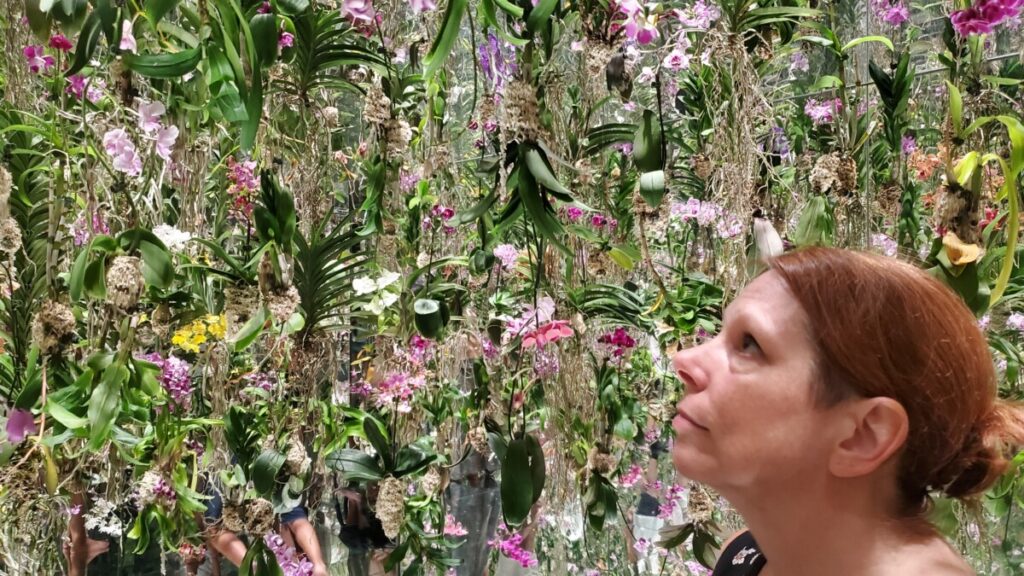
Overall, a very cool experience, as long as you didn’t take it too seriously. In other words, do NOT take it as seriously as it takes itself.
Whew. What a long day!

